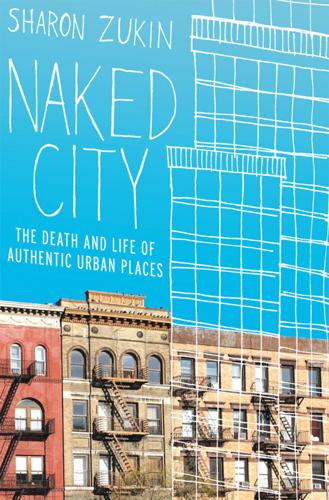
Naked City: The Death and Life of Authentic Urban Places
by
Sharon Zukin
Published 1 Dec 2009
But the gradual reshaping of the dark ghetto’s physical environment—and the winnowing of its population as well—continues to erase Harlem’s contentious history. Yet this is not the only old neighborhood where the urban imaginary is being revised. This happens in the East Village in Lower Manhattan, too, where artists, actors, low-income residents, and students consciously evoke the ghosts of a radical past to battle gentrification. In the East Village the slogan of the day for many years has been “Die, yuppie scum.” 3 Living Local in the East Village I think there are unbelievable things that are going on in Lower Manhattan. The deli is gone, and the BMW is in. —New York Times, May 30, 2007 You’re waiting to meet the Japanese college students at 10 A.M. on the corner of Broadway and Astor Place.
…
Now, though, after decades of anchoring the loose lifestyle of the 1960s, the East Village’s quirky shops and poets’ cafés are being overwhelmed by trendy restaurants, chain stores, and expensive, renovated apartments. New residents and visitors are literally consuming the local. Across the street from the schmaltz herring store, they sell raspberry apple cider. Next door to the herb teas and unsulfured dried fruits, sfogliatelle and cannoli are dispensed just as they have been since 1904. —“East Village Food: Tradition and Change,” New York Times, November 16, 1985 You cannot know the East Village without knowing its local history, and there’s almost too much history for any one neighborhood to have.
…
Although the rent-controlled apartments all bring in less than two hundred dollars a month, rents on the destabilized units are ten times higher. No wonder the class world of the East Village has tilted toward gentrification.16 Shop owners insist, though, that the block still has an “authentic” East Village feel. “The past is here,” Eleanor says, contrasting East Ninth Street with shopping streets on the Lower East Side and with SoHo. “I like it very much that it is not totally upscale. Not like in SoHo. There are stores that have been here for twenty years.” But since Eleanor found the East Village upscale enough to move her shop here in 2001, the block must have found a balancing point between class worlds on which it, like the Astor Cube, is tenuously perched.
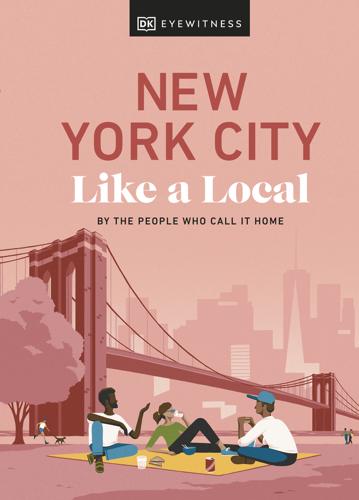
New York City Like a Local
by
Dk Eyewitness
Settle in at VESELKA 144 Second Avenue, East Village; www.veselka.com ///drag.dates.broker Still hungry? Stop for a couple of pierogies at this 24/7 Ukranian diner, which is just as busy at noon as 2am, when the post-party crowds stream in. 4. Amble through LITTLE TOKYO Stuyvesant & East 9th streets; East Village ///facing.jabs.code Follow your nose as you walk through this ’hood within a ’hood, where sushi joints and bubble tea shops pepper the scene and the tempting smell of ramen fills the air. 5. Pay homage to JOE’S PIZZA 150 East 14th Street, East Village; www.joespizzanyc.com ///bonus.stews.piles For an authentic NYC experience, scarf down a folded slice of the city’s favorite pizza from Joe’s Pizza – it’s unpretentious and truly iconic. 6.
…
{map 4} Dumbo Mercifully shortened from “Down Under the Manhattan Bridge Overpass,” Dumbo epitomizes Brooklyn’s creative character. Trendy and innovative, the area is awash with cool art spaces and start-ups housed in converted warehouses, plus foodie mecca TimeOut Market. {map 5} East Village Once the heart of the city’s punk scene, the East Village is now the turf of young professionals who love the remnants of its grungy past. Weekends are spent combing the area’s thrift stores for a bargain and reveling in its top-notch nightlife. {map 2} Flatiron District The clue’s in the name: this is the home of the iconic Flatiron Building, which watches over workers hot-footing it to the office in this busy business hub.
…
Oh, and the baked goods – like the decadent Brooklyn blackout cake and vegan salted chocolate chip cookies – are incredible. g Sweet Treats g Contents Google Map VAN LEEUWEN Map 2; 48 1/2 East 7th Street, East Village; ///blend.match.bump; www.vanleeuwenicecream.com Even on subzero winter days, you’ll see people crossing the threshold here for a taste of Van Leeuwen’s honeycomb or Earl-Grey-tea ice cream. What began as a single ice-cream truck dedicated to naturally sourced ingredients is now an ice-cream empire with an especially strong vegan following. Line up alongside East Village’s hip locals before enjoying your chosen flavor at nearby Tompkins Square Park. » Don’t leave without trying a scoop of the vegan mint chip, one of the many excellent milk-free options.
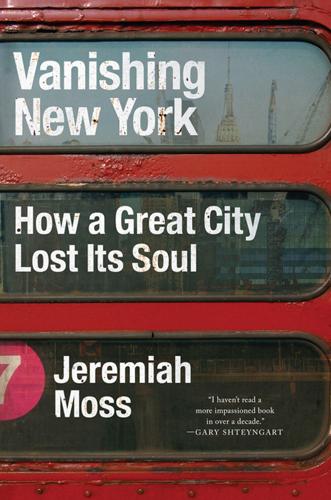
Vanishing New York
by
Jeremiah Moss
Published 19 May 2017
INTRODUCTION 3Bryan Waterman, The Cambridge Companion to the Literature of New York (Cambridge and New York: Cambridge University Press, 2010). 3–4Caleb Carr quoted in “Talking Bloomberg,” New York Times online, August 16, 2013; Patti Smith in conversation with Jonathan Lethem at the PEN America World Voices Festival, Cooper Union, May 1, 2010; David Byrne, from “Will Work for Inspiration,” CreativeTimeReports.org; David Rakoff, from “Isn’t It Romantic,” in Half Empty (New York: Anchor, 2011); Adam Gopnik, from “Gothamitis,” The New Yorker, January 8, 2007. 6Joseph Mitchell, excerpt from unfinished memoir, The New Yorker, February 11 and 18, 2013. 1 THE EAST VILLAGE 15“The East Village was not always the East Village.” See Jesse McKinley, “F.Y.I.,” New York Times, January 1, 1995; also Earl Wilson, Earl Wilson’s New York (New York: Simon & Schuster, 1964). 17Rosalyn Deutsche and Cara Gendel Ryan, “The Fine Art of Gentrification,” October, no. 31 (Winter 1984). See also Deutsche, Evictions: Art and Spatial Politics (Cambridge, MA: MIT Press, 1996). For a counterargument, see James Cornwell, “Villains or Victims: Are East Village Artists Willing Agents for Gentrification and the Displacement of the Poor?”
…
In the New York of the early 1990s, there was no better place to perform that labor than the East Village. For over a century, the East Village provided an uncommon space. It was, among other things, a long-sought-after refuge for those who never quite felt at home anywhere else. Reclusive misanthropes and creative exhibitionists, builders of junk towers and makers of psychedelic gardens, poets, punks, and queers, activists and anarchists, dominatrices and drug addicts, graffitists, nudists, and underground cartoonists all found a home in the East Village. A barricade of deviance and grit kept much of the straight world out, protecting the neighborhood’s unconventional character.
…
A barricade of deviance and grit kept much of the straight world out, protecting the neighborhood’s unconventional character. But at the end of the twentieth century, the East Village was invaded, its territory seized, and those of us who’d found our first true home between Astor Place and the East River were displaced. For many, that displacement was physical, one kind of eviction or another. For many more, the displacement has been emotional, a jarring dislocation of the psyche. The East Village was not always the East Village. The neighborhood east of Bowery and bookended by Houston Street and 14th was simply the northernmost section of the Lower East Side until the early 1960s, when it was carved out and renamed to sound more like its fancier neighbor to the west.
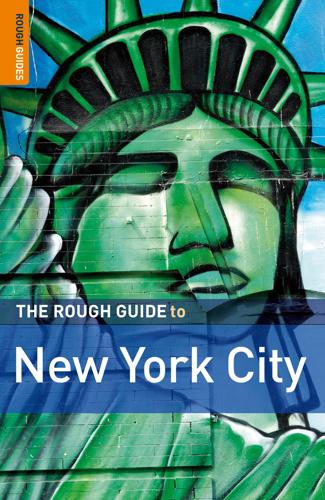
The Rough Guide to New York City
by
Martin Dunford
Published 2 Jan 2009
Tiny Chinatown bar where the most dedicated New Yorkers go to belt out a few tunes. It’s pretty seedy, but nowhere else in the city will you find such a social hodgepodge united in a common cause: bad singing. | East Village 7B 108 Ave B, at E 7th St T212/4738840. A quintessential East Village hangout, 7B has often been used as the sleazy set in films and commercials. It features deliberately mental bartenders, cheap pitchers of beer, and one of the DRI NKI NG East Village 343 DRI NKI NG | East Village 344 parties larger than four will not be admitted. The cocktails are reputed to be some of the best in the city. Can be hard to find: walk into the Village Yokocho complex, up the stairs to the Gyu-ya restaurant and look for the door on the left.
…
The area’s high standard of living and panoply of restaurants and bars, never mind its proximity to NYU, ensure that rents here are almost – although not quite – as insane as those in the neighboring West Village. Nevertheless, despite the vaudevillian circuses of St Mark’s Place and Cooper Square, and creeping invasion of Starbucks (note THE E AST V I L L AGE The East Village The East Village’s cultural heritage Over the years, the East Village has been home to its share of famous artists, politicos, and literati. In the mid-seventeenth century, Peter Stuyvesant, DirectorGeneral of New Amsterdam, developed the land between what are now 6th and 16th streets, and from Third Avenue to the East River, for his country estate.
…
Tompkins Square Park 98 Fringed by avenues A and B and East 7th and 10th streets, Tompkins Square Park, once part of the estate of President James Monroe, has long been a focus for the Lower East Side/East Village community as well as one of New York’s great centers for political protest. The late Yippie leader Abbie Hoffman lived nearby, and residents like him, along with the many incidents in the square, are what have given the East Village its maverick reputation. The first annual Wigstock, a celebration of high kitsch and cross-dressing, was held here in 1985. In 2003, Wigstock was folded into the first Howl Annual Festival of East Village Arts, a week-long event in August or September named for Allen Ginsberg’s famous poem and founded to channel the neighborhood’s creative spirits.
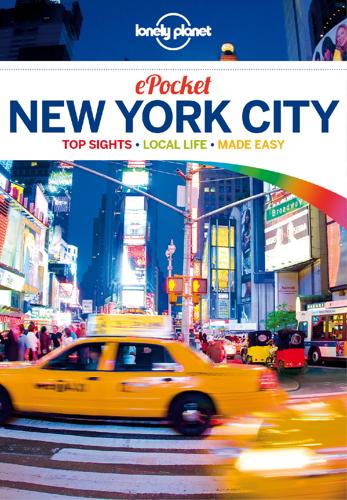
Pocket New York City Travel Guide
by
Lonely Planet
Published 27 Sep 2012
Sweats, hoodies, underwear and other apparel available in a range of colors. ( 212-226-4880; www.americanapparel.net; 121 Spring St at Greene St; 10am-8pm Mon-Thu, to 9pm Fri & Sat, 11am-8pm Sun; R/W to Prince Street) FREDERIC SOLTAN/CORBIS © East Village & Lower East Side If you’ve been dreaming of those quintessential New York City moments – graffiti on crimson brick, skyscrapers rising overhead, punks and grannies walking side by side, and cute cafes with rickety tables spilling out onto the sidewalks – then the East Village and the Lower East Side is your Holy Grail. Best of New York City Local Eats Katz’s Delicatessen (Click here) ChiKaLicious (Click here) Cafe Orlin (Click here) Drinking Terroir (Click here) McSorley’s Old Ale House (Click here) Abraço (Click here) LGBT Eastern Bloc (Click here) Shopping Trash & Vaudeville (Click here) Museums Lower East Side Tenement Museum (Click here) Getting There Subway Trains don’t reach most East Village locations, but it’s a quick walk from the 6 at Astor Pl or the L at First Ave.
…
Best of New York City Local Eats Katz’s Delicatessen (Click here) ChiKaLicious (Click here) Cafe Orlin (Click here) Drinking Terroir (Click here) McSorley’s Old Ale House (Click here) Abraço (Click here) LGBT Eastern Bloc (Click here) Shopping Trash & Vaudeville (Click here) Museums Lower East Side Tenement Museum (Click here) Getting There Subway Trains don’t reach most East Village locations, but it’s a quick walk from the 6 at Astor Pl or the L at First Ave. The F line will let you off in the thick of the Lower East Side. Bus If you’re traveling from the west side, take the M14 as it will take you further into the East Village. The Sights in a Day Have a wander around the Lower East Side as its youngsters are walk-of-shame-ing home from a raucous night out on town. Stop at the Lower East Side Tenement Museum (Click here) to learn about the area’s immigrant past.
…
Contents QuickStart Guide New York City Top Sights New York City Local Life New York City Day Planner Need to Know Explore New York Lower Manhattan & the Financial District SoHo & Chinatown East Village & Lower East Side Greenwich Village, Chelsea & the Meatpacking District Union Square, Flatiron District & Gramercy Midtown Upper East Side Upper West Side & Central Park The Best of New York New York City's Best Walks Village Vibe Iconic Architecture Memorable Manhattan Movies New York City's Best... Fine Dining Local Eats Drinking Entertainment LGBT Shopping Architecture Museums Festivals & Events Sports & Activities Nightlife & Clubbing Parks Tours For Free For Kids Survival Guide Arriving in New York City Before You Go Essential Information Getting Around New York City Neighbourhoods Lower Manhattan & the Financial District SoHo & Chinatown East Village & Lower East Side Greenwich Village, Chelsea & the Meatpacking District Union Square, Flatiron District & Gramercy Midtown Upper East Side Upper West Side & Central Park Welcome to New York Empire State Building (Click here) RICHARD I'ANSON/LONELY PLANET IMAGES © No other place does big-city charm quite like Gotham.
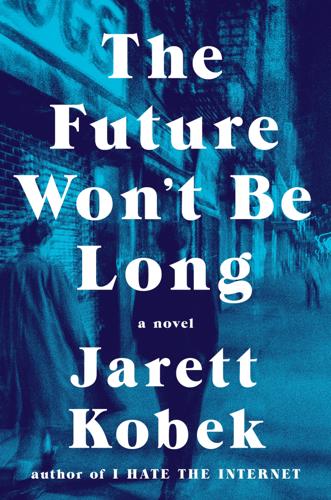
The Future Won't Be Long
by
Jarett Kobek
Published 15 Aug 2017
Fourteen days earlier and he would have been home for the riot at Tompkins Square. * The Lower East Side, its traditional boundaries including the East Village, spent most of the ’70s and early ’80s as a plague pit soaked with spittle and jism, a grotesquerie of drugged-out decadence. Heroin reigned, the substance of choice. By the mid-80s, the crown was in dispute, with crack staging an insurgency. Crime and personal safety became grave issues. Compounding matters, the blocks themselves were shifting. It began with the East Village art explosion, sending out a beacon to the first wave of gentrifiers. Truth be told, these people who were akin to yours truly.
…
When I got to Union Square, it was a ruin, a park surrounded by hookers and pimps and filled with drug dealers. I didn’t know why men kept saying, Works, works, works, you need some works? —Sorry, sir, but I’m not seeking employment. —What the fuck is wrong with you? I shut up and walked until I got to 12th Street. Then I headed through the East Village and into Alphabet City. David’d said his place was in an old brownstone between B and C. It took a minute to find because the address wasn’t on the building. I knocked and knocked but there was no answer. I tried the door. The knob gave way. I went inside. The place was burned out and dirty, the color of charred wood, trash everywhere, graffiti on the walls.
…
All of Marlon’s naughty boys are beholden to the eldest, an ultra-butch and hairy James Caan, who ruts around the family estate like a randy bull. Al Pacino gets a hard-on for the lifestyle after a silver daddy police captain teaches him to respect the whip. Al goes wild, dishing out damage on every bitch that he can find. It’s much better than Peggy Sue Got Married. Adeline knew everyone, was invited to countless parties. In the East Village, the West Village, Greenwich Village, Alphabet City, SoHo, the Upper East Side, Battery Park, even the outer boroughs. We attended them all. The only parties I didn’t enjoy were those thrown by people from Parsons. Adeline couldn’t help herself. Whenever she saw a gay classmate, she’d push us together.
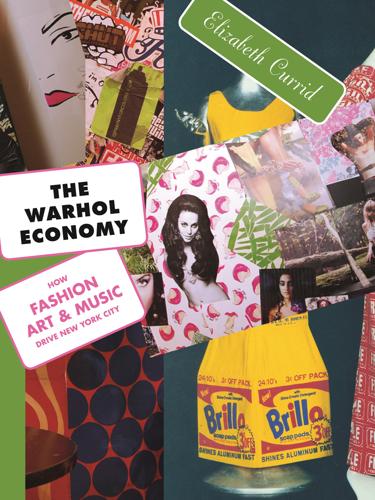
The Warhol Economy
by
Elizabeth Currid-Halkett
Published 15 Jan 2020
Much of this scene manifested itself most vividly in the East Village art movement of the mid-1980s, “when glamour and sleaze were nearly indistinguishable, and the boy next door was an androgynous, foot-high-peroxide-pompadour-sporting singer named John Sex,” as the New Museum described its 2004 tribute exhibition to this time period, East Village USA.45 Jerry Harrison, of the Talking Heads, said, “Being recognized in the East Village was more important than getting [one’s] picture in Time magazine—it was truly underground.” The East Village teemed with galleries, artists, and musicians, with many of those working, showing, and performing all living in the same densely packed neighborhood.46 And Harrison was correct—for a moment.
…
Dre, 146 Dreiser, Theodore, 20 drugs, 22, 29, 123; AIDS and, 33, 36, 38; Basquiat and, 32, 36; clubs and, 37; Factory and, 27; nightlife and, 32–33, 39–40; punk music and, 32–33 Drum and Bass DJ, 96, 146 Duchamp, Marcel, 18, 20–21, 44 Dukes of Hazzard (film), 141 Dylan, Bob, 11, 27, 44, 78, 88–89 Eames brothers, 26 Earnest Sewn, 99, 149 Eastman, Max, 19 East Village, 1, 104; art movement of, 11–12, 35, 159; literature and, 18–19; Maripol and, 17; nightlife and, 31–34; popular importance of, 35; punk and, 45; refugees and, 18 East Village USA (New Museum), 35 eBay, 102, 123 Ecko, 114, 125 “Economic Action and Social Structure: The Problem of Embeddedness” (Granovetter), 76 economic issues, 2–3; artist-in-residence permits and, 164–65, 178–81; autarky and, 70–71; Bell on, 68–70; CEOs and, 54–55; club prices and, 11–12; cost of living issues and, 158–59; creative destruction and, 127; culture’s importance and, 48–51; data sources for, 213n4, 215nn5, 6, and 7; flexible career path and, 150–53; Florida on, 69–70; formal institutions and, 99–101; globalization and, 68; Great Depression and, 23–24, 165; gross domestic product (GDP) measurement and, 63; historical perspective on, 58–59; human capital and, 51–53; location quotient (LQ) and, 50–51, 55, 63–64, 194–98, 215n8; lock-in and, 18; manufacturing sector and, 59–60, 67–68; marketing and, 114–53 (see also marketing); Metropolitan Statistical Areas and, 162; nightlife and, 37–39; NYC Workforce data, 200–209; path dependence and, 18; policy and, 12–14; professional services and, 57–58; public funding and, 177–78; quality-of-place and, 182–83; recession and, 28–30, 45–47, 51–52, 58, 67–69; rent and, 39–40, 178–79; Saxenian on, 71–74; scenes and, 102–10; securities and, 56–57; service sector and, 57–65; spillover and, 89; subsidies and, 178–79; superstar cities and, 169–70; symbolic capital and, 35, 40; taxes and, 11, 164, 173, 177–78; urban policy and, 164–69; Wall Street mega-bonuses and, 55–57; weak ties and, 75–86; Works Progress Administration (WPA) and, 23–24 Economies of Cities, The (Jacobs), 74 Ecstasy, 22 editors, 7, 53 education, 81, 169–72, 218n34 Einstein, Albert, 224n21 Elaine’s, 109 Elephunk (Black Eyed Peas), 121 Ellington, Duke, 22, 44 employment.
…
Some people argue that nothing cool or interesting had been going on at CBGB for a long time and that another club was bound to come along and serve the same function. In fact, the only clubs being built are ones that involve bottle service and women with obscenely expensive handbags, not ones where musicians can jumpstart their careers. The Lower East Side begins to look like the East Village, which begins to look like Soho, and by that point any creative and interesting stuff has long been replaced by Dean and DeLuca and wealthy people walking their little dogs. Sure, interesting music venues and galleries are opening up in Philadelphia, but that’s not helping Manhattan, which, in its rapid ascension as one of the most desired places to live on earth, is quickly becoming a victim of its own success.
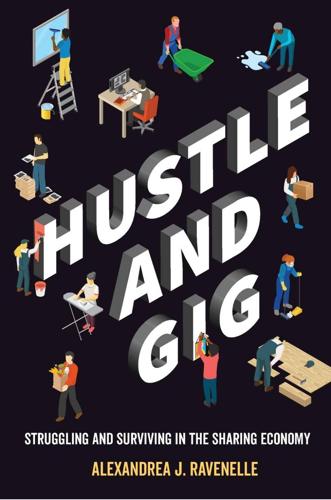
Hustle and Gig: Struggling and Surviving in the Sharing Economy
by
Alexandrea J. Ravenelle
Published 12 Mar 2019
Owing to this neighborhood popularity, I attempted to target Airbnb hosts in the East Village, and nineteen of the twenty-three hosts (83 percent) I interviewed had locations in the East Village; five of the hosts with listings in the East Village maintained multiple apartments that also included listings on the Upper West Side, in the West Village, and in Brooklyn. I also interviewed three hosts who lived outside of the East Village and rented their personal homes in Midtown West, Queens, and Brooklyn. One host, in an effort to hide his location, described his apartment as being in the East Village, although it was in Gramercy, a neighborhood on the north border of the East Village.
…
In 2018, McGill University researchers released a report suggesting that between 7,000 and 13,500 units of housing were removed from New York City’s long-term rental market, including 12,200 frequently rented entire-home listings that were available for rent 120 days or more.53 A 2015 study by New York Communities for Change and Real Affordability for All noted that as many as 20 percent of the vacancies in parts of Manhattan and Brooklyn were listed as Airbnb apartments. The East Village led the list, with a staggering 28 percent of its units going as illegal hotel rooms on Airbnb.54 A 2015 Streeteasy report notes, “According to census data, New York City rent prices grew at almost twice the pace of income between 2000 and 2013, meaning that over time rent has taken up a much larger piece of New Yorkers’ incomes.”55 EV Grieve, an East Village blog, lists East Village residents as spending 56 percent of their incomes on market-rate rent.56 New York City has strong renter protections, but renters in other cities aren’t as lucky.
…
The majority of my Airbnb interviews were conducted with hosts in the East Village. As with many New York City neighborhoods, the specific borders are open to debate and discussion. I use the New York Times real-estate section’s definition of the neighborhood, which states it is “bounded by 14th Street and East Houston Street, the Bowery/Fourth Avenue and the East River” (see map 1).72 Map 1. The East Village is often described as being bordered by East Fourteenth Street, East Houston Street, Fourth Avenue (also called the Bowery), and the East River. Map data © 2018 Google. The East Village is known as one of the more affordable downtown areas in Manhattan.

Frommer's New York City Day by Day
by
Hilary Davidson
Published 6 Jan 2006
. • Hoboken, NJ 07030-5774 04_579312 moments.qxd 10/3/05 9:53 AM Page viii 04_579312 moments.qxd 10/3/05 9:53 AM 16 Favorite Moments Page 1 04_579312 moments.qxd 10/3/05 9:53 AM Page 2 16 Favorite Moments 86th St Tra nsverse Rd. 1st Ave. 3rd Ave. 5th Ave. 7th Ave. 8th Ave. Riv er Broadway son 7th Ave. St. son Hud Hud VILLAGE ton St. ous W. H SOHO E. 14th St. EAST VILLAGE E. Houston THE LOWER EAST SIDE Delancey y Bower St. E. FINANCIAL 15 1 Nibble your way through Belmont. 2 Spend a few hours at the Met. 3 Walk in Central Park. 4 Stargaze at the Rose Center for Earth and Space. 5 Listen to music at Lincoln Center. 8 Window shop on Fifth Avenue. 9 Sip cocktails at a chic lounge.
…
Broadway Lafayette St. East River 1st Ave. . Delancey St LITTLE ITALY g Williamsbur Bridge st Ea CHINATOWN Broadway West Broadway Church St. WORLD TRADE CENTER SITE LOWER EAST SIDE y wa ad Bro St. (Gansevoort Market) 8 Century 21 TRIBECA St. E. Houston e Pik 7 The Meatpacking District St. EAST VILLAGE Allen St. y. of Technology ry Bowe e Hw t Sid 6 The Fashion Institute SOHO Canal W es 5 The Garment District W. Houston St. . St. k St son Varic Hud 4 Bryant Park 2nd Ave. 3rd Ave. ve. ve. 7th A St. son Hud 2 Fifth Avenue 3 Goodman's Café GREENWICH VILLAGE 1st Ave. 5th Ave. 7th Ave. 9th Ave.
…
Special-Interest Tours 28 Ma nh City Hall FINANCIAL DISTRICT 8 att an East River B r oo k lyn Bridg e Br idg e 06_579312 ch02.qxd 10/3/05 10:01 AM Page 29 29 ISL AN D ew York is a fertile breeding ground for fashion. Inspiration is everywhere in this cross-cultural stew, where exotica from all over the world is rapidly absorbed into the fashion slipstream and then promptly disseminated through a wide variety of outlets, from the high-end retailers of Fifth Avenue to the gritty storefronts of the East Village. START: Subway 4, 5, or 6 to 86th Street. R O O S E VE LT ST 1 The Costume Institute at the Metropolitan Museum of Art. Fashion may be fickle, but this eensboro Bridge collection shows how knowing the past is essential to designing for the future. Among the hundreds of articles in the collection are a French silk corset from the 1700s (complete with baleen—whale cartilage— wire), a shoe buckle from 400 A.D., and 17th-century silk robes from Japan.
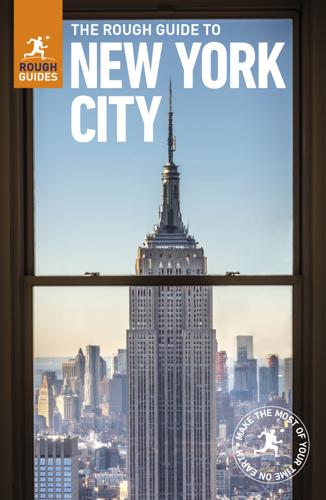
The Rough Guide to New York City
by
Rough Guides
Published 21 May 2018
There’s a hidden door leading from the balcony to the attic, where runaway slaves being moved along the “underground railway” were hidden, and a memorial plaque to the gangster Bugsy Siegel (aka Benjamin Siegel), who worshipped here as a child. < Back to Lower East Side The East Village The East Village, which extends east from Broadway to the East River and north from Houston Street to 14th Street, is one of New York’s most fashionable neighbourhoods, home to some of the best bars, restaurants and independent theatres in the city. Once a working-class refuge for immigrants, New York’s nonconformist intelligentsia were sent scurrying here when rents began to rise in Greenwich Village, and by the 1960s the East Village was at the height of its creative and often lawless period. Since the 1990s, the area’s flourishing culinary and bar scene (and its proximity to NYU) has ensured that rents here are almost as high as in neighbouring West Village.
…
Easy-going old-style saloon with huge menu of Scotch whisky and bourbon (with plenty from micro distilleries; shots from $9), plus free peanuts all night. Mon–Sat 5pm–4am, Sun 6pm–4am. the East Village 7B 108 Ave B, at E 7th St 212 473 8840; subway L to First Ave; map. Opened as a Polish catering hall in 1935 (“Vazac’s”), and also known as the Horseshoe Bar, this quintessential East Village hangout has often been used as the sleazy set in films and commercials (most recently featuring in the Jessica Jones TV series). It features deliberately zany bartenders, cheap pitchers of beer (under $20) and one of the best punk and rock ‘n’ roll jukeboxes in the East Village. Daily noon–4am. Angel’s Share 8 Stuyvesant St, between E 9th St and Third Ave 212 777 5415; subway #6 to Astor Place; map.
…
Thoughtful resistance to the status quo can still be found, however, through a smattering of independent boutiques, thrift stores, record shops and alternative performance spaces. arrival Public transport The East Village can be reached by taking the #6 train to Astor Place, the L train to Third or First Ave, or the N, R and W trains to 8th St. Noho Squashed between Astor Place, the Bowery, Broadway and Houston Street, Noho (north of Houston) was considered part of the East Village until the name was invented by a group of local activists in the 1970s. Most of the old warehouses here have been transformed into trendy galleries, condos and offices (Facebook’s New York headquarters is at 770 Broadway).
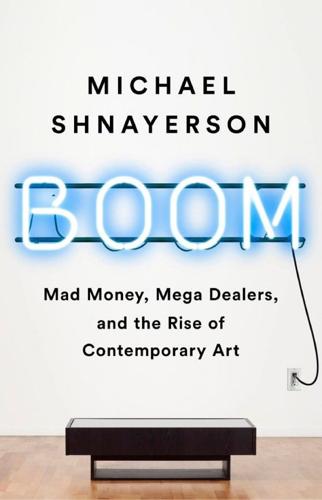
Boom: Mad Money, Mega Dealers, and the Rise of Contemporary Art
by
Michael Shnayerson
Published 20 May 2019
Almost overnight, impelled by rejection, a mass migration of hopefuls found their way to the East Village, where a half dozen hipster dealers awaited them in raw spaces they chose to call galleries. “It began around 1982, you could feel it,” explained Walter Robinson, the writer and artist whose East Village coverage would read like dispatches from the front. “SoHo was full, all the spaces on the walls were taken, and yet the art world kept booming. Suddenly there wasn’t enough room! So this whole new world of artists and dealers moved over, half a mile in this rundown Polish, Spanish, Lower East Village.”25 First to the party was the Fun Gallery, founded by Barnard College dropout and underground actress Patti Astor.
…
On a wintry day in 1983, an artist who neither had a regular dealer nor wanted one stood outside the Cooper Union for the Advancement of Science and Art in the East Village, selling snowballs. He wore a long, lumpy overcoat, a mashed fedora, and looked cold as he stood against one of the school’s stone walls, his snowballs neatly lined up in rows on a rug on the sidewalk, priced according to size. His wares were not the only atypical thing about him in the East Village art scene: David Hammons was black. The youngest of ten children born to a single mother in Springfield, Illinois, Hammons was a poor student, steered early on by his teachers to vocational courses.
…
In 1974 Hammons settled in New York City.30 He made body prints, as former ARTnews co-executive editor Andrew Russeth put it, “by pressing a grease-covered body (usually the artist’s own) to paper, then sprinkling the paper with powdered pigment.”31 He had a strong social conscience, and the plight of disaffected black youth became—and remained—the focus of his art. He would become one of the most admired Conceptual artists of his era—and one of the most reclusive. At its peak, the East Village scene drew a new wave of uptown collectors.32 Herb and Lenore Schorr, Elaine Dannheisser, and Don and Mera Rubell all became East Village regulars. Rubell, an Upper East Side gynecologist and brother of Studio 54’s Steve Rubell, cruised the galleries with his wife Mera on a weekly basis. The Rubells had begun collecting art in 1964, allocating funds to pay for it.33 They set themselves a ceiling of no more than $25 or $50 a trip.
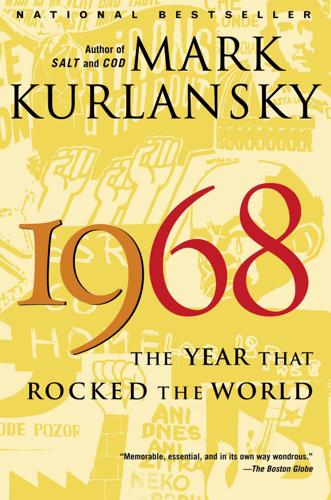
1968: The Year That Rocked the World
by
Mark Kurlansky
Published 30 Dec 2003
The prestigious schools, the ones that attempted to use their status to skim off the brightest, most promising of the generation, were the worst. New York, albeit many blocks downtown in the East Village, had become the center of a hip counterculture. Abbie Hoffman and Allen Ginsberg and Ed Sanders—who had a group called the Fugs that was named after a word used by Norman Mailer in his novel The Naked and the Dead because he could not use his F-word of choice—were all in the East Village. Hoffman frequently appeared at East Village events with his special honey laced with a distillate of hashish. The East Village, a dilapidated section of the Lower East Side, had only recently acquired its name because the once beat Greenwich Village, now the West Village, had become too expensive.
…
The same thing had happened in San Francisco, where Ferlinghetti remained in the North Beach section that the beats had made too fashionable, while the hippies moved out to the poorer, less central Fillmore and Haight-Ashbury sections. The East Village became so famous for its “hippie” lifestyle that tour buses would stop by the busy shops of St. Mark’s Place—or St. Marx Place, as Abbie Hoffman liked to call it—for tourists to view the hippies. In September 1968, East Village denizens rebelled, organizing their own bus tour to a staid section of Queens, where they questioned people mowing lawns and took photos of people taking photos of them. San Francisco and New York were the bipolar epicenters of America’s 1968 hip.
…
This was reflected in rock concert producer Bill Graham’s two halls, the Fillmore West in the Fillmore section of San Francisco and the Fillmore East, which he opened in 1968 on Second Avenue and Sixth Street in the East Village. The new rock concerts began in the neighborhood at what had been the Anderson Yiddish Theater. John Morris, who managed the Fillmore East, had been there years before to see the Anderson’s closing show, The Bride Got Farblundjet, starring Menasha Skulnik and Molly Picon. Reopened by Morris, the theater featured such groups as the Fugs and Country Joe and the Fish, who were stars from their grizzly anti–Vietnam War satire, “I-Feel-Like-I’m-Fixin’-to-Die Rag.” They then persuaded Graham to open an East Village Fillmore across the street. Graham was not only a dominant force in 1968 rock music, he frequently gave benefit concerts for political causes, including one for the Columbia students when they went on strike in April.
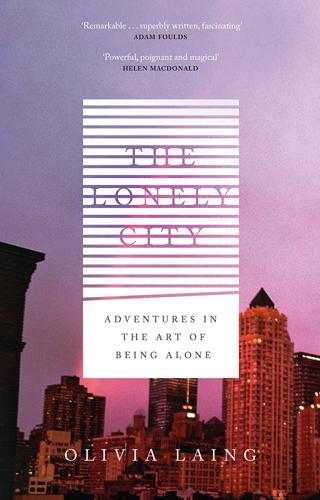
The Lonely City: Adventures in the Art of Being Alone
by
Olivia Laing
Published 1 Mar 2016
Many marvellous things have emerged from the lonely city: things forged in loneliness, but also things that function to redeem it. 2 WALLS OF GLASS I NEVER WENT SWIMMING IN New York. I came and went, but never stuck a summer, and so all the outdoor pools I coveted remained empty, their water spirited away for the duration of the long off-season. Mostly, I stayed on the eastern edges of the island, downtown, taking cheap sublets in East Village tenements or in co-ops built for garment workers, where day and night you could hear the hum of traffic crossing the Williamsburg Bridge. Walking home from whatever temporary office I’d found that day, I’d sometimes take a detour by Hamilton Fish Park, where there was a library and a twelve-lane pool, painted a pale flaking blue.
…
As if loneliness was something worth looking at. More than that, as if looking itself was an antidote, a way to defeat loneliness’s strange, estranging spell. 3 MY HEART OPENS TO YOUR VOICE I DIDN’T STAY IN BROOKLYN long. The friend whose apartment I was staying in came back from L.A. and I moved to the green walk-up in the East Village. The change in habitat marked another phase of loneliness; a period in which speech became an increasingly perilous endeavour. If you are not being touched at all, then speech is the closest contact it is possible to have with another human being. Almost all city-dwellers are daily participants in a complex part-song of voices, sometimes performing the aria but more often the chorus, the call and response, the passing back and forth of verbal small change with near and total strangers.
…
All the same, the mask marks him out as separate: a wanderer or voyeur, unable or unwilling to display his real face. The Rimbaud series was conceived, orchestrated and shot in its entirety by David Wojnarowicz (generally pronounced Wonna-row-vich), a then entirely unknown twenty-four-year-old New Yorker who would in a few years become one of the stars of the East Village art scene, alongside contemporaries like Jean-Michel Basquiat, Keith Haring, Nan Goldin and Kiki Smith. His work, which includes paintings, installations, photography, music, films, books and performances, turns on issues of connection and aloneness, focusing in particular on how an individual can survive within an antagonistic society, a society that might plausibly want them dead rather than tolerate their existence.
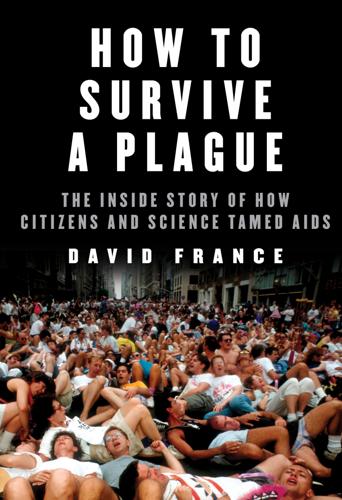
How to Survive a Plague: The Inside Story of How Citizens and Science Tamed AIDS
by
David France
Published 29 Nov 2016
Later, after dropping Tanenbaum off for the evening, he regularly visited the St. Mark’s Baths, a five-story emporium of dark rooms and unpredictable encounters in the East Village. Sometimes, he’d spend an hour or two across the street beforehand, at a packed gay disco called Boy Bar. That’s where I first saw him. A year younger than I was and a few inches shorter, he and I occupied either side of a wrinkle in gay culture. In my long hair and worn shoes, I was typical East Village stock, as short on finances as I was on boldness; I only ever came to the bar with friends, stood or danced in packs, nursing a single drink all night.
…
Adding to this overall impression, he possessed a voice that naturally reached falsetto ranges, a voice that brought him as much admiration as a singer as it did grief as a high school student in Ohio, where his father derided him as “a sissy” and boys in his gym class had made a sport of holding him down and soaking him with their urine. He found his way to New York after college, settling down in the “gay ghetto,” as the part of Manhattan between Fourteenth Street and Houston Street was known—Greenwich Village, the East Village, and Alphabet City were among the few neighborhoods where it was possible for gay men and lesbians to live without constant fear of being evicted, menaced, or assaulted. Like many others in the ghetto, he found work in the clerical industry. His job as a legal secretary barely taxed his intelligence but left ample time to pursue songwriting and performing, which he considered his true loves.
…
Barbara Starrett saw her first case in mid-November 1981. The young man was anemic and had advanced syphilis, which caused a carpet of pink bumps all over his body. For Starrett, this was nothing unusual. As the director of lesbian and gay medical services at the St. Mark’s Community Clinic, a free facility based in the East Village, she had seen a stupefying number of gay men with syphilis. But this case defied treatment. The patient’s anemia worsened to the point of grave concern. She told him she wanted him in the hospital for tests. Instead, he headed home to Boston for Thanksgiving with his family. He died before the turkey was served.
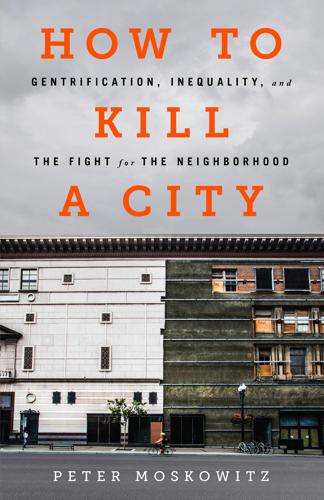
How to Kill a City: The Real Story of Gentrification
by
Peter Moskowitz
Published 7 Mar 2017
The borough’s vice president at the time, Marty Markowitz, even took a trip to China to find investors for the project. “Brooklyn is 1000 percent, 1000 percent behind Atlantic Yards,” he said. “There’s nothing better than China and Brooklyn together.” Next on my walk, I take a left on 9th Street and pass through the detritus of the East Village and the Lower East Side. I never knew the old East Village, so it’s hard for me to mourn its death properly, but I know the new neighborhood, and it’s easy for me to imagine how anything would be better than this—an outdoor mall filled with recently graduated Goldman Sachs boys who can afford nights of $200 binge drinking, new condo buildings that block the skyline, and tourist-oriented shops that locals have no reason to go to.
…
I never knew the old East Village, so it’s hard for me to mourn its death properly, but I know the new neighborhood, and it’s easy for me to imagine how anything would be better than this—an outdoor mall filled with recently graduated Goldman Sachs boys who can afford nights of $200 binge drinking, new condo buildings that block the skyline, and tourist-oriented shops that locals have no reason to go to. This is the area that was once home to punks, to anarchists, to social movements, to Latino rights organizations, to a street culture of protests and stoop-sitting. I know very few people who can afford to live in the East Village now. The Hispanic population in the East Village recently fell below 50 percent for the first time since 1980. East of Avenue B, an area often referred to as Loisaida because that’s how Puerto Ricans would pronounce “Lower East Side,” the Hispanic population dropped by 10 percent between 2000 and 2010. The neighborhood is just a microcosm of what’s happening all over the city: for the first time since the era of white flight, the city’s white population is now rising faster in Manhattan than it is in the suburbs, and the black and Hispanic population is rising faster in the suburbs than it is in Manhattan.
…
The city’s own Independent Budget Office found: “The Proposed Arena at Atlantic Yards: An Analysis of City Fiscal Gains and Losses,” Fiscal Brief, New York Independent Budget Office, September 2009. “Brooklyn is 1000 percent”: Norman Oder, “Brooklyn BP Markowitz’s Atlantic Yards Falsehood,” Huffington Post, March 7, 2011. The Hispanic population in the East Village recently fell: Ian Duncan, “Local Hispanic Population Declines,” Local East Village, April 8, 2011. the city’s white population is now rising faster in Manhattan: Sam Roberts, “Census Estimates Show Another Increase in New York City’s Non-Hispanic White Population,” New York Times, June 30, 2014. Tompkins Square Park: Smith, New Urban Frontier, 3–6.
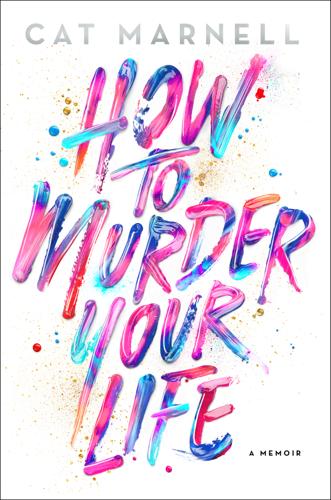
How to Murder Your Life: A Memoir
by
Cat Marnell
Published 30 Jan 2017
My brains were so scrambled you could’ve ordered them for brunch at Sarabeth’s; I let art-world guys choke me out during unprotected sex; I only had one friend, a Dash Snow–wannabe named Marco who tried to stick syringes in my neck and once slurped from my nostrils when I got a cocaine nosebleed; my roommate, Nev “Catfish” Schulman, wanted me out of our East Village two-bedroom; my parents weren’t talking to me ever since I’d stuck my dad with a thirty-thousand-dollar rehab bill. I took baths every morning because I was too weak to stand in the shower; I wrote rent checks in highlighter; I had three prescribing psychiatrists and zero ob-gyns or dentists; I kept such insane hours that I never knew whether to put on day cream or night cream; and I never, ever called my grandma.
…
He was maxing out their credit cards because he’d run out of cash, and he owed money to dealers. Things were really closing in on him. Once in a while we’d go to the Poetry Garden on the fourteenth floor and hook up next to a heating lamp, but eventually Michael became too paranoid for sex. It happens. My own life wasn’t any better in the East Village. If I was home, I was bingeing—in bed, and late into the night. After I purged, I’d take Ambien—sometimes this was the only way to make myself stop—and pass out surrounded by Cap’n Crunch boxes and pizza crusts and half-empty packages of Double Stuf Oreos. Garbage would be on the bed, on the sofa, and on the floor.
…
You’re up late cracker-jacked on ADHD medication and zing—out of the corner of your eye you see a black flash dart under your refrigerator. Then your entire world turns upside down for three years. At least, that is what happened to me. I’d been at Lucky nearly a year when I decided to ditch the Upper East Side and move downtown. Away from Alex and my bulimia circuit and my Dr. Feelgoods. I wanted to be in the East Village, my favorite Manhattan neighborhood. The second apartment I saw was an alcove studio at 112 First Avenue between Fifth and Sixth Streets. I liked that it was near St. Mark’s Place, the former punk rock mecca, and Tompkins Square Park, which filled up with cute teen runaways in the summer. The creaky, dark, small building was above a strange Polish restaurant and a porny video shop; there was also a McDonald’s and a combination Dunkin’ Donuts/Baskin Robbins on the block.

Top 10 San Diego
by
Pamela Barrus
and
Dk Publishing
Published 2 Jan 2007
Montesinos. d Map P2 • 1205 This fine arts gallery specializes in San Diego artists. Exhibitions feature paintings, drawings, photography, sculptures, and custom furniture from artists such as Mario Uribe, Gail Roberts, Paul Henry, and Johnny Coleman. The glowing, spiritual landscapes of Nancy Kittredge merit special notice. d Map H2 BO U.S. Naval Hospital 5 East Village 12th & Market 8 v Gaslamp Quarter 1 43 San Diego’s Top 10 Left San Diego County Administration Center Right Hotel del Coronado Architectural Highlights San Diego County Administration Center Four architects responsible for San Diego’s look collaborated on this civic landmark. What began as a Spanish-Colonial design evolved into a more “Moderne” 1930s style with intricate Spanish tile work and plaster moldings on the tower. d Map H3 • 1600 Pacific Hwy • Open 8am–5pm Mon–Fri California Building & Tower Bertram Goodhue designed this San Diego landmark for the California-Panama Exposition of 1915–16, using Spanish Plateresque, Baroque, and Rococo details.
…
From the edge of the Embarcadero, graced with 19th-century sailing ships, to the beautifully restored Victorian and Italianate buildings of the Gaslamp Quarter, a district straight out of the Wild West and home to trattorias, Irish pubs, and a pulsating nightlife, downtown is a great place to have fun in. Apes at San Diego Zoo AY EW L E VARD OU RE Y N FRE LO RIL CAB B STR E E T v12th & Market 16 T H S T R E E T 12 T H AV E 7 East Village 5 Convention Center H A v Gaslamp Quarter RB San Diego OR Ballpark Bay Embarcadero D v District Marina n R 12th & Imperial v I M P E R I A L AV E Park 750 yards 0 Previous pages: Colorful house in Hillcrest meters 750 19 T H S T R E E T MARKET STREET B R O A D WAY 16 T H S T R E E T v C STR E E T AY 1 FRE EW n4 R U S S B O U LE VAR D City College 5th Avenue 9 70 U.S.
…
Naval Hospital GO F STR E E T G STR E E T RK IE v Civic Center v B R O A D WAY v B PA D A STR E E T Downtown Seaport Village Balboa Pa rk 163 5 ASH STREET 8T H AV E N U E Villa Montezuma 8 n C E D A R ST R E E T 10 T H A V E N U E 0 Santa Fe Depot v 3 EL PRADO SAN Little Italy ASH STR E E T 2 GR AP E STR E E T 6T H AV E N U E Martin Luther King Promenade 8 T H AV E N U E 9 J U N I P E R ST 6 County Center/ Little Italy v San Diego Zoo EL PRADO T PE S KET TNER BLVD Museum of Contemporary Art GRA DR Asian Pacific Historic District ST 4T H AV E N U E Little Italy REL RB I ST AV E N U E 8 East Village LAU HA 1ST AV E NU E Horton Plaza Balboa Park & San Diego Zoo L A U R E L STREET 5 S TAT E S T R E E T 4 5 6 7 Embarcadero CIF Gaslamp Quarter AY W EE FR O EG DI RD A LEV BOU N S A ETTNER AY K HW HIG DR IVE R IC O PA 1 2 3 Uptown 6 T H AVE N U E v BALB OA Middletown Sights ARD WY Around Town – Downtown San Diego Left Balboa Park Center Tuna Harbor, Embarcadero Right Fountain at Horton Plaza Park 0 Gaslamp Quarter Embarcadero Buildings in the Gaslamp Quarter filled with maritime life define this lively district (see pp10–11).

Frommer's San Diego 2011
by
Mark Hiss
Published 2 Jan 2007
. & 619/696-8888. www.confidentialsd. com. Cover: $10–$15. Bus: 3, 120, or 992. Trolley: Civic Center. East Village Tavern & Bowl Whether you bowl passionately or ironically, this raucous spot has you covered. Featuring 12 colorfully lit bowling lanes, as well as a separate bar area with outdoor seating, there’s classic bar food (limited menu served until 1am), a good selection of beer on tap, and billiards. Open daily 11:30am to 2am; kids are allowed in until 9pm. 930 Market St. (btw. Ninth and 10th aves.), East Village. & 619/677-2695. www.bowlevt.com. Bus: 3 or 11. Trolley: Gaslamp Quarter or Park and Market. 230 13_626214-ch10.indd 23013_626214-ch10.indd 230 7/23/10 11:22 PM7/23/10 11:22 PM Ivy Nightclub/Ivy Rooftop These are the hip and very happening clubs located in the ultra-stylish Andaz Hotel (p. 64).
…
See also Restaurant Index Anza-Borrego, 270 best, 4–5, 96–98 with the best views, 123 burgers, 106 Coronado, 125–127 by cuisine, 98–100 Del Mar, 242–244 downtown, the Gaslamp Quarter and Little Italy, 101–107 Escondido, 257–258 in and around Fiesta de Reyes, 195 fish tacos, 116 Hillcrest & Uptown, 107–111 Julian, 266 La Jolla, 119–125 Little Italy, 101, 104–107 Mission Bay and the Beaches, 114–119 Oceanside, 253 off the beaten path, 127–128 Old Town & Mission Valley, 111–114 price categories, 96 Puerto Nuevo, 286 Rancho Santa Fe, 255–256 Solana Beach, Encinitas & Carlsbad, 249–251 Tijuana, 281–283 Disabilities, travelers with, 40–41 Diversionary Theatre, 225 Dizzy's, 228 Doctors, 288 Dog Beach, 46, 135 Dog Beach Dog Wash, 46 Downtown Information Center, 165 GENERAL INDEX Cabrillo Bridge, 140, 200 Cabrillo National Monument, 146, 164 walking tours, 168 whale-watching, 169 Cabs, 35 airport, 27 Caliente Racetrack (Tijuana), 276 California Ballet, 227 California Center for the Arts (Escondido), 256 California Dreamin', 170 California Overland, 48, 268 California Surf Museum (Oceanside), 252 California Wolf Center (Julian), 262 Callaway Vineyard & Winery, 258 Camping, Anza-Borrego, 270 Carlsbad, 237, 244–251 Carlsbad Fall Village Faire, 22 Carlsbad Marathon & Half Marathon, 18 Carlsbad Mineral Water Spa, 247 Carlsbad Premium Outlets, 221, 245 Carlsbad Ranch, flower fields in bloom at, 19 Carlsbad Spring Village Faire, 20 Carlsbad State Beach, 247 Car rentals, 29–30 Carriage Works, 190 Car travel from the airport, 27 driving rules, 31 driving safety, 40 main arteries and streets, 32–33 parking, 31 to San Diego, 28–29 Casa de Balboa, 204 Casa de Bandini/Cosmopolitan Hotel, 196 Casa del Prado, 204–205 Casa del Rey Moro African Museum, 45 The Casbah, 228 Casinos, 235 Cave Store, 215 Cedros Design District, 215 Celebrate Dance Festival, 227 Cellphones, 50, 288 Centers for Disease Control and Prevention, 39 Centro Cultural de la Raza, 141 Centro Cultural Tijuana, 276–277 Chicano Park, murals in, 158–159 Children, families with, 43 best accommodations for, 63 sights and attractions, 160–162 The New Children's Museum, 148 299 16_626214-bindex.indd 29916_626214-bindex.indd 299 7/23/10 11:23 PM7/23/10 11:23 PM GENERAL INDEX Downtown San Diego, 52, 54 accommodations, 64–75 bars, 230–232 restaurants, 101–107 shopping, 207–209 sights and attractions, 158 Drinking laws, 288–289 Driving rules, 31 Driving safety, 40 Dr. Seuss' How the Grinch Stole Christmas!, 22 Drugstores, 290 Dudley's Bakery (Julian), 264 E Eagle and High Peak Mine (Julian), 262 East Village, 54 East Village Tavern & Bowl, 230 Eating and drinking, 12–14 Ecotourism, 46–47 El Campo Santo, 149–150, 198–199 El Cid Campeador, 202–203 ElderTreks, 43 Electricity, 290 Electronic System for Travel Authorization (ESTA), 24 Ellen Browning Scripps Park, 137 El Niño weather pattern, 18 El Prado, 163 The Embarcadero, walking tour, 190–194 Embarcadero Marina Park North, 194 Embassies and consulates, 290 Emergencies, 290 Encinitas, 244–251 Ensenada, 284, 286–287 Entry requirements, 23–25 Escondido, 256–257 Escorted tours, 49 Eveoke Dance Theatre, 227 Exploritas (formerly Elderhostel), 43 F Fallbrook Winery, 165 Fall Flower Tour (Encinitas), 22–23 Families with children, 43 best accommodations for, 63 sights and attractions, 160–162 The New Children's Museum, 148 Farmers Insurance Open, 18–19, 181 Farmers' markets, 218–219 Escondido, 256 Fashion Valley Center, 220 Fax machines, 49 FedEx Office, 51 Ferries and water taxis, 35–36 Ferry Landing Marketplace, 215 Festival of Beer, 22 Fiesta Cinco de Mayo, 20 Fiesta de Reyes, 195–196, 212 Fiesta Island, 135 52-mile San Diego Scenic Drive, 158 Films, 15 Firehouse Museum, 146 First Church of Christ Scientist, 162 Fishing, 172 tournaments, 181 Fish tacos, 116 Flea market, 219 Fleet Week, 22, 164 Flicks, 233 Flightline (San Diego Wild Animal Park), 130 FlowBarrel, 153 Flower Fields at Carlsbad Ranch, 245 FlowRider, 153 Flying Wheels Travel, 41 Folk Arts Rare Records, 220 Food and wine trips, 48–49 Football, 181 college bowl games, 23 Fort Rosecrans National Cemetery, 164 Four Points Communications, 50 Four Seasons Resort Aviara Golf Club, 174 4th & B, 228 Four Winds Trading Company, 216 Free or almost free activities, 5, 158–160 Frey Block Building, 189 F.
…
There are the coastal enclaves that could only be found in Southern California, from tony La Jolla by the sea to funky, counterculture Ocean Beach to sleepy Encinitas in North County. Then there’s San Diego’s urban side. Though they may not have been much 25 years ago, today downtown’s Gaslamp Quarter and East Village vibrate with big-city buzz, while hip uptown spots such as Hillcrest and North Park deliver edgier fashion and culture. Thanks to growing cultural and dining scenes, unparalleled outdoor activities, sports franchises, and other entertainment options, urban San Diego can now go toe-to-toe with any American metropolis.

Lonely Planet's Best of USA
by
Lonely Planet
(Map; %877-975-3786; www.tenement.org; 103 Orchard St, btwn Broome & Delancey Sts; adult/student from $25/20; htours 10:15am-5pm Fri-Wed, to 6:30pm Thu; bB/D to Grand St, J/M/Z to Essex St, F to Delancey St) 1 East Village If you’ve been dreaming of those quintessential New York City moments – graffiti on crimson brick, punks and grannies walking side by side, and cute cafés with rickety tables spilling out onto the sidewalks – then the East Village is your Holy Grail. Stick to the area around Tompkins Square Park, and the lettered avenues (known as Alphabet City) to its east, for interesting little nooks in which to imbibe and ingest – as well as a collection of great little community gardens that provide leafy respites and sometimes even live performances. 1 West Village & Greenwich Village Once a symbol for all things artistic, outlandish and bohemian, this storied and popular neighborhood – the birthplace of the gay-rights movement as well as former home of Beat poets and important artists – feels worlds away from busy Broadway, and in fact feels almost European.
…
Come evening, have dinner and drinks in one of the lively spots off Dupont Circle or Logan Circle. I Washington, DC to New York City L 3½ hrs Amtrak Northeast Regional train to Penn Station 2 New York City After arriving, promenade in lovely Central Park, browse the galleries of the vast Metropolitan Museum of Art, and end the day with ethnic eats and bar-hopping in the East Village. On day two, catch an early-morning subway to Lower Manhattan and walk across the Brooklyn Bridge. Afterward, wander through Chinatown, then go up to SoHo for lunch. In the evening, dine in a cozy, candlelit spot in the West Village, followed by live jazz at the Village Vanguard. I New York City to Boston L 4hrs Amtrak Northeast Regional train to South Station 3 Boston Start the day on Boston Common and set off on the brick-lined Freedom Trail, wandering past historic homes and fabled meeting houses.
…
Race Point Beach, Provincetown / DENISTANGNEYJR / GETTY IMAGES © Plan Your Trip Ten-Day Itinerary Big Apple to the Big Easy Delve into two of the USA’s most fascinating cities – New York City and Washington, DC – for their world-class museums, iconic buildings, and top-notch food and entertainment options. Then head south for sparkling beaches, Disney magic and Cajun cooking on a ramble through Miami, Orlando and New Orleans. 1 New York City Spend two days exploring the metropolis, visiting memorable people-watching ’hoods such as Chinatown, the West and East Villages, SoHo, Nolita and the Upper West Side. Museum-hop down the Upper East Side. Wander in Central Park, along the High Line and across the Brooklyn Bridge. Prioritize iconic sights, including the Statue of Liberty and MoMA. In the evenings, catch a Broadway show or a concert at legendary Carnegie Hall or the Lincoln Center.
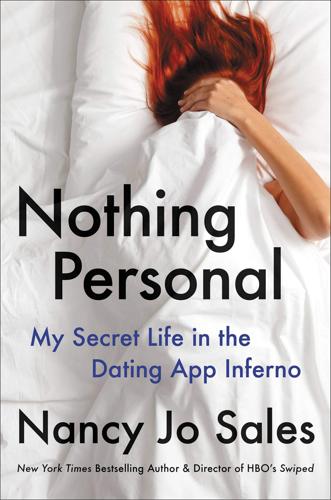
Nothing Personal: My Secret Life in the Dating App Inferno
by
Nancy Jo Sales
Published 17 May 2021
Frank was something of an expert on the subject, which was the perfect excuse to ask him out to dinner. Soon, we were having dinners at the East Village’s Odessa diner, where I asked him about the Posse Comitatus Act, and he told me about seeing Jimi Hendrix at the Wawa Club in ’68. He’d been in a band, of course, then gone to seminary to become an Episcopal priest. His calling, he said, was to find housing for the homeless. He’d been a leader of the New York squatter movement in the eighties. He was East Village royalty—the radical activist priest of St. Mark’s (part-time). I admired him for living by his principles. I think I kind of revered him, which seemed to be how he liked it.
…
“I know,” says Constance, her voice going low. “But he said he loves me. I just can’t believe anybody would say that to me. It’s been so long.” * * * It’s strange to think how much the world has changed in the few months since I last saw Constance. It was a cold winter night. I was snuggled down in my bed, at home in the East Village, where I’ve lived now for about twenty years. My apartment is small but cozy and colorful, full of paintings and photographs, knickknacks and books. Once, when I was in my twenties, I got a reading from a psychic at a party named Kermit who told me, “You’re surrounded by books.” I remember I was so excited when he went on to say, “You will make it as a writer,” although I was a bit miffed to hear it would be by writing about kids.
…
And, oh, how I wanted to know how he sounded, moved and felt—and smelled—how I’d fantasized about it all on those lonely jogs along the piney roads up in Vermont… “But hold on a minute now,” I was thinking, steering my rental car into the treacherously narrow Avis garage on East 11th Street, “that’s just blind lust! That’s the tech lords tapping into the lonely waves in your brain and igniting them with a shot of ego, spiking your excitement that this nice-looking young man is coming over to your house?” “Oh, what have I done?” I fretted, hurrying along the streets of the East Village, wrestling with my rolling bag, fully registering now how I was breaking all my own rules by inviting this young guy I had never seen before to come to my home. In the past, I had always insisted on meeting my matches in public, despite the usual attempts to “just come over with a bottle of wine,” “Netflix and chill.”
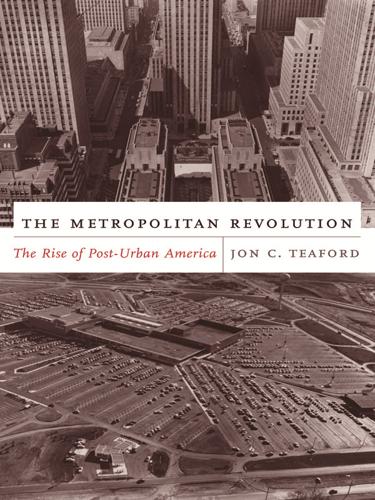
The Metropolitan Revolution: The Rise of Post-Urban America
by
Jon C. Teaford
Published 1 Jan 2006
In the words of one planning journal article, this was a means for “protecting industry from Yuppies and other invaders.”36 Perhaps the most publicized and bitterest conflict over gentrification occurred in New York City’s East Village. An aging tenement district, this Lower Manhattan neighborhood experienced a wave of abandonment in the 1970s as landlords no longer found the buildings worth maintaining. In the late 1970s, however, counterculture artists began moving into the remaining low-rent structures, and during the first half of the 1980s the East Village emerged as the hub of New York’s radical art scene. By 1984, there were over seventy commercial galleries in a fourteen-block area. Formerly denounced for defacing the city’s walls and subways, graffiti became an art form in the East Village, as did assemblages made of junk and spare parts rescued from vacant lots.
…
Formerly denounced for defacing the city’s walls and subways, graffiti became an art form in the East Village, as did assemblages made of junk and spare parts rescued from vacant lots. The East Village was the latest manifestation of Manhattan bohemia; one art critic described it as “a neighborhood that encourages one to be the person he is with greater ease than other parts of the city.” With art came middle-class whites and the developers eager to accommodate them. In 1985 a Citibank executive expressed the prevailing business sentiment regarding the East Village: “This can’t be a slum forever…. I know what young professionals are thinking. This could be another SoHo.”37 These, however, were fighting words.
…
“Die Yuppie Scum” appeared on buildings and sidewalks in the neighborhood. In 1982 protesters marched from the East Village to City Hall Park, where a crowd of more than two thousand demonstrated against the city’s support for gentrification and burned the mayor in effigy.38 Tension persisted throughout the 1980s and peaked in August 1988, when the police attempted to enforce a curfew and evict homeless squatters and other “undesirables” from Tompkins Square Park in the heart of the East Village. They met resistance from what one author has described as “alarmed and outraged punks, post-hippies, [and] housing activists” who carried banners reading “Gentrification Is Class War” and chanted, “It’s our fucking park, you don’t live here!”
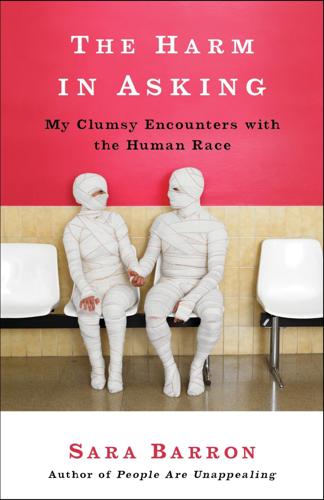
The Harm in Asking: My Clumsy Encounters With the Human Race
by
Sara Barron
Published 25 Mar 2014
Completely by his parents. The situation surprised and confused me: How had Wayne coerced them? How and why had they agreed? I could only imagine that they had done so begrudgingly, and that if Wayne lived in the East Village, he did so on a grimy street, in one of the shoebox apartments. Please, then, try to imagine the surprise I felt the first time I saw Wayne’s actual apartment. His actually perfect East Village apartment. For it was not a grimy shoebox. No. It was a gorgeous, light-filled unit in the newest building on the street. “Jesus Christ,” was all I could say when I saw it. Wayne shrugged. He pointed to a nearby gym.
…
And not just any other roommate: Diabetic Jan. She could’ve answered the door with a loaded gun and shouted, “Forget my diabetes! How’s about Russian roulette?!” and still: I would have begged to live there. I assumed Park Slope had a higher happiness standard than the East Village. I based this assumption on the fact that Park Slope was, quite simply, a prettier place to be. The East Village had some good blocks; Park Slope had all good blocks. There were more trees, more cute coffee shops. Fewer frat boys at the bars, fewer heroin addicts in the parks. If I lived in Park Slope, I would live near a beautiful corner market. I would go there every morning to buy organic produce, and I would cook it in Jan’s gorgeous, sit-down kitchen every night.
…
It was a shame, really. I would’ve loved the occasional romp if it meant un-begrudged access to Wayne’s high-end foodstuffs. But as Wayne himself would say, “Why shove a lemon up your asshole if you’re drinking lemonade?” Why, indeed? I would opt to keep my asshole lemonfree. Wayne lived in the East Village, which, as a neighborhood, can shift on a dime. Or rather: in a block. From idyllic to disgusting. From brownstones and boutiques to bongs and belly-button rings. The apartments do the same. Some are tiny as a shoebox. They are weirdly arranged with showers in kitchens and toilets in communal hallways.
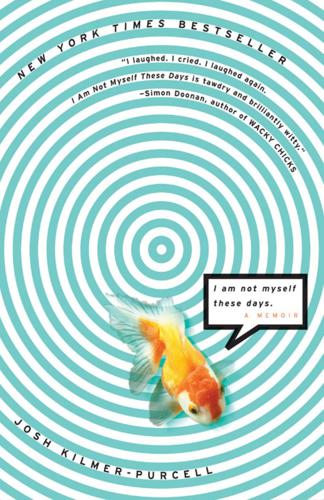
I Am Not Myself These Days: A Memoir
by
Josh Kilmer-Purcell
Published 7 Feb 2006
I swing a seven-inch heel over the seat and settle down behind Johnny. Debbie, with considerably more effort, maneuvers her three hundred pounds onto the bike behind. With my arms around his leather waist, Johnny takes off toward Third Avenue. The avenue is much busier, especially as we reach St. Mark’s Place. I love the East Village. It should be the manda46 I Am Not Myself These Days tory first home of everyone who moves to New York. We pass groups of runaway teens, half of them kicked out of their homes because they were too much trouble for their families. The other half ran away from their middle-class suburban homes intent on becoming too much trouble for their families.
…
I have just barely enough cash flow to pay my half of the monthly bill, and even if I never ate or drank (shudder), I still wouldn’t have enough take-home pay to cover my deadbeat roommate’s half. “Is Tempest even looking for work?” Jack asks, moving on to a plate of pierogis. We’re at what’s fast becoming our favorite Polish diner in my East Village neighborhood. I’m so nervous about being evicted I can’t eat. “Unless he’s looking for it facedown in the laps of random cabdrivers, no,” I reply. My roommate has a thing for having sex with most every penised person he comes across. “That’s inexcusable,” he says. “Not having a job or blowing cabbies?”
…
I gave him a week to get out after I’d moved in with Jack, and so far he’s taken three. But today, other than a broken Absolut bottle in the tub and a leaking lava lamp on the kitchen floor, everything seems to have been cleared out. I’ve been in New York for only six months now, and have moved from an East Village studio to an Upper East Side penthouse. I’d be lying if I didn’t admit I still had a little gnawing feeling about rushing things. Then again, New York doesn’t leave a lot of time for pondering forks in the road. JOSH KILMER-PURCELL People who have paused to gather their wits often find themselves suddenly waking up in a cookie-cutter beige apartment in Hoboken.

Fodor's California 2014
by
Fodor's
Published 5 Nov 2013
Harbor Dr., Embarcadero | 619/544–9600 | www.midway.org | $18 | Mid-Aug.–June, daily 10–5; July–mid-Aug., daily 9–5; last admission 4 pm. East Village The most ambitious of the Downtown projects is East Village, not far from the Gaslamp Quarter, and encompassing 130 blocks between the railroad tracks up to J Street, and from 6th Avenue east to around 10th Street. Sparking the rebirth of this former warehouse district was the 2004 construction of the San Diego Padres’ baseball stadium, PETCO Park. As the city’s largest Downtown neighborhood, East Village is continually broadening its boundaries with its urban design of redbrick cafés, spacious galleries, rooftop bars, sleek hotels, and warehouse restaurants.
…
AMERICAN | Jazz wafts through the several small rooms of this intimate East Village bistro where stylish cushions line the banquettes. Start with an order of the fried olives stuffed with Gorgonzola, accompanied by a glass of local or imported wine. Mains on offer might include chipotle linguini (vegetarian or with shrimp) or breast of pheasant stuffed with caramelized apples. | Average main: $24 | 1602 Main St. | 93428 | 805/927–1600 | www.blackcatbistro.com | Reservations essential | Closed Tues. and Wed. No lunch. French Corner Bakery. CAFÉ | Place your order at the counter and then sit outside to watch the passing East Village scene. The rich aroma of coffee and fresh breakfast pastries makes mouths water in the morning; for lunch, try a quiche with flaky crust or a sandwich on house-baked bread. | Average main: $8 | 2214 Main St. | 93428 | 805/927–8227 | Reservations not accepted | No dinner.
…
AMERICAN | Homemade olallieberry pies, soups, potpies, and other farmhouse comfort foods share the menu with fancier dishes such as free-range chicken cordon bleu at this spacious East Village restaurant. Also on-site are a bakery, a café serving more casual fare (take-out available), and a gift shop that sells gourmet foods. | Average main: $18 | 2277 Main St. | 93428 | 805/927–0371 | www.linnsfruitbin.com. Robin’s. ECLECTIC | A multiethnic, vegetarian-friendly dining experience awaits you at this cozy East Village cottage. At dinner, choose from lobster enchiladas, five-spice duck breast, Thai green-curry chicken, and more. Lunchtime’s extensive salad and sandwich menu embraces burgers and tofu alike.
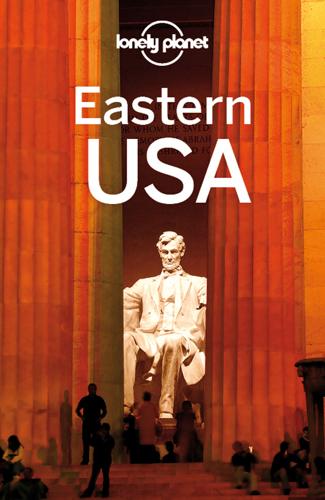
Eastern USA
by
Lonely Planet
Visits are available only as part of variously themed scheduled tours, which typically operate every 40 or 50 minutes. EAST VILLAGE Bordered roughly by 14th St, Lafayette St, E Houston St and the East River, the East Village has gentrified in the last decade or so, much to the horror of longtime tenants and punk-kid squatters, who have been around for decades. These days real-estate developers have the upper hand – although the ’hood has not yet shaken its image as an edgy, radical, be-yourself kind of place. Tompkins Square Park PARK This park between Seventh and Tenth Sts and Aves A and B is an unofficial border between the East Village (to the west) and Alphabet City (to the east).
…
Souvlaki GR GREEK $ (116 Stanton St, near Essex St; mains $5; 11am-midnight) Owners of a food truck have opened this little restaurant that looks like a soundstage for a film set on a Greek isle. Donut Plant DESSERT $ (379 Grand St, at Norfolk; doughnuts $2.75; 6:30am-6:30pm) Inventively flavored (eg peanut butter and jelly) doughnuts with all-natural ingredients. Another location in the Chelsea Hotel at 222 W 23rd St. EAST VILLAGE Every cuisine and style is represented in the East Village, though even the very best places are certainly more casual than stuffy. St Marks Place and around, from Third to Second Ave, has turned into a little Tokyo with loads of Japanese sushi and grill restaurants. Cookie-cutter Indian restaurants line Sixth St between First and Second Ave.
…
New Orleans Bourbon St gets the press, but the nightlife is better in the neighborhoods beyond where Sazerac swirls in glasses, and jazz, Dixieland and zydeco spill out of clubs (Click here) New York City It’s the city that doesn’t sleep, as Sinatra sang, and the drinkeries of the Lower East Side, East Village, Greenwich Village and Meatpacking District continue to do him proud (Click here) Athens, Georgia The compact little college town plugs in a mighty music scene that launched the B-52s, REM and Widespread Panic amid all the beer drinking (Click here) Minneapolis Everyone’s in a band, and there are bars and banged-up clubs aplenty to let them plug into (Click here) Memphis Par-tee on Beale St, a round-the-clock carnival of bars, to-go beer counters and live, fret-bending blues and rock music (Click here) Fallingwater (Click here), Frank Lloyd Wright H.

So Sad Today: Personal Essays
by
Melissa Broder
Published 15 Mar 2016
He was warmer, funnier, more neurotic and verbose than any of them. He had read more books than all of them combined. He called himself a custodian of words. He was menschy. The first thing I ever said to Ron Jeremy was, Shut up this is my game. I was day-drunk, as I always was then, leading a drinking game at my weekly East Village party. The party was called Drinkers with Writing Problems. Ron Jeremy had come with a friend of a friend to meet girls. He met me. Ron Jeremy says that he took one look at me and knew I was the sexually liberated Jewish girl of his dreams. Twenty minutes after we met, we made out in a photo booth.
…
We emailed every day he was away. When Ron Jeremy got back he brought me a framed photo of a grave he’d found at Père Lachaise Cemetery that had my last name on it. We went out and got drunk, then went back to his apartment, which was in Stuyvesant Town—a sort of middle-class housing project in the East Village. I was scared walking in. Stuyvesant Town had an Auschwitz aesthetic, and all of the redbrick buildings looked the same. I was like, How do I get out of here if I need to? He showed me the escape route on Avenue B and I felt safer. Also, I liked his apartment immediately. It had a retro seventies vibe, everything brown and velvet.
…
Of course, I didn’t quit everything. I continued to take pills: those prescribed to me and those not prescribed. I picked up weed again. I remember sitting by a fireplace in upstate New York, fucked up out of my mind on morphine, thinking, This sobriety is great. Then, one night, I was walking home in the East Village where I lived. I passed by a church. Standing outside was a group of people, mostly gay men, smoking cigarettes. It was eight thirty on a Tuesday night. I kind of knew they weren’t going to church. I asked the men who they were. I don’t know what compelled me to ask. That was the second miracle.

Only Americans Burn in Hell
by
Jarett Kobek
Published 10 Apr 2019
They dated for a short time, but it was fleeting. Denise had to move to Boston. Before she left New York, Denise introduced Fern to the demimondes of Manhattan’s East Village and the Lower East Side, two overlapping ethnic ghettos that had transformed into cesspools of petty crime and cheap drugs and were gentrifying into cesspools of international money laundering and the expensive drugs required to fuel international money laundering. It was in the East Village, where people were wearing terrible leather jackets and even worse denim jeans, that Fern met a boy named Anthony. Anthony was from Long Island, which was an island next to Manhattan.
…
Not even people who had passed the Cash Horizon would have heard. But in their case, the inaudibility was irrelevant: the rich are incapable of love or its recognition. Fern was neither human nor past the Cash Horizon. She was from Fairy Land. She heard every word. They talked, they hung around the East Village, they fell into bed, they wandered through the city, and because they’d both consumed endless amounts of media, they were imbued with the photogenic qualities of New York City, and these qualities freighted their wanderings with cultural weight. Everything was ridiculously romantic. On their third date, Anthony and Fern were walking in Washington Square Park.
…
This is what he sang: Every time I fuck them men I give ’em the doggone clap Oh, baby, I give ’em the doggone clap But that’s the kind of pussy that they really like You can fuck my cock Suck my cock Or leave my cock alone Oh, baby, honey, I piss all night long If you suck my pussy, baby I’ll suck your dick I’ll do it to ya, honey, till I make you shit Oh, baby, honey, all night long Long before the Year of the Unspoken Promise, Fern’d concluded that there was nothing new to experience, that all her future years would feature repeats of previous days. She was like a sexy vampire in a novel by Anne Rice. She was bored by eternal life. And then, in a bar in the East Village, surrounded by Ukrainian drunks and terrible black leather jackets, she discovered something new. Meeting Anthony was like being in San Francisco in 1965 AD prior to America’s construction of received drug experiences and dosing with high-grade Owsley lysergic acid diethylamide. Unexplored territory.
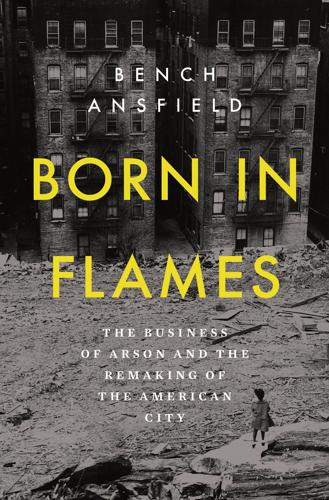
Born in Flames
by
Bench Ansfield
Published 15 Aug 2025
He continued: “As a practicing psychoanalyst, I have come to realize that people, as well as buildings, sometimes burn out.” Freudenberger’s epiphany came at the St. Mark’s Free Clinic, where, in the early 1970s, he served as a volunteer counselor to the throngs of hippie youth who congregated in the East Village. He would arrive around six p.m., after putting in a full day at his private practice on Park Avenue. To get to St. Marks Place, he had to traverse an East Village pockmarked by burned-out buildings. Some areas, particularly blocks with a large number of Puerto Rican residents, lost more than half their housing during the decade. The peak hours for arson in these years fell just after midnight, right when Freudenberger tended to leave the clinic.27 In 1971, after a year of sixteen-hour days, the psychologist found himself unable to get out of bed, having succumbed to what he would soon term “staff burn-out”—a condition that he associated with overdedicated and overachieving professionals, especially care workers like himself.
…
That the tenants who had literally been burned out were deemed ineligible for the diagnosis was typical of an arson discourse rife with elisions, smokescreens, and amnesia.29 * * * when the arson wave is remembered at all, it is most often confined to the county lines of the Bronx. That the conflagration had national proportions, that it involved capital flows global in reach, that it touched neighborhoods like Manhattan’s East Village and Boston’s Fenway—these inconvenient details are swept aside. The overrepresentation of Bronx ruin has made it hard to see that the borough was not so much exceptional as exemplary. Even those who recognized the nationwide scope of the arson wave and pushed against Bronx exceptionalism were liable to present the borough as its point of origin.
…
Later that year, gender-bending icon Sylvester opened “Dance (Disco Heat)” with the flirty line “Got a match?” The painter Martin Wong, Sylvester’s old collaborator from the drag troupe the Cockettes, immortalized the firefighter fetish in Big Heat, a large painting of two firemen kissing in the shadows of a towering burned-out tenement in the East Village. But reclaiming fire did not deliver protection from it. When the macho backlash against disco began in 1979, racist and homophobic hate was again written in flames. Mobs chanting “Disco sucks” piled and burned records at rallies all over the country. During the most famous of these, the Disco Demolition Night at Chicago’s Comiskey Park, some forty thousand vinyl records were ritualistically burned by a crowd of fifty thousand.40 The association between gayness and firesetting largely fell out of fashion after 1980.

The Gods of New York: Egotists, Idealists, Opportunists, and the Birth of the Modern City: 1986-1990
by
Jonathan Mahler
Published 11 Aug 2025
“I want that fucking medallion,” he said as he turned to leave. * * * *** Occupying ten and a half acres in the heart of the East Village, Tompkins Square Park stood at the nexus of New York’s colliding social and economic forces in 1988. The surrounding streets were clearly in transition, the boarded-up tenements that had been colonized by squatters gradually giving way to refurbished brownstones and new condo buildings. Neighboring SoHo, with its trendy restaurants and expensive loft apartments, clearly represented its future, but the East Village wasn’t quite there yet and it wasn’t going without a fight. The neighborhood’s stubborn resistance to gentrification was partly a function of its revolutionary history.
…
Barneys, once a purveyor of cut-rate men’s suits, reinvented itself as the destination for cutting-edge fashion, in the process bringing throngs of weekend shoppers to the once gritty neighborhood of Chelsea. With the art market booming and SoHo’s rents soaring, galleries were soon spilling over into the empty storefronts of the East Village and Lower East Side. Bars and restaurants followed, drawing new residents to the area. New York’s business leaders had long argued that the city’s most valuable resource—its land—could be leveraged more profitably if its old factories, warehouses, and rental apartment buildings were replaced by high-end cooperative apartments, condominiums, and office towers.
…
But in the eighties, the yuppies had come and so had the real estate developers. New construction had started to attract young families. And many of those still living in squats or sleeping in the park were more concerned about survival—or their next score—than overthrowing the system. Still, this was the East Village, where the revolutionary pilot was always lit. During the 1970s and into the early ’80s, the neighborhood had been left largely unpoliced by a depleted NYPD. But in more recent years, the city had been trying to impose order on an area with a long history of defying it. And in recent weeks, that effort had focused largely on Tompkins Square Park.
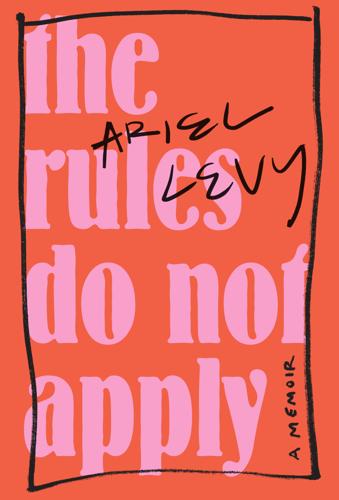
The Rules Do Not Apply
by
Ariel Levy
Published 14 Mar 2017
There is nothing I love more than traveling to a place where I know nobody, and where everything will be a surprise, and then writing about it. It’s like having a new lover—even the parts you aren’t crazy about have the crackling fascination of the unfamiliar. The first story I ever published was about another world only an hour from my apartment. I was twenty-two, living in the East Village in a sixth-floor walk-up with a roommate and roaches, working as an assistant at New York magazine. My friend Mayita was an intern in the photo department who knew about a nightclub for obese women in Queens. We talked about it during our lunch break, when we were walking around midtown Manhattan with our plastic containers of limp salad, dreading going back to the office.
…
It was as if Jen had access to a user’s manual for my body and brain that nobody else had known existed. I found her objectionable by all normal standards, but the way we connected wasn’t normal: It was uncanny, extreme, unnerving. “I like that dress,” she said once, about a blue terry-cloth beach cover-up I used to wear around the East Village as if it were real clothing. “I bought it for you,” I told her. When I’d tried it on at the store on East Seventh Street, I knew the second I looked in the mirror that I was seeing the version of me that she craved. I wore it constantly. Here, now, sitting in front of me, wearing jeans and a flannel shirt, drinking coffee from a paper cup, was that person—but without breasts, without the defining edge of desperation.
…
I know that Emma feels bad about going into motherhood without me—I felt bad about going into lesbianism without her when I met my first girlfriend. We dislike being out of sync. “Do we look alike?” she used to ask people in college. “On a spectrum of heads,” my father told her once, “you’re not that far apart.” A girl at a bar in the East Village asked us, “Which one of you came up with the personality?” when we were jabbering at her one night soon after we moved to New York City. We loved that. The last time I saw Emma before the wedding was in August, at the beach in Massachusetts, when we were each in our first trimester. Her mother, Margaret, has a carriage house in an eighteenth-century whaling village where the houses have little plaques by the doors stating the years they were built and the occupations of their first inhabitants: mariner; distiller; gentleman.
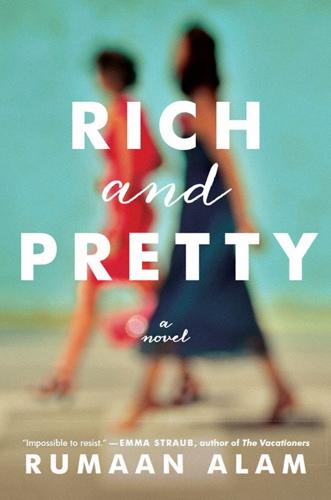
Rich and Pretty: A Novel
by
Rumaan Alam
Published 6 Jun 2016
She’ll walk past his desk a couple of times, which isn’t suspicious because his desk isn’t far from the kitchen, and the kitchen is where the coffee is, and by the third time, he’ll follow her in there, and she’ll make a wisecrack about the coffee, and he’ll say it’s not so bad, and they’ll talk, and exchange phone numbers, e-mail addresses, whatever, and then later they’ll leave the office at the same time, ride down together in the elevator and not talk because they both understand that the social contract dictates that sane people do not talk in elevators, and then he’ll let her go through the revolving door first, even though she’s pretty sure that etiquette has it that men precede women through revolving doors, and then they’ll both be standing on Broadway, and there will be traffic and that vague smell of charred, ethnic meat from the guy with the lunch cart on the corner, and he’ll suggest they get a drink, and she’ll say sure, and they’ll go to the Irish pub on Fifty-Fifth Street, because there’s nowhere else to go, and after two drinks they’ll be starving, and he’ll suggest they get dinner, but there’s nowhere to eat in this part of town, so they’ll take the train to Union Square and realize there’s nowhere to eat there either, and they’ll walk down into the East Village and find something, maybe ramen, or that Moroccan-y place that she always forgets she likes, and they’ll eat, and they’ll start touching each other, casually but deliberately, carefully, and the check will come and she’ll say let’s split it, and he’ll say no let me, even though he’s a temp and can’t make that much money, right?
…
from Antonia across the office, and she’s out into the lobby, then scanning her ID card on the little white pad to get in the door on the other side, which opens to the offices of the imprint they share the floor with (serious nonfiction about wars and maritime disasters) and the ladies’ room. Ladies’ room, what an idiotic phrase. When she and Sarah lived together, that first terrible apartment in the East Village, the summer after graduation, she tried for a time referring to the bathroom as the Shit House, which Sarah did not care for. The lighting is not good. There are no windows. Lauren washes her face, but maddeningly the faucet is the kind that you press and water comes out for about twelve seconds then shuts off so you have to keep pressing it again and again.
…
She can remember herself at fifteen, there’s a particular feeling around fifteen, the way synesthesists perceive in numbers a color, or a scent. Her friendship with Sarah has always been about nostalgia. At fifteen, it was about them at eleven; in college, it was about the tough-talking girls of fifteen they’d once been; in that shitty apartment in the East Village, it had been about the eager little undergraduate selves they’d sloughed off, the ones who flirted with socialism, or performance art. Now, what is it they see when they see each other? Old selves, old periodicals, a currency no longer in circulation. This house, it’s a museum. She pees, flushes the toilet.

The Upstarts: How Uber, Airbnb, and the Killer Companies of the New Silicon Valley Are Changing the World
by
Brad Stone
Published 30 Jan 2017
In 2012, with a steady stream of angry complaints from neighbors about Airbnb and other short-term rental sites pouring into government offices, the city council increased fines to twenty-five thousand dollars for repeat violations of the Multiple Dwelling Law, up from the original penalties of less than three thousand dollars.11 Airbnb was facing a wave of hostility from lawmakers and couldn’t seem to find a way to stand up for itself or its host community. And then Nigel Warren, a thirty-year-old resident of the East Village, came home one afternoon in September 2012 and received an irate phone call from his normally placid landlord, Abe Carrey, an elderly man from Queens. Abe yelled, “Who are you renting my apartment to? What the hell is going on there?” Warren’s stomach dropped. Warren is a hip, soft-spoken web designer—your typical East Village denizen, in other words. He had used Airbnb just three times to rent out his room while traveling over the previous year. His roommate, Julia, had rented out her room once.
…
Around that time, Camp introduced Salazar to Kalanick over e-mail. “Garrett introduced Travis as an adviser to the company,” Salazar says. “He didn’t want to get fully involved, but Garrett was trying to convince him. Garrett knew he could be perfect for it.” A few weeks later, Camp and Kalanick met Salazar in New York’s East Village and tried the app for the first time in authentic conditions. They hired a few random black-car drivers, who likely did not suspect that history was being made, gave them iPhones with the app, fanned out across lower Manhattan, and tried to summon the cars from various locations via smartphone.
…
Not only was driver growth still slow but the TLC was being inundated by complaints about Uber from taxi and limo drivers, just as the MTA had been in San Francisco. Officials were now expressing concerns about Uber’s regulatory compliance and threatening the company with a cease-and-desist. Sick of staying in hotels, Geidt checked into an Airbnb in the East Village. She would live there for five months. Right away she found that getting an Uber from her place to the newly opened New York office in Greenpoint, Brooklyn, was a hit-or-miss affair. Cars were scarce and wait times were high. The large livery fleets had all the leverage and demanded outrageous minimum payments to give the Uber app to their drivers.
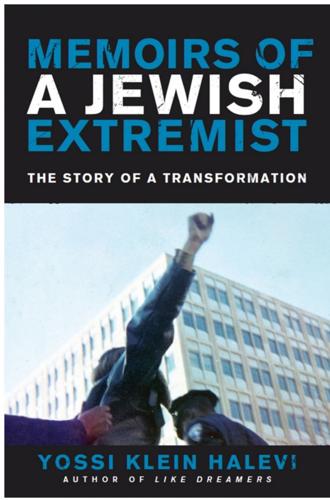
Memoirs of a Jewish Extremist: The Story of a Transformation
by
Yossi Klein Halevi
Published 13 Nov 1995
I cherished rhetoric, impersonal passion, the safest way to share emotion with my father. 6. On Sundays I helped my father deliver orders to customers. Our route passed through the East Village, whose streets were transformed into a foreign land: There were macrobiotic restaurants and Indian boutiques, posters announcing rock concerts in balloonlike letters, men in orange robes beating eggplant-shaped drums strapped around their necks. I wanted to leap from the car into the strangeness, into the “east” of the East Village. I had recently decided that I despised the West, that Western civilization had died in Auschwitz. My mother tried to interest me in her collection of classical records, but I refused to listen: The Nazis had played Beethoven in the camps.
…
I wanted to be what he almost became: a Jew who related to the world not with the grudges of a victim but with the generosity of a survivor. 2. The year of mourning ended. I quit the family business and went back to trying to become a journalist. I began writing a story about the JDL’s collapse, hoping to interest some New York publication. I moved to the East Village, a Lower Manhattan neighborhood populated by punk rockers, junkies, and aspiring artists. My apartment—roaches crawling behind wallpaper, a sheet for a bedroom door—was across the street from Hell’s Angels headquarters. The janitor of my building, an old Jewish woman, carried a pistol. At night Puerto Ricans lit fires in garbage cans and rolled them in the gutter.
…
If only Abe could avenge the Jews by humiliating their enemies, he would somehow make everything right. Once, in a restaurant, he found himself sitting beside a group of Polish tourists. He stood and proposed a toast to Poland. The Poles solemnly raised their glasses. “May Russian tanks invade your country and crush it,” he said. The outraged Poles hurriedly left. IN THE EAST VILLAGE, PUNK WAS happening. Abe and I stalked the streets and punk clubs, witnesses to the collapse of the West. Abe insisted that punk culture was inspired by the Final Solution: the leather clothes and Nazi Iron Crosses sold in punk shops, the lines outside clubs presided over by a bouncer wordlessly pointing to those allowed in, like a “selection,” and the tattoo they stamped on your hand when you entered.
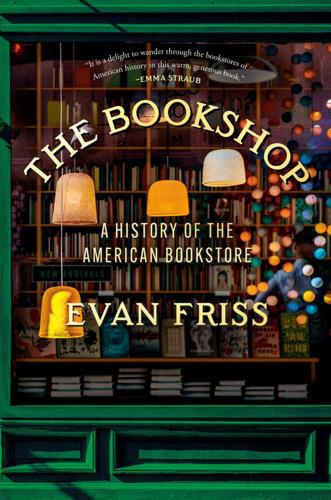
The Bookshop: A History of the American Bookstore
by
Evan Friss
Published 5 Aug 2024
The cluster of sidewalk bookstores below the park was just one of many in 1980s and ’90s New York. On nearby Sixth Avenue, readers could find Steinbeck and Stein, store catalogs and Dr. Seuss, paleontology and pornography. Like many book dealers before them, sidewalk sellers appreciated the company. Constellations of tables in the East Village, the Upper West Side, and Midtown invited readers who could browse many a shop with many a specialty. Nobody called them bookstores. They were stands, stalls, or tables. And almost nobody called the people standing behind them booksellers. They were labeled peddlers, hawkers, vendors, pests, nuisances, sidewalk cloggers, and criminals.
…
She was concurrently waging war on bike messengers, another group largely populated by financially insecure nonwhite men. Bike messengers and sidewalk booksellers seemed like soft targets: vulnerable and visible symbols of nuisance, blight, and danger. A few residents maintained that they made the city safer. “You won’t get mugged here,” one East Villager promised, pointing to the vendors. In the West Village, a fifty-one-year-old said he preferred to park near the tables: “No one’s going to break into my car, because the bookstore is always open.” The booksellers understood as much. “I’m a public character,” Hasan said, referring to a concept from Jane Jacobs’s most influential book, The Death and Life of Great American Cities.
…
Now they were prohibited entirely from certain blocks, including stretches of Fifth Avenue in Midtown, 125th Street in Harlem, and Fulton Street in Brooklyn. But they still didn’t need a license. Rudy Giuliani succeeded Dinkins as mayor and governed on a promise to make the city more livable, cracking down on small-time crime: squeegee men, people jumping subway turnstiles, and noncompliant sidewalk vendors. In the East Village, a lieutenant reported that removing law-breaking peddlers was “a top priority.” Any vendor within twenty feet of a building entrance or who did not allow enough room on the sidewalk for passersby would be cleared out. Across the city, the police began spray-painting yellow lines on the curbs to indicate the boundaries of bookselling territory.

USA Travel Guide
by
Lonely, Planet
Visits are available only as part of variously themed scheduled tours, which typically operate every 40 or 50 minutes. EAST VILLAGE Bordered roughly by 14th St, Lafayette St, E Houston St and the East River, the East Village has gentrified in the last decade or so, much to the horror of longtime tenants and punk-kid squatters, who have been around for decades. These days real-estate developers have the upper hand – although the ’hood has not yet shaken its image as an edgy, radical, be-yourself kind of place. Tompkins Square Park PARK This park between Seventh and Tenth Sts and Aves A and B is an unofficial border between the East Village (to the west) and Alphabet City (to the east).
…
Souvlaki GR GREEK $ Offline map Google map ( 116 Stanton St, near Essex St; mains $5; 11am-midnight) Owners of a food truck have opened this little restaurant that looks like a soundstage for a film set on a Greek isle. Donut Plant DESSERT $ Offline map Google map ( 379 Grand St, at Norfolk; doughnuts $2.75; 6:30am-6:30pm) Inventively flavored (eg peanut butter and jelly) doughnuts with all-natural ingredients. Another location in the Chelsea Hotel at 222 W 23rd St. EAST VILLAGE Every cuisine and style is represented in the East Village, though even the very best places are certainly more casual than stuffy. St Marks Place and around, from Third to Second Ave, has turned into a little Tokyo with loads of Japanese sushi and grill restaurants. Cookie-cutter Indian restaurants line Sixth St between First and Second Ave.
…
Head online to lonelyplanet.com/thorntree to chat with other travelers. Two to Three Weeks East Coasting The great dynamo of art, fashion and culture, New York City is America at her most urbane. Spend four days exploring the metropolis, visiting memorable people-watching hoods such as the West and East Villages, the Lower East Side, Soho, Nolita and the Upper West Side, with a museum hop down the Upper East Side. Have a ramble in Central Park, stroll the High Line and take a detour to Brooklyn. After big-city culture, catch your breath at the pretty beaches and enticing charms of the Hamptons on Long Island.
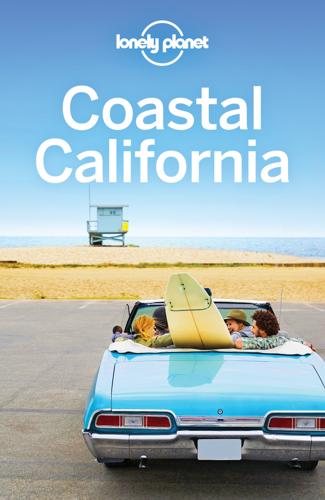
Coastal California Travel Guide
by
Lonely Planet
Shared plates, including crab cakes and smoked salmon, provide a tasty reason to linger. Sardine Factory LoungeLOUNGE ( MAP GOOGLE MAP ; %831-373-3775; www.sardinefactory.com; 701 Wave St; h5pm-midnight) The legendary restaurant’s fireplace lounge pours wines by the glass, delivers filling appetizers to your table and has a live piano player most nights. East Village Coffee LoungeCAFE, LOUNGE ( MAP GOOGLE MAP ; %831-373-5601; www.facebook.com/eastvillagemonterey; 498 Washington St; h6am-10pm Mon-Fri, from 7am Sat & Sun; W) Downtown Monterey coffee shop on a busy corner brews with fair-trade, organic beans. At night, it pulls off a big-city lounge vibe with film, open-mike and live-music nights and an all-important booze license.
…
Fogcatcher InnHOTEL$$$ ( GOOGLE MAP ; %805-927-1400; www.fogcatcherinn.com; 6400 Moonstone Beach Dr; r from $204; Ws#) Moonstone Beach Dr hotels are nearly identical, but this one stands out with its pool and hot tub. Faux English Tudor–style cottages harboring quietly luxurious modern rooms, some with fireplaces and ocean views. Pet fee $75. 5Eating & Drinking It’s a short walk between cutesy cafes and interesting restaurants in Cambria's East Village. Linn's Easy as Pie CafeAMERICAN$ ( GOOGLE MAP ; %805-927-0371; www.linnsfruitbin.com; 4251 Bridge St; dishes $6-12; h10am-7pm Mon-Thu, to 8m Fri-Sat; c) If you don’t have time to visit Linn’s original farm stand on Santa Rosa Creek Rd (a 20-minute drive east via Main St), you can fork into its famous olallieberry pie at this take-out counter that delivers soups, salads, sandwiches and comfort fare such as chicken pot pie to a sunny deck.
…
Carve out a slip on the communal table between the hipsters and yuppies, or get your own slab of wood on the elegant stone terrace, and dine on imaginative small plates (raw yellowtail spiced with chili and mint and drenched in olive oil and blood orange) and sensational thin-crust, wood-fired pizza. Long Beach & San Pedro oFourth & OliveALSATIAN$$ ( GOOGLE MAP ; %562-269-0731; www.4thandolive.com; 743 E 4th St, East Village, Long Beach; mains $15-29; h4:30-10pm Mon & Tue, 11am-10pm Wed, Thu & Sun, 11am-11pm Fri & Sat) There's much to love about this new Cal-French bistro: farmers-market produce, small-farm-raised beef and pork, housemade sausages, classic dishes such as steak frites and choucroute garnie, and low-key service, all under a high-raftered roof with generous windows to watch the world go by.
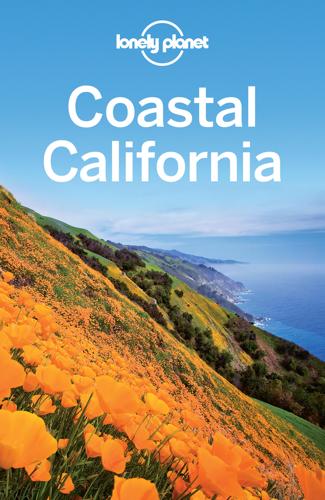
Coastal California
by
Lonely Planet
Bluebird Inn MOTEL $$ ( 805-927-4634, 800-552-5434; http://bluebirdmotel.com; 1880 Main St; d $70-220; ) With peaceful gardens, this friendly East Village motel offers basic, budget-conscious rooms, some with fireplaces and private creekside patios or balconies. Wi-fi in lobby only. HI Cambria Bridge Street Inn HOSTEL $ ( 805-927-7653; www.bridgestreetinncambria.com; 4314 Bridge St; dm $22-25, r $45-80; check-in 5-9pm; ) Inside a 19th-century parsonage, this tiny hostel sleeps more like a grandmotherly B&B. It has floral charm and a communal kitchen, but the shabby-chic rooms are thin-walled. Book ahead. Eating & Drinking It’s a short walk between several cafes and eateries in the East Village. Indigo Moon CALIFORNIAN $$ (www.indigomooncafe.com; 1980 Main St; lunch mains $6-13, dinner mains $13-29; 10am-4pm & 5-9pm Mon-Sat, 10am-3pm & 5-9pm Sun) Inside this artisan cheese and wine shop, breezy bistro tables complement market-fresh salads, toasty sandwiches and sweet-potato fries.
…
A Taste of Monterey WINE BAR (www.atasteofmonterey.com; 700 Cannery Row; tasting fee $5-20; 11am-6pm) Sample medal-winning Monterey County wines from as far away as the Santa Lucia Highlands while soaking up dreamy sea views, then peruse thoughtful exhibits on barrel-making and cork production. East Village Coffee Lounge CAFE (www.eastvillagecoffeelounge.com; 498 Washington St; 6am-late Mon-Fri, 7am-late Sat & Sun) Sleek coffeehouse on a busy downtown corner brews fair-trade, organic beans. At night, it pulls off a big-city lounge vibe with film, open-mic, live-music and DJ nights and an all-important booze license.
…
Local luminaries gossip over lunch on the back patio, while dinner dates order lemon risotto, crab-stuffed trout or coriander-encrusted chicken. Sow’s Ear AMERICAN $$$ ( 805-927-4865; www.thesowsear.com; 2248 Main St; dinner mains $11-30; 5-9pm) For over a decade, the old-school Sow’s Ear has been whipping up haute comfort food inside a cozy house on the East Village’s main drag. Make reservations to dine on traditional lobster pot pie, pork tenderloin with olallieberry chutney and fresh bread baked in terracotta flowerpots. Linn’s Easy as Pie Cafe DELI, BAKERY $ (www.linnsfruitbin.com; 4251 Bridge St; items $4-10; 10am-6pm Oct-Apr, to 7pm May-Sep; ) If you don’t have time to visit Linn’s Fruit Bin, the original farm store out on Santa Rosa Creek Rd (a 20-minute drive east via Main St), you can fork into their famous olallieberry pies and preserves at this take-out counter delivering salads, sandwiches and comfort fare to a sunny East Village patio.

Frommer's Portable San Diego
by
Mark Hiss
Published 2 Nov 2007
Indigo Grill is at 1536 India St., Little Italy (& 619/234-6802). 880 Harbor Island Dr., Embarcadero. & 619/298-6802. www.cohnrestaurants.com. Reservations recommended. Main courses $11–$25 lunch; $22–$39 dinner. AE, DC, DISC, MC, V. Sun–Thurs 11:30am–10pm; Fri–Sat 11:30am–11pm. Free parking. Bus: 923 or 992. MODERATE FRENCH When it opened in 2004, this East Village restaurant created an immediate buzz. Had the owners struck upon some cutting-edge trend? No, it was a simple idea, really; something you’ll find everywhere from Amsterdam to Zanzibar. It’s a bistro. Creative, whimsical touches abound—such as a children’s area, a retail space, and a patio built for two—but this is an otherwise straightforward enterprise, infused with the refined tastes and joie de vivre of its proprietors.
…
The fact is, though, while this kind of eatery can be found easily in other cities, it’s still a rarity here. The neighborly conviviality—combined with a short-but-sweet French-inspired menu covering breakfast, lunch, and dinner—makes for a winning dining experience, and one unique enough to create a stir in evermorphing San Diego. Cafe Chloe 721 Ninth Ave. (at G St.), East Village. & 619/232-3242. www.cafechloe.com. Reservations for parties of 5 or more only. Main courses $8–$13 breakfast, $9–$13 lunch, $15–$28 dinner. AE, MC, V. Mon 11am–10pm; Tues–Fri 7am–10pm; Sat 8am–10pm; Sun 9am–9pm. Bus: 3, 5, 11, 210, 901, or 929. The Fish Market SEAFOOD/SUSHI The bustling Fish Market at the end of the G Street Pier on the Embarcadero is a San Diego institution.
…
Tues– Sat 10am–4:30pm; Sun 1:30–4:30pm. Closed Sept. Bus: 7 or 7A/B. 4 More Attractions DOWNTOWN & BEYOND In 2004, downtown San Diego completed a huge construction project, the Padres’ PETCO Park (p. 146) which has extended the rebuilt downtown a few blocks farther east. Real estate developers in the “East Village” are stepping up to the plate in hopes of cashing in on a home run. In the meantime, you can wander from the turn-of-the-20th-cento the joyful, modern architecture of the tury Gaslamp Quarter Horton Plaza shopping center (p. 149). The Gaslamp consists of 161⁄2 blocks of restored historic buildings.

I Hate the Internet: A Novel
by
Jarett Kobek
Published 3 Nov 2016
Abrahamovic Petrovitch as a woman belonging to the social construct of the White race was treated as the more interesting story than that of Jeremy Winterbloss as a man belonging to the social construct of the Black race. Nearly ten years after finishing the last issue of Trill, Adeline was in demand. For her self, as her self. The details of her life became fodder for public discourse. People were fascinated that she had lived through the grimy old East Village. People were interested that her best friend, Baby, was a gay writer of Science Fiction and the author of Annie Zero. People wanted to know how Adeline had kept the secret for so many years. People were fascinated by a woman working in genre comics and doing it so well. People were interested that she lived in San Francisco and wanted her opinions about the tech industry and the dotcom boom of the late 1990s.
…
It was at Crossroads that Adeline had helped several pregnant girls procure their abortions. She’d seen what lawsuits did to people. Divorce proceedings and custody battles seemed, more than anything, to harm children. So she packed up and moved to San Francisco. Her boyfriend at the time, a former East Village punk rocker turned legal assistant, came with her. He didn’t last. As a single mother drawing over 30 pages of comic art every month, Adeline didn’t have much time for a social life. This was okay. She was in her thirties. She’d whittled away her teens and her twenties with questionable sex, drug use, and novels in translation.
…
Her name was Stephanie. She tried very hard to forge a working relationship with Adeline. Despite her efforts, Stephanie couldn’t bridge the gap. She and Adeline were very different. While Stephanie was writing her Master’s thesis on Barbara Kruger at Stanford, Adeline was stepping over dope sick East Village junkies and drawing Felix Trill’s misadventures with amorous cephalopods. And the shared sexual past weighed on Stephanie’s mind. Aware of the distance between them, Stephanie spoke to Adeline in an unusually slow and loud manner, which wasn’t that far from how some people talk to the foreign, the blind and the mentally backwards.
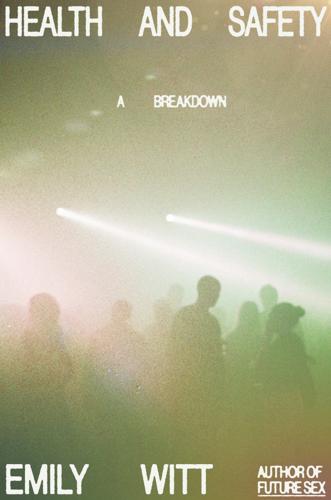
Health and Safety: A Breakdown
by
Emily Witt
Published 16 Sep 2024
Matt sold mushrooms, worked as an attendant at a studio that rented sensory deprivation tanks by the hour, and had the jaw, torso, and height of a male model. He had noticed me at that first ayahuasca ceremony and found an excuse to get my number from the organizer. Our first date was at a fading health food restaurant in the East Village called Quintessence that served only raw, organic, vegan, gluten-free, and soy-free food and where I ate a bowl of squash soup, which set the hippie tone of the time we spent together. When I met him, Matt was almost a decade into an intensive pursuit of self-help. This pursuit was so completist that it often made me wonder if the best thing that Matt could do to help himself might be to pause his obsession with his personal health and wellness.
…
(“Excuse me,” she had said, when she addressed him for the first time. “Your guides are telling my guides I need to talk to you.”) The other chapter recounted Matt’s five encounters with ghosts. We would often trip-sit for each other. One night Matt bought salvia, which was legal, from a head shop on Saint Mark’s Place in the East Village and we smoked it together, producing a receding angular dissociation I thought of as “triangle world” and uncontrollable laughter. On another day he drove us in his grandmother’s Toyota Camry to a peyote ceremony in Pennsylvania organized by the Native American Church. He told me that, as a woman, I should wear a long skirt out of respect for a tradition that had begun in the nineteenth century, when the Plains Indians developed the rituals of a pan-tribal spiritual resistance to colonization.
…
As the seventies progressed, and money flowed into discotheques like Studio 54, the Loft kept serving a crowd seeking a purer, more spiritual experience of dance, who shared an understanding that exclusivity and celebrity came with economic discrimination (there was a difference between the Loft’s membership system, which was free, and helped keep a dance floor of queer, Black, and Latino people who might be using illegal drugs safe from cops and bigots, and a door oriented toward bringing in money and famous people). The Loft still existed in 2016, and continued after Mancuso died late that year; there were parties at the Ukrainian Cultural Center in the East Village every few months. They had taken on the feel-good character of a community center potluck. Old neighborhood heads would come out and dance, but in the present day the Loft was more of an homage to the past than a vanguard of new music, and the parties ended at one in the morning where once they would have continued into the next day.[*] When I first moved to New York in the early 2000s, the big clubs of the nineties were dead, and I rarely heard techno or house at the Manhattan bars with dance floors I went to, like Lit, Orchard Bar, or APT.
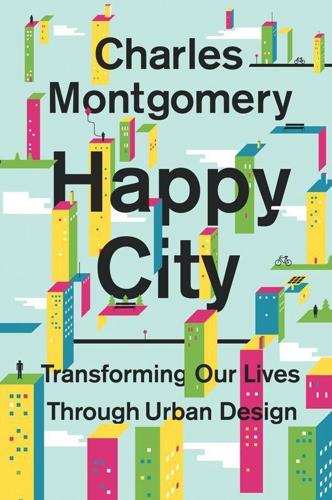
Happy City: Transforming Our Lives Through Urban Design
by
Charles Montgomery
Published 12 Nov 2013
The museum commissioned Atelier Bow-Wow, a Japanese architectural firm, to design a temporary shelter in an empty lot in the East Village, then invited a team of collaborators from around the world to use it as a base for our experiments. The museum’s curators hoped that the BMW Guggenheim Lab would be an engine for creating new solutions for city life. They had money to spend and interns to assist. I planned on using their resources to collect data on the effect that city spaces had on people’s emotions and behavior. It was a fantastic opportunity: there are few better places to explore extreme urbanity than Manhattan. The lab’s neighborhood, which straddled the boundary between the East Village and the Lower East Side, is a mashup of tenement-style walk-ups and newer mid-rise condo towers bisected by furious traffic arteries and crowded, cracked sidewalks.
…
This is already happening. For years, television largely depicted American family and social life as suburban, but in the past two decades the hip protagonists of programs such as Friends and Sex and the City were shown in downtown apartments. Formerly low-status neighborhoods such as Manhattan’s East Village have been invaded by the upwardly mobile, and condominium towers designed by starchitects are sprouting between the tenements. New generations are growing up with a different mental library of stories that shape their domestic tastes. Errors from Above Unfortunately, when choosing how to live or move, most of us are not as free as we think.
…
For Whitman, it was as though in all that shared seeing, jostling, and touching, the crowded city was somehow creating a common soul. You can still feel it today if you walk its streets long enough. But anyone living in hyperdensity will tell you that it is not possible to live only amid the crowd. I learned that quickly in my East Village apartment. The place was on the second floor of an old tenement on East Thirteenth Street. The kitchen, living room, bathroom, and bedroom were arranged in a space the size and dimensions of two on-street parking places. The view consisted of a brick wall punctuated by grimy windows fixed with air conditioners and rusting fire escapes.
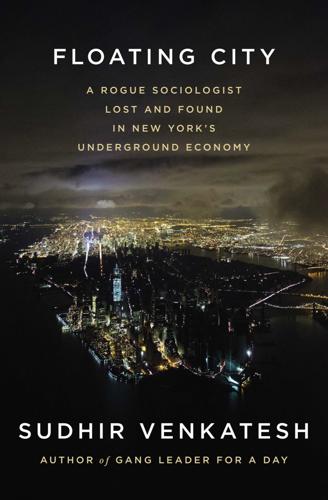
Floating City: A Rogue Sociologist Lost and Found in New York's Underground Economy
by
Sudhir Venkatesh
Published 11 Sep 2013
But what I really needed, if I wanted to launch another formal study—and I always did—was for Shine to introduce me to these bartenders and bellhops so I could put some meaty details in a grant application and hire research assistants and all the rest of the formal machinery that makes hanging out with drug dealers academically respectable. Once again, I had to be patient. • • • While I was waiting for Shine to come through, Betsy, Michael, and Carter started inviting me to their parties. There were two kinds. The artsy parties happened down in Soho and the East Village, where their artsy friends lived. The family parties were all on the Upper East Side, where their parents lived. At both, people drank and caroused with bohemian abandon late into the night. Sometimes I felt like Jim Fowler on Mutual of Omaha’s Wild Kingdom, gazing at strange creatures from the safety of my ethnographic pith helmet.
…
Abbie, 128 Amy, 218–20 Analise, 6–26, 49, 133–35, 158–60, 165, 173–74, 176, 177, 215–35, 242, 253–58, 265, 266–71 Amy and, 218–20 apartment of, 215–16 art gallery and, 230–34, 237–41, 267 attack on, 226–29, 232 Betsy and, 133–34 Brittany and, 11–13, 17–18, 20, 21, 220–22, 226, 234, 237–41, 254–57 drug use and, 10–13, 20 J.B. and, 13–18, 21, 22, 159–61, 215–16, 226–29, 256 Jo Jo and, 221–25, 256 Kate and, 230–34, 237–38, 267 Kimberly and, 219, 221–25 as madam, 17–23, 25, 26, 135, 158–59, 215–29, 232–33, 237, 242–43, 254, 255, 267 Shine and, 7–13, 101, 215, 241, 256, 272 S.V.’s meeting of, 48–49 Angela, 56–60, 62, 71, 72, 78–79, 83–88, 94, 98, 103–4, 110–25, 135–39, 141, 143–46, 154, 158, 162, 163, 172, 173, 175, 182–83, 202, 221, 223, 224, 230, 234, 242, 257–60, 262, 263, 265, 266, 271, 272 apartment of, 112–16, 118–24, 135–37, 162, 165, 231 departure for Dominican Republic, 251, 264 Internet ad of, 111–12 Azad, 75–77, 91 Bearman, Peter, 28, 130, 167–68 black market, 76, 137, 176, 177, 233, 242, 243 wealthy young philanthropists and, 104 blacks, tangle of pathology and, 144 Bodega de la Familia, La, 103–4 Bourdieu, Pierre, 165 BRIC nations, 177 bricolage, 5 Brittany, 11–13, 17–18, 20, 21, 159, 160, 220–222, 226, 234, 237–41, 254–57 brokers, 173–74 Capone, Al, 142 Carla Consuelo, 113–26, 135–38, 143–46, 162–63, 173, 177, 200, 221, 224, 234, 251–54, 257, 260, 262, 265, 266, 271 attacks on, 116–21, 123, 124, 189–90, 196–98, 236, 253, 258–60 as escort, 125–26, 236, 251 Margot Kerry and, 163–66, 189–90, 196–98, 199, 200, 251–53, 258–60 Carlos, 67–68 Carter, Mindy, 7 Castells, Manuel, 176 Cathy, 183–89, 190, 204 Chelsea, 3, 56, 63 Chicago, 8, 85, 271 gangs in, 49, 54, 62, 63, 71, 86, 103, 171 gentrification in, 56 neighborhoods in, 5, 31 New York contrasted with, 8, 24, 31, 32, 33, 42, 56, 62, 201, 269–71 S.V.’s documentary on housing projects in, 10, 166–67, 179, 180 S.V.’s work in, 23–24, 30, 86, 104, 130, 132–33, 144, 166, 178, 250 underground economy in, 5, 40 young philanthropists and, 109 Chicago, University of, 5, 27–29, 31 Cicourel, Aaron, 175, 178 Cincy, 112–16, 118, 121–24 Clark, Michael, 30, 32, 33 class divisions, 145, 176 low income, 175, 176 middle and upper class, 176 moving across, 165, 176–78, 201, 202, 238, 242 new, 177–78 cocaine: crack, 1, 99–100, 143 powdered, 100, 139 Shine’s business in, 1, 9–11, 127, 129–32, 138–43, 207–14, 241, 243, 273 Cohan, 101 Collins, Michael, 42–43, 82, 89, 95–96, 146–47, 197 Columbia University, 27–28, 40, 47 ethical research methods and, 179–80 S.V. at, 130, 166, 185, 269 S.V.’s arrival at, 27, 29–30, 261 Conover, Mortimer, 50–54, 60, 61, 73, 84, 150, 263 stroke suffered by, 51–52 crack cocaine, 1, 99–100, 143 crime, observing, 103 cultural capital, 165, 167, 209–10, 249, 253 cultural repertoire, 213 Darlene, 183, 185, 190–91, 215 Declining Significance of Race, The (Wilson), 29 developing world, 177 dot-com bubble, 98, 236 drugs, drug dealing, 7–8, 52, 76, 129, 138, 177, 242 Analise and, 10–13, 20 cocaine: crack, 1, 99–100, 143 powdered, 100, 139 Shine’s business in, 1, 9–11, 127, 129–32, 138–43, 207–14, 241, 243, 273 Manjun and, 89, 91, 96 Shine and, 1, 4, 9–11, 58 in suburbs, 144 East Village, 132 economy, mainstream, in New York, 39 economy, underground, 40, 86, 92 brokers in, 173–74 in Chicago, 5, 40 connecting to overworld, 178 connectivity in, 172–73 floating communities and, 53–54 legal system and, 171 role of, in lives of middle class and wealthy, 182 social relations in, 52–54 speculation about, 39 trust and confidentiality in, 138 economy, underground, in New York, 1–2, 24, 41–42, 61–62, 86–87, 98, 177, 242 apartment renting and, 84 bank accounts and, 83, 84, 87 black market, 76, 137, 176, 177, 233, 242, 243 wealthy young philanthropists and, 104 day laborers in, 72–73 drugs, see drugs, drug dealing as floating community, 53–54, 58 in Harlem, 36–37, 39–40, 175 health care and, 83, 84 sex work, see sex industry Social Security and, 77 spread into surrounding world, 71 violence in, 89, 196–97 entropy, 242 escort services, 43–44, 84, 121, 182–83, 202, 225, 242 Analise and, 17–23, 25, 26, 135, 158–59, 215–29, 232–33, 237, 242–43, 254, 255, 267 Carla and, 125–26, 236, 251 Fiona and, 245–47 Morgan and, 245–48 quitting in, 240 see also prostitution, prostitutes ethnography, 1, 39 Evalina, 2–3, 9, 11–12, 101, 141, 158, 256 Shine and, 10, 12, 214 Fiona, 245–47 floating communities, 53–54, 58, 137 see also underground economy Foner, Nancy, 94 food stamps, 108 Freakonomics: A Rogue Economist Explores the Hidden Side of Everything (Levitt and Dubner), 39, 98 Friedman, Milton, 209 Gang Leader for a Day (Venkatesh), 1, 29, 40 gangs, 99 in Chicago, 49, 54, 62, 63, 71, 86, 103, 171 gang leaders’ self-image and, 142 Gans, Herbert, 27–28, 167, 203 Geertz, Clifford, 25 generalizability problem, 40 gentrification, 4, 38, 55–56, 177 Giuliani, Rudy, 4, 63, 68, 76, 78, 83 global cities, globalization, 37–39, 61, 93–95, 172, 177, 241, 252, 271, 272 floating and, 137; see also floating communities informational cities and, 176 New York as, 5, 37–40, 93–94, 137, 172, 201, 215, 269–70 sociological study of, 38 Greenpoint, 114 Harlem, 31, 35–37, 59–60, 74, 99, 102, 105, 209–10 underground economy in, 36–37, 39–40, 175 Harvard University, 48, 165 wine tasting, 48–49, 133–34, 224 Harvey, David, 37 Hell’s Kitchen, 4, 5, 55–56, 60, 95, 111, 147, 215 hipsters, 112, 114 homeless, 72–73 immigrants, 93–94, 177, 202 underground railroad for, 97 informational cities, 176 international law, 173 Internet: entrepreneurs, 98 prostitution and, 111–12, 114, 252 Janowitz, Morris, 85 J.B.
…
(Junebug), 13–18, 21, 22, 159–61, 215–16, 226–29, 235–38, 253–54, 256, 257, 265 film career of, 159, 160, 215, 226, 229–30, 235–37, 255, 256, 268 Shine and, 255 Jimmy, 261–64 johns, 186, 194–95 emotional exchange and, 187–88, 193–95 Jonathan, 192–95 Martin, 186–89, 191–95, 203–6, 250, 257–58 money exchange as protection for, 187–88 Nate, 192–95 Jo Jo, 221–25, 256 Jonathan, 192–95 Joshi, 77–79, 81–82, 88, 91, 162, 263 Juan, 157–58, 165, 207–13, 237–39 Jung, Carl, 236 Karina, 171–72, 173 Kate, 230–34, 237–38, 267 Kerry, Margot, 147, 149–55, 158, 163–74, 175–83, 224, 257, 263–65, 271 background of, 152–53 Carla and, 163–66, 189–90, 196–98, 199, 200, 251–53, 258–60 financial advice given by, 245–48 finishing school of, 199–201 as madam, 154–55, 163–66, 168–73, 176, 181–83, 185, 189–92, 199–201, 215, 230, 232–33, 238, 245–49, 251, 252, 264 sex business quit by, 264, 270 strip clubs and, 180–81 Khan, Shamus, 224 Kimberly, 219, 221–25 Kings County Hospital, 118 Kotlowitz, Alex, 105 Kozol, Jonathan, 105 Kristina, 83–86 La Bodega de la Familia, 103–4 Latino community, 103–4 law, 171 international, 173 Levitt, Steven, 54, 98, 130 Liebow, Elliot, 145 London, 37, 39, 172, 176 Louise, 165 Lower East Side, 63, 98, 103, 104, 110 Madrigal, Father, 113, 115, 118–20, 122–24 Manhattan Nights, 172 see also Kerry, Margot Manjun, 56–63, 65–71, 73, 77, 80–81, 84–86, 88, 91, 94, 111, 138, 143–46, 154, 155, 162, 172–73, 175, 223, 225, 231, 257, 265, 266, 270–72 disappearance of, 88, 91, 95–96, 146 drug trade and, 89, 91, 96 forced prostitution and, 91–92 shop of, 56–59, 61–63, 65, 69–72, 76, 77–80, 82–84, 86–90, 150 thief and, 80, 82, 89, 91 Margot, see Kerry, Margot Marjorie, 204 Martin, 186–89, 191–95, 203–6, 250, 257–58 Marx, Karl, 209 Max, 21 McCombs, Silvia, 105–9 Merton, Robert, 27, 167, 217 Michael (acquaintance of Analise), 160 Michael (acquaintance of Shine), 127, 128, 129 Michael (brother of Shine), 155–57 Midtown, 4, 62, 63, 74, 83–84, 97, 98, 102, 126, 129, 149 Mills, C. Wright, 27–28, 167 Morgan, 245–48 Mortimer, see Conover, Mortimer Moynihan Report, 144 Nate, 192–95 New York, 271–72 Chelsea, 3, 56, 63 Chicago contrasted with, 8, 24, 31, 32, 33, 42, 56, 62, 201, 269–71 contrasts in, 38–39 East Village, 132 gentrification in, 4, 38, 55–56, 177 as global city, 5, 37–40, 93–94, 137, 172, 176, 177, 201, 215, 269–70 Greenpoint, 114 Harlem, 31, 35–37, 59–60, 74, 99, 102, 105, 209–10 underground economy in, 36–37, 39–40, 175 Hell’s Kitchen, 4, 5, 55–56, 60, 95, 111, 147, 215 hipsters in, 112, 114 immigrants in, 93–95, 97, 177, 202 Latino community in, 103–4 Lower East Side, 63, 98, 103, 104, 110 mainstream economy in, 39 Midtown, 4, 62, 63, 74, 83–84, 97, 98, 102, 126, 129, 149 poverty in, 94 sex work in, see sex industry sociology and, 23–25 Soho, 3, 132, 149 suburbanization of, 95 Times Square area, 76 Wall Street, 4, 63, 129, 203 Williamsburg, 114 New York, underground economy in, 1–2, 24, 41–42, 61–62, 86–87, 98, 177, 242 apartment renting and, 84 bank accounts and, 83, 84, 87 black market, 76, 137, 176, 177, 233, 242, 243 wealthy young philanthropists and, 104 day laborers in, 72–73 drugs, see drugs, drug dealing as floating community, 53–54, 58 in Harlem, 36–37, 39–40, 175 health care and, 83, 84 sex work, see sex industry Social Security and, 77 spread into surrounding world, 71 violence in, 89, 196–97 9/11 attacks, 97 Ninth Avenue Family Video, 56–59, 61–63, 65, 69–72, 76, 77–80, 82–84, 86–90, 150 Park, Robert, 29 Patriot Act, 97 philanthropists, young, 104–10, 132 black market and, 104 poor, 23, 94, 201–2, 225 hard work and resilience among, 143–46 stereotypes about, 143–44 welfare and, 106 Silvia and, 106, 108, 109 porn shops, 68–69, 71, 72, 74, 90, 202 of Manjun, 56–59, 61–63, 65, 69–72, 76, 77–80, 82–84, 86–90, 150 of Santosh, 74–75, 88 poverty, see poor prostitution, prostitutes, 1–2, 22, 26, 42–44, 52, 75–76, 110–11, 177 Analise and, 17–23, 25, 26, 135, 158–59, 215–29, 232–33, 237, 242–43, 254, 255, 267 Angela and, 56–60, 62, 71, 72, 78, 83–88, 98, 104, 110–25, 135–39 aspiring artist types and, 184–85 Azad and, 75–76 Brittany and, 11–13, 17–18, 20, 21, 159, 160, 220–222, 226, 234, 237–41 Carla and, see Carla Consuelo Cathy and, 183–89, 190, 204 Cincy and, 112–16, 118, 121–24 clients and, see sex industry clients escort services, see escort services exit strategies and, 232–33, 245–48 female empowerment and, 232 forced, 91–92 high-end, 182–85, 192, 202, 205, 252, 263; see also escort services Internet and, 111–12, 114, 252 Jo Jo and, 221–25, 256 Kimberly and, 219, 221–25 Manjun and, 91–92 Margot Kerry and, 149–55, 163–66, 168–73, 176, 181–83, 185, 189–92, 199–201, 215, 230, 232–33, 238, 245–49, 251, 252, 264 Santosh and, 74 street, 42–43, 71, 73, 78, 84, 98 Vonnie and, 110–25, 135–39, 141 women from business world in, 184–85 Rajesh, 75–76, 91, 98 revanchist policies, 177 Ricky, 198, 258 Santosh, 74–76, 88, 90–93, 97–98, 145–46, 231, 233, 270, 271 Sassen, Saskia, 37, 38 Savage Inequalities (Kozol), 105 September 11 attacks, 97 sex industry, 61, 71–76, 202, 264 aspirations and, 155 escort services, 43–44, 84, 121, 182–83, 202, 225, 242 Analise and, 17–23, 25, 26, 135, 158–59, 215–29, 232–33, 237, 242–43, 254, 255, 267 Carla and, 125–26, 236, 251 Fiona and, 245–47 Morgan and, 245–48 quitting in, 240 ethnic variance in, 181 exit strategies and, 232–33, 245–48 Kristina and, 83–86 multinational nature of, 71–72 networked community and, 84–85 porn shops, 68–69, 71, 72, 74, 90, 202 of Manjun, 56–59, 61–63, 65, 69–72, 76, 77–80, 82–84, 86–90, 150 of Santosh, 74–75, 88 prostitution, prostitutes, 1–2, 22, 26, 42–44, 52, 75–76, 110–11, 177 Analise and, 17–23, 25, 26, 135, 158–59, 215–29, 232–33, 237, 242–43, 254, 255, 267 Angela and, 56–60, 62, 71, 72, 78, 83–88, 98, 104, 110–25, 135–39 aspiring artist types and, 184–85 Azad and, 75–76 Brittany and, 11–13, 17–18, 20, 21, 159, 160, 220–222, 226, 234, 237–41 Carla and, see Carla Consuelo Cathy and, 183–89, 190, 204 Cincy and, 112–16, 118, 121–24 clients and, see sex industry clients escort services, see escort services exit strategies and, 232–33, 245–48 female empowerment and, 232 forced, 91–92 high-end, 182–85, 192, 202, 205, 252, 263; see also escort services Internet and, 111–12, 114, 252 Jo Jo and, 221–25, 256 Kimberly and, 219, 221–25 Manjun and, 91–92 Margot Kerry and, 149–55, 163–66, 168–73, 176, 181–83, 185, 189–92, 199–201, 215, 230, 232–33, 238, 245–49, 251, 252, 264 Santosh and, 74 street, 42–43, 71, 73, 78, 84, 98 Vonnie and, 110–25, 135–39, 141 women from business world in, 184–85 Santosh and, 74–75 social networks and, 73 socioeconomic and ethnic mixing in, 164–66 strip clubs, 6, 44–47, 49–50, 185, 202, 261–62 Margot Kerry and, 180–81 Mortimer and, 50–54 Times Square and, 76 transition to normal life, 245–48 white women in, 158 sex industry clients, 186, 194–95 emotional exchange and, 187–88, 193–95 Jonathan, 192–95 Martin, 186–89, 191–95, 203–6, 250, 257–58 money exchange as protection for, 187–88 Nate, 192–95 Sex Workers’ Project, Urban Justice Center, 2, 43, 47, 71, 73, 83, 175 Shakespeare, William, 233 Shine, 1–6, 12, 16, 23–25, 35–37, 42, 54–59, 62–63, 69–71, 98–103, 126–32, 138–43, 143–46, 155–58, 162, 175–77, 179–80, 196, 207–14, 233, 234, 242–43, 255–58, 264–73 Analise and, 7–13, 101, 215, 241, 256, 272 art galleries and, 2–6, 101, 214–15, 241, 265–66, 273 cocaine business of, 1, 4, 9–11, 58, 127, 129–32, 138–43, 207–14, 241, 243, 273 conflict resolution and, 172 Evalina and, 10, 12, 214 family of, 155–57, 265 father of, 156 geographical boundaries and, 102 at hotel bar, 126–29 J.B. and, 255 Juan and, 157–58, 165, 207–13, 237–39 mother of, 156–57, 210 as pimp, 99 staff of, 138–43, 157–58, 207–8, 231–32, 240 S.V.’s meeting of, 1, 30–35 S.V.’s relationship with, 103 white clients and, 101–3, 141, 174, 209–10, 214 Shoomi, 66–68, 90, 94 Smith, Neil, 177 snowball sampling, 151 Social Security, 77 Society of Fellows, 48 social capital, 165, 167, 209–10, 249, 253 social classes, 145, 176 low income, 175, 176 middle and upper, 176 moving across, 165, 176–78, 201, 202, 238, 242 new, 177–78 sociology, sociologists, 23, 28–29, 37, 73, 87, 143–45, 195, 201, 203, 206, 250, 271 at Columbia, 27–28 ecological viewpoint in, 38, 145 ethical research methods and, 179–80 ethnography, 1, 39 Chicago style and, 23–24 globalization studied by, 38 moving across social classes and, 165, 201 New York style and, 23–25 poor as viewed by, 23, 143–44, 201 small n problem in, 40, 184, 250, 252, 263, 271–72 snowball sampling in, 151 S.V.’s documentary and, 166–67 Soho, 3, 132, 149 squeegee men, 68, 69, 72 State of Grace (film), 55 strip clubs, 6, 44–47, 49–50, 185, 202, 261–62 Margot Kerry and, 180–81 Mortimer and, 50–54 Sula, 80–83, 91 Swidler, Ann, 213 There Are No Children Here (Kotlowitz), 105 third culture, 174 Times Square, 76 Tito, 211, 237 Tori, 185–86 Truly Disadvantaged, The (Wilson), 29 Tuskegee trials, 179 underground economy, 40, 86, 92 brokers in, 173–74 in Chicago, 5, 40 connecting to overworld, 178 connectivity in, 172–73 floating communities and, 53–54 legal system and, 171 role of, in lives of middle class and wealthy, 182 social relations in, 52–54 speculation about, 39 trust and confidentiality in, 138 underground economy in New York, 1–2, 24, 41–42, 61–62, 86–87, 98, 177, 242 apartment renting and, 84 bank accounts and, 83, 84, 87 black market, 76, 137, 176, 177, 233, 242, 243 wealthy young philanthropists and, 104 day laborers in, 72–73 drugs, see drugs, drug dealing as floating community, 53–54, 58 in Harlem, 36–37, 39–40, 175 health care and, 83, 84 sex work, see sex industry Social Security and, 77 spread into surrounding world, 71 violence in, 89, 196–97 University of Chicago, 5, 27–29, 31 Urban Justice Center, 61 Sex Workers’ Project at, 2, 43, 47, 71, 73, 83, 175 Venkatesh, Sudhir (author): arrival at Columbia, 27, 29–30, 261 Bearman and, 28, 130, 167–68 Chicago public housing documentary of, 10, 166–67, 179, 180 Chicago sociology background of, 23–24, 30, 86, 104, 130, 132–33, 144, 166, 178, 250 Clark and, 30, 32, 33 at Columbia, 130, 166, 185, 269 as documentary filmmaker, 179–82, 185, 229–30, 262–63, 268–69 Gang Leader for a Day, 1, 29, 40 panic attacks of, 150–51 research grant of, 185 separation and divorce of, 80–81, 134, 151, 167–69, 188, 189, 191, 194, 217, 250 small n problem in research of, 40, 184, 250, 252, 263, 271–72 at University of Chicago, 5, 27–29, 31 at wine tasting, 48–49, 133–34, 224 Village Voice, 86–87 violence, 89, 196–97 vomiting, 161–62 Vonnie, 110–25, 135–39, 141, 145, 162 Wallace, Terry, 163 Wall Street, 4, 63, 129, 203 Waters, Mary, 95 webs of significance, 25 welfare, 106 Silvia and, 106, 108, 109 White, Harrison, 28 Williams, Carter, 105–10, 132 Williamsburg, 114 Wilson, William Julius, 28–29 wine tasting, 48–49, 133–34, 224 Winters, Betsy, 105–10, 132–34 Winters, Michael, 105–10, 132 women’s shelter, 123 World Trade Center attack, 97

Is Everyone Hanging Out Without Me? (And Other Concerns)
by
Mindy Kaling
Published 1 Nov 2011
That quote was easy to access because I have it tattooed on my clavicle. This is when our lives started to change. Producers got in touch with us to transfer the show to Off-Broadway. We got a director, we got a budget, and we could finally return our costumes to Brenda’s brothers. The show went up at P.S. 122, a beautiful theater in the East Village that at one point had been a public school. There’s a special level of cool for buildings in Manhattan that have at one point been something else. Someone might say to you, knowingly, “Oh, did you know this theater used to be a zipper factory?” or “You obviously know this discotheque used to be church, right?”
…
I guess the lesson is that if you’re going to punch someone in the face, your best bet is to punch your best friend. Counterintuitive, I know. Bruce Weber gave us a great review in the Times and also a separate little write-up about the nose incident. The publicity drove sales even more. People were curious about this weird, sixty-minute East Village play starring cross-dressers, during which at any moment physical violence might erupt. Great press from Rolling Stone and Time gave the producers confidence that the show could move to Los Angeles. So while there was a production going on at P.S. 122, we started another one in L.A. EMOTIONAL BLOODSHED Matt & Ben was invited to the U.S.
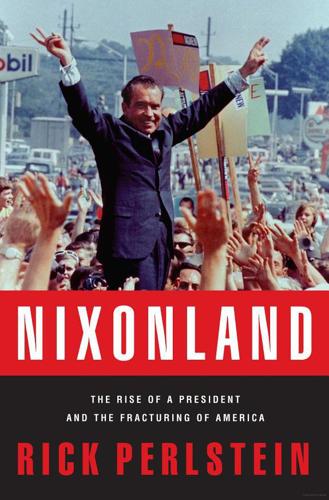
Nixonland: The Rise of a President and the Fracturing of America
by
Rick Perlstein
Published 1 Jan 2008
The NYPD maintained a twenty-man undercover detail to help terrified parents find runaways. The New York Times’s J. Anthony Lukas won a Pulitzer Prize for his harrowing account of one such teenage girl. “I didn’t even know there was an East Village,” he quoted Irving Fitzpatrick, “the wealthy Greenwich spice importer whose daughter, Linda, was found murdered with a hippie friend in an East Village boiler room on October 8.” The condensed version in the Christmas issue of America’s most widely read magazine was billed as “probably the most nightmarish article the Reader’s Digest has ever published.” “Red and white are Linda’s favorite colors; she thinks they’re gay,” Mrs.
…
“We are thinkers, cool guys, picketers, workers, fighters, but most of all we are the future of America—and that doesn’t scare us.” Pundits spoke of the 26 million new citizens who would come of voting age by the time the 1972 presidential election rolled around, politics’ new X-factor. In “paisley ghettos” such as Haight-Ashbury and New York’s East Village and Old Town in Chicago, teenagers chartered brave new worlds. The manifesto of the first gathering of publishers of the new “underground” press proclaimed as their purpose, “To warn the ‘civilized world’ of its impending collapse,” through “communications among aware communities outside the establishment.”
…
Time observed in a long and respectful cover story in the summer of 1967 that their “drug use is primarily Eucharistic in nature” and reported on pilgrimages to “psychadelicatessens” by “shoppers who intend trying nothing stronger than a Bloody Mary” such as Jackie Kennedy, a regular knickknack purchaser in the head shops of the East Village. Though a Time letter-writer expressed another proliferating opinion: “I fail to see much real altruism or idealism in my children or their friends. I see, rather, a perverted, sentimental self-centeredness.” In fact, the more attention paid the psychadelicatessens, the more the squares worked at chartering a youth culture of their own.
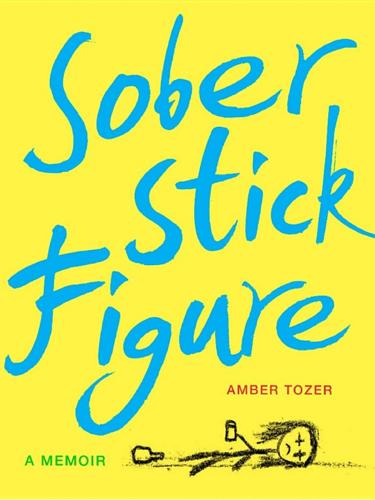
Sober Stick Figure: A Memoir
by
Amber Tozer
Published 29 May 2016
I thought since performing was the only thing that made me happy (besides being drunk), it must mean that this was what I was supposed to do with my life. I was still afraid of the cool alternative scene, but all I had to do was get real fucking sloshed before I went to a show and everything was fine. One of my goals was to get on a Monday night show called “Eating It.” It was at Luna Lounge, a rock club in the East Village that occasionally hosted comedy events. The show’s producer, Jeff, would always book one or two new comics and it was a BIG DEAL. It was a hot shit show because comics like Sarah Silverman, Janeane Garofalo, Patton Oswalt, Tig Notaro, Todd Barry, Marc Maron, and Bill Burr would perform. I wanted to get on that show so bad, and I was there every Monday night slamming drinks, chain-smoking, and talking to my comedy heroes and trying to get Jeff to like me.
…
One time I made out with a 60 year-old guy right at the bar in front of everyone. He was a good kisser. Another time while we were on one of our temporary breakups, I was house-sitting for Jen. She and her boyfriend were out of town, and I had to water her plants. It was great because they lived in the East Village, and there were so many cool bars in that neighborhood. I invited a friend of mine out for drinks. He was a musician and hung around a lot of comics I knew. I had had a crush on him for a while. I brought him back to Jen’s and was like, “I am gonna fuck this guy,” but I couldn’t go through with it because I kept wishing he was Vinnie.
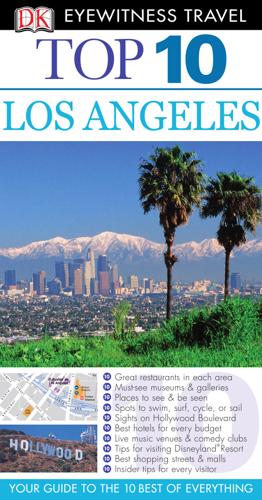
Eyewitness Top 10 Los Angeles
by
Catherine Gerber
Published 29 Mar 2010
You’ll come face to face with exotic giant spider crabs, playful sea otters, and even get to pet a shark. For a look at what it takes to keep the aquarium afloat, take a Behind-the-Scenes-Tour. d Map E6 • 100 Aquarium Way, Long Beach • 562590-3100 • Open 9am–6pm • Closed Dec 25 • Adm • www.aquariumofpacific.org of Latin & Museum American Art (MOLAA) Part of Long Beach’s emerging East Village Arts District, this lively museum is the only one in the western United States dedicated to showcasing the work of artists who’ve lived or worked in Latin America since 1945. The collection offers great insight into the culture and concerns of artists from Mexico to Tierra del Fuego and every country in between.
…
Loomis Home and Garden 82 The Charles Sumner Greene House 91 Chateau Marmont 8, 104, 106, 146 Chemosphere 41 “Chest of Drawers” 18 Chez Melange 125 Chiat/Day Building 40 chic & hip hotels 147 children’s attractions 50–51 children 50–51, 134, 143 Chinatown 70, 71, 73, 79 New Chinatown 71 Chinese American Museum 21 Chinois on Main 125 Christopher Street West Parade 104 Chung King Road 72 Church, Frederic 24 Cicada 77, 79 E Eames, Charles & Ray 123 East Village Arts District 128 Eastern Columbia Building 77 The Egyptian Theatre 11, 56, 59, 97 “El Alisal” see Charles F. Loomis Home and Garden El Capitan Theatre 11, 56, 97 El Cholo 85 El Matador Beach 44 El Mercado 84 El Pueblo de Los Angeles 7, 20–21, 38, 48, 70, 71, 73 El Pueblo Visitor Center 20 El Tepeyac 85 Elaine’s Hollywood Bed & Breakfast 151 Elan Hotel Modern 147 Electric Tram 14 emergency numbers 142 Empress Pavilion 73, 79 Ennis-Brown House 97 ESPN Zone 33 ESTA (Electronic System for Travel Authorization) 134 European Painting & Sculpture (LACMA) 17 Exposition Park 50, 80, 83 Exposition Park Rose Garden 42, 83 express & courier mail 141 153 Index F Fahey/Klein Gallery 107 Fairbanks Jr, Douglas 96 Fairbanks Sr, Douglas 10, 96, 111 The Fairmont Miramar 144 Family Hotels & Motels 149 Family Room 12 Fantasies Come True 52 Fantasmic!

Cities Are Good for You: The Genius of the Metropolis
by
Leo Hollis
Published 31 Mar 2013
This rather undermines the views held by many exasperated campaigners such as Green Alliance activist Julie Hill, who writes ‘we actually need … to have some choices taken away from us’.14 Instead, what is happening in New York shows that we need to see the advantages of making these changes and feel part of the transformation that they bring so that we choose the alternative for ourselves out of preference. I found something like this in an unexpected place. After visiting Staten Island, I returned to Manhattan and headed to the East Village, a once run-down neighbourhood that had gained a reputation for its edgy, artistic atmosphere. It was here that, in the 1940s, Robert Moses knocked down much of the slum housing and replaced it with the projects, vast social-housing tenements that became synonymous with crime and drugs in the 1980s.
…
I wandered along pathways made of broken-up bricks and found a quiet corner, to get out of the heat and to enjoy this moment of tranquillity in one of the busiest places in the world. Heaven on earth, a communal garden on Avenue C There are about 640 communal gardens in New York and at least sixty of them can be found in the dense neighbourhood of the East Village. Many of the gardens emerged from community activism, driven by local campaigners who saw the value of transforming abandoned and derelict properties into verdant oases. Often the plots were taken, like the squats, because no one else wanted them and the legal status was only worked out afterwards.
…
From a place like this we can dream of the ideal city without losing perspective or becoming utopian. Thinking of the city at this local level makes change seem possible, a place where the individual can make a difference. It is from here that one can campaign for a local community garden, as can be found in East Village; it is at this scale that we have seen the most successful attempts to revive the neighbourhoods of Detroit; it is making a difference at this local level that drove Colin Beavan to stand for the Green Party of America and start his campaign in Brooklyn. And from this base, great things can emerge, as proven by the work of Betterblock.org: the right message spreading rapidly, networks combining, neighbourhoods becoming cities, the street talking to city hall.
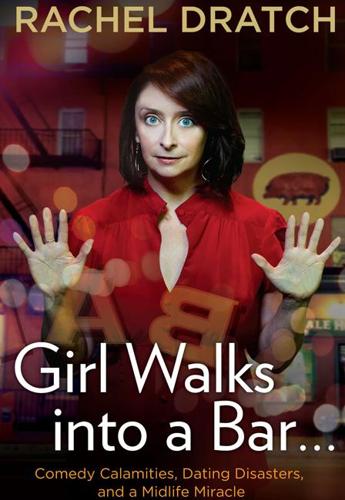
Girl Walks Into a Bar . . .: Comedy Calamities, Dating Disasters, and a Midlife Miracle
by
Rachel Dratch
Published 29 Mar 2012
And I was meeting this guy tonight. Basically, I could stand and walk OK, but sitting was hard. That’s pretty sexy, right? Anxiety started to creep in, and I began to worry that total back spaz à la SNL would happen during my date. I could just imagine myself sprawled out on the floor of some restaurant in the East Village, waiting for an ambulance. I talked to my friends on the phone. “How about acupuncture?” one of them said. Acupuncture. I’d never tried it before. Ordinarily, I’d be scared of the needles, but at this point I was thinking the needles couldn’t be any worse than the pain in my back. I made a few calls to acupuncturists who were recommended, but none were available on such short notice on a Saturday.
…
Once again I had managed to pick a bad boy with a complicated past who seemed really sweet and nice the first time we met and saved all his bad shit for after we were fully involved. Then came the day I found out just how dark this Burleigh was…. I ran into my friend Jenny and we were going to hang somewhere near my apartment in the East Village. I just needed to walk the dog. “I love dogs! I’ll come with you to walk him!” Jenny is a sweet, wide-eyed dancer who had once done a reading of a musical with me. We arrived at my apartment and right away I saw … it’s Cujo time. Burleigh was crazed. He was jumping, he was barking like crazy. The whites of his eyes were gleaming in full effect.
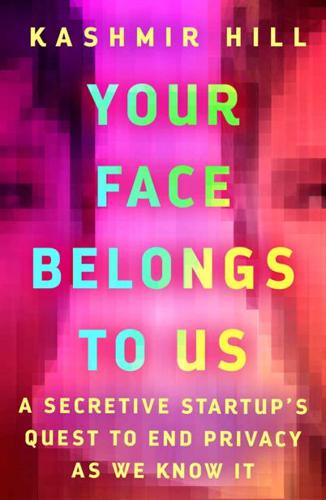
Your Face Belongs to Us: A Secretive Startup's Quest to End Privacy as We Know It
by
Kashmir Hill
Published 19 Sep 2023
They soon did, and though thirty years separated them, they hit it off. Schwartz was fatherly and encouraging, qualities that resonated with Ton-That, whose own father, a professional gambler turned university professor, was half a world away. Schwartz said that Ton-That struck him as a “lost soul.” Schwartz talked about how he had transformed the East Village’s Tompkins Square Park, where Ton-That liked to go play guitar. Schwartz had lived a block away from the ten-acre park in the 1980s when he was Ton-That’s age and working for the Department of Parks and Recreation. Back then, it had been a hangout for the homeless, drug dealers, partiers, and leather-clad punk rockers who blasted boom-box radios late into the night.
…
*3 Face recognition technology still doesn’t work as well on children as on adults. Chapter 7 THE SUPERCOMPUTER UNDER THE BED In 2017, Hoan Ton-That was living in “the tiniest room of all time” on East Eleventh Street in Manhattan, paying $1,100 a month in rent. It was the cheapest place he could find in the East Village. He considered it a steal even though he had to use a bathroom shared by everyone else who lived on his floor. The neighborhood was full of these architectural palimpsests, century-old tenement buildings that had once housed impoverished working-class immigrants, now inhabited by writers, artists, computer engineers, and other “edgy creatives,” many of whom, like Ton-That, got their work done in nearby bars, coffee shops, and cafés.
…
The policy had a section on “unpaid demonstrations/pilot projects” that warned that the city saw it as a gift and there was no guarantee that Clearview would ultimately get a contract. Where Clearview had to provide a mailing address, it listed that WeWork office in midtown Manhattan near the New York Times building; it briefly rented a space there when Ton-That had decided he needed a more regular office space than East Village cafés. A week after getting one of the high-ranking detectives set up, Ton-That sent him an email asking how the “tire-kicking process” was going. The detective, who worked at the NYPD’s Real Time Crime Center, where large police departments house their most cutting-edge technology, said it was going very well.

Yes Please
by
Amy Poehler
The problems began once they started knocking on our door claiming our sink was leaking. Then they would spend the whole day taking the sink apart. Then they would ask for twenty bucks to go find a special sink part and disappear for a week. Then one of them died. So all in all, meth seemed too risky. Heroin was another drug that didn’t catch my tail. I lived in New York’s East Village in 1998, when heroin was making its forty-fifth comeback. The streets were filled with suburban junkies shooting up next to their pit bull puppies. My building was across from Tompkins Square Park, which had been suffering and/or improving due to gentrification, and the apartments were filled with a lot of musicians and models living alone in New York City for the first time.
…
Hannah lived above me, and I would picture them fucking and eventually breaking through the floor and crashing through my ceiling, killing us all with one giant official NBA penis. The fear of this encouraged me to move to a new apartment. That and the one freezing morning I had to step over a passed-out model who had nodded off while filling out a W-2 form, only to open the outside door to find a giant pile of human shit. I said good-bye to the East Village and moved over to the West Village, where we don’t have those kinds of problems. In the West Village we just have tweaked-out gay hustlers who hit us over the heads with rocks, thank you very much. I also didn’t try heroin because I was told that everyone threw up the first time they did it, and I was never at a party where I felt like throwing up.

Smart Cities: Big Data, Civic Hackers, and the Quest for a New Utopia
by
Anthony M. Townsend
Published 29 Sep 2013
As he told a CNN reporter a few weeks later, what motivated his home renovation was common generosity, “I’ve got more bandwidth than I’m using and I’m willing to share it for free.”26 From that humble start, over the next year we perfected a guerrilla model for setting up free Wi-Fi: donated equipment, volunteer labor, and a host who would cover bandwidth costs and provide a space for our equipment. We hung wireless routers outside our own apartment windows and on the fronts of local businesses like alt.coffee, a café fronting Tompkins Square Park in the East Village. Almost immediately, we found ourselves in a digital land rush. As it turns out, we weren’t the only ones looking to bring Wi-Fi to the street. But we were the only ones hoping to do so for free. All of the big wireless companies like Verizon and T-Mobile, as well as start-ups such as Boingo, wanted to muscle in and turned our public spaces into a commercial battleground.
…
As a remedy, over the next decade Alexander and his colleagues studied traditional cities around the world, distilling their timeless design elements—“the unchanging receptacle in which the changing parts of the system . . . can work together,” as he had described the corner in Berkeley.2 The results, published in 1977 as A Pattern Language, were a crib sheet for lattice-friendly city building. Standing outside the St. Mark’s Ale House once again in 2011, almost ten years to the day after I first encountered Dodgeball inside, I browsed the East Village’s lattice with my iPhone using Dennis Crowley’s newest app, Foursquare. Alexander’s ideas about trees, lattices, and patterns have lingered on the margins of architecture and urban design since the 1970s. But they had an enormous impact on computer science, where his writings inspired the development of object-oriented programming.
…
“What is needed right now is a new type of city,” he continued, perhaps unwittingly echoing the call to arms of the People’s Computer Company some four decades earlier, “a city that is like the Internet in its openness, participation, distributed nature and rapid, organic evolution—a city that is not centrally operated, but that is created, operated and improved upon by all—a DIY City.”18 He outlined his vision of an online community where “people from all over the world think about, talk about, and ultimately build tools for making their cities work better with web technologies.”19 Geraci and I had stayed in touch, and throughout the autumn and early winter of 2008, we would meet for long walks around the East Village, looping out from my apartment at Ninth Street and Third Avenue, on a gallery walk of grassroots smart-city projects. Past the free hot spot a crew of NYCwireless volunteers had installed in early October 2001 to provide relief Internet access after the September 11 terrorist attacks. Past the block where Geraci and fellow ITP student Mohit SantRam had launched the first Neighbornode cluster from SantRam’s apartment.
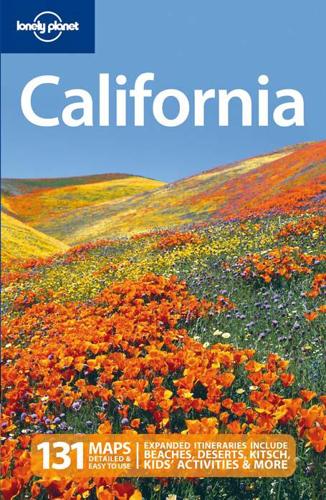
California
by
Sara Benson
Published 15 Oct 2010
Fans of the crazy and curious should make a beeline for Nitt-Witt Ridge ( 805-927-2690; 881 Hillcrest Dr; tours adult/child $10/5), a three-story house built entirely out of recycled materials – from abalone shells to beer cans, ceramic tiles to toilet seats. This ‘palace of junk’ is the creation of Arthur Harold Beal (aka Captain Nit Wit, aka Der Tinkerpaw) and was hand-built over a period of 51 years. Call ahead to arrange tours. * * * Cambria has three distinct parts: the tourist-choked East Village, a half-mile from Hwy 1, where antiques shops, art galleries and coffeehouses line Main St; the newer West Village, further west along Main St, where you’ll find the chamber of commerce ( 805-927-3624; www.cambriachamber.org; 767 Main St; 9am-5pm Mon-Fri, noon-4pm Sat & Sun); and motel-lined Moonstone Beach, off Hwy 1.
…
Bridge Street Inn ( 805-927-7653; www.bridgestreetinncambria.com; 4314 Bridge St; dm $22-25, r $50-70; wi-fi) Inside a 19th-century parsonage, this B&B-esque hostel has character, charm and a communal kitchen, but the shabby-chic rooms have thin walls. It’s small, so reserve by calling ahead between 5pm and 9pm daily. Bluebird Inn ( 805-927-4634, 800-552-5434; www.bluebirdmotel.com; 1880 Main St; d $70-220) With peaceful gardens, this friendly East Village motel has basic rooms, some with fireplaces and private balconies overlooking a creek. It’s a reliable budget-conscious choice. Wi-fi in lobby. Blue Dolphin Inn ( 805-927-3300, 800-222-9157; www.cambriainns.com; 6470 Moonstone Beach Dr; d incl breakfast $109-239; wi-fi) This gray, two-story, slat-sided building may not look as upscale as other oceanfront motels, but inside the cozy rooms have fireplaces, pillowtop mattresses and rich-feeling linens.
…
Cambria Shores Inn ( 805-927-8644, 800-433-9179; www.cambriashores.com; 6276 Moonstone Beach Dr; r $149-269; wi-fi) Small motel offering pampering amenities for pets (surcharge $15), including a welcome doggie basket. Eating & Drinking You can easily walk between several restaurants in the East Village. Rustic farm stands line Santa Rosa Creek Rd, a 15-minute drive east of Cambria via Main St. Lily’s Coffeehouse ( 805-927-7259; 2028 Main St; items $1-8; 8:30am-5pm Wed-Mon; wi-fi) A community gathering spot, Francophilic Lily’s has a peaceful front garden patio and brews robust coffees and teas.
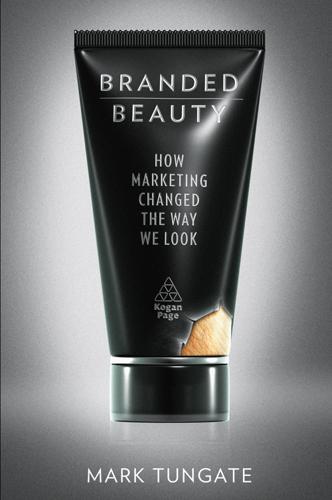
Branded Beauty
by
Mark Tungate
Published 11 Feb 2012
Its brand positioning focuses on ‘the art of beauty’. Another savvy acquisition was the cult New York skin and hair care brand Kiehl’s. Founded in 1851 by a homeopathic pharmacist named John Kiehl, the company was still run from its original store – which looked as if it had barely changed – in the East Village. This was the only retail outlet it owned; the rest of the distribution was through selected department stores. The brand’s no-nonsense image and utilitarian packaging made it popular with male consumers – an elusive target group for beauty companies. Marketing was resolutely word-of-mouth, relying on generous samples and customer endorsements.
…
Her work sits perfectly alongside the exotic tattoo designs papering the studio, which seem to take their cues from the world’s more colourful cultures. She adores India and travels there often. ‘People sometimes assume my jewellery is directly related to body piercing, which is not the case. The body piercing trend was at its height in the mid-90s. We had a piercing shop in the East Village and they were doing a hundred piercings a day. But now it’s calmed down.’ Tattoos, though, are more popular than ever. At the time of my visit there’s a trend for getting text written on the skin. ‘Some people ask for entire poems. It’s a tricky one because skin is of course an entirely different medium to paper.

In the Devil's Garden: A Sinful History of Forbidden Food
by
Stewart Lee Allen
Published 1 Jan 2002
His manipulation of the Passover feast for political gain, however, was to prove catastrophic; in the ensuing two millenniums, ignorant Christians mourning Christ’s death during Easter routinely massacred Jews because their simultaneous Passover feast—a joyous event commemorating their release from Egyptian bondage—was mistaken as celebration of Christ’s death on the cross. Humble Pie So here I am in some subterranean dive in Manhattan’s East Village. Everywhere you look, there are Japanese hipsters in hornrim glasses sucking on Sapporo beers and munching omelets covered in writhing bonito flakes that look like barf monsters from a bad sci-fi flick. I take a mouthful of my motsu yakitori . Motsu means cow intestines. I love ’em, which is just as well, since each yakitori—a kind of Japanese shish-kebab—is only three inches long, and I am determined to choke down an entire cow intestine.
…
In the Green Hour Jeff and I stared doubtfully at the liquid dripping slowly into the glass. “Does that look like it’s turning green to you?” I asked. “Well, no,” Jeffrey drawled, “but maybe if we drank some more, it would.” “Sounds like a plan.” I looked around. It was New Year’s Eve, 1999, and we had ended up at a party thrown by a painter friend in the East Village of Manhattan. A small affair, good fun, but the libations weren’t flowing with quite the fecundity one associates with the festivity in question, and we’d both become parched, particularly Jeff, who, as leader/singer of the renowned Lefty Jones Band, often suffers from inexplicable bouts of thirst.
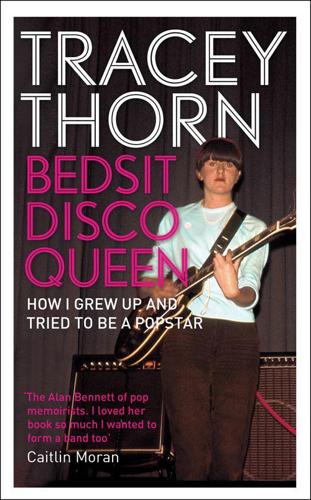
Bedsit Disco Queen: How I Grew Up and Tried to Be a Pop Star
by
Tracey Thorn
Published 7 Feb 2013
It is only eleven in the morning, and I haven’t eaten yet, but I slug back a couple of large brandies anyway, and hey presto! I feel much warmer and braver. At that moment, Jeff Buckley appears unexpectedly in our cabin. In New York in April 1995, we had done an acoustic gig at a little club/café in the East Village called Sin-é, for the sole reason that Jeff Buckley had, in 1993, released his first EP of live recordings made there. After it was released, and following tip-offs from Geoff Travis, we went to see Jeff play live in London, and at first I had mixed feelings of awe and impatience. He was so good, but he could be so self-involved onstage it was almost impenetrable, and the self-love was off-putting.
…
We lugged our own gear down there, turning up with a couple of guitars and a tiny amp, and set up and played to a packed and amazed room, with the pavement outside crowded with those who couldn’t get in, noses pressed against the windows, watching from the street. Our friend Valerie had a small hairdressing salon in the East Village, and Ben wandered down there one day to get a haircut. By magical coincidence Jeff Buckley, who was also friends with Valerie, was in there at the same time getting a trim. Valerie introduced them to each other and they started chatting, and soon discovered that we were all booked to play at that year’s Glastonbury.

Active Measures: The Secret History of Disinformation and Political Warfare
by
Thomas Rid
“This tactical step of Whalen’s is extremely awkward and is thus destined to fail.”14 Eventually, what would later be called metadata gave away the backstory of how the forgeries were made. That story began four months earlier, in a cluttered, narrow printshop in a five-story brick building in Manhattan’s East Village. Max Wagner, a Russian-born immigrant, ran the shop. He had been in the typesetting business for twenty-five years, eighteen of them in New York, where he served the small market for Russian work. Nobody in the city had a better selection of Cyrillic type. That January day in 1930, a man entered Wagner’s printshop.
…
The man also wanted Wagner to include the dateline “Moscow, ______ 19__” so that the letter writer could fill in the blanks with the day and the year, and to list the Comintern’s street address in Moscow and a local Moscow phone number, 3 20 29. The mysterious man told Wagner he could use whatever type he considered appropriate. The whole interaction took a couple of minutes. The front page of The Forward, May 3, 1930. Max Wagner, an East Village Russian-language printshop owner, saw his own work, a forgery, reproduced in The Forward that day. (The Forward) Wagner got to work. The next day the man came back and looked at the proofs with satisfaction. He did not notice, or did not care, that some of Wagner’s type had been slightly damaged, and that the small print that said “Secretariat of the American Department” on the Comintern letterhead had smeared and was barely legible.16 He gave Wagner a small deposit, took back his own improvised layout sample as well as six of the proofs—two each of three different letterheads—and left the shop, promising to return.
…
The Fish Committee, which advertised its bias in its very name, inadvertently helped to illuminate the story of the Whalen forgeries. The committee held some of its hearings in New York. One day, when questioning the Evening Graphic’s Spivak, the committee learned of the existence of the printer’s East Village shop. Before lunch, Fish dashed off a handwritten subpoena for the printer. Without any time to prepare, Wagner rushed to the hearing in time to be the first witness of the afternoon session. In garbled, Russian-Yiddish-accented English, he told Congress his story. One congressman asked the printer how he was able to spot his own work.
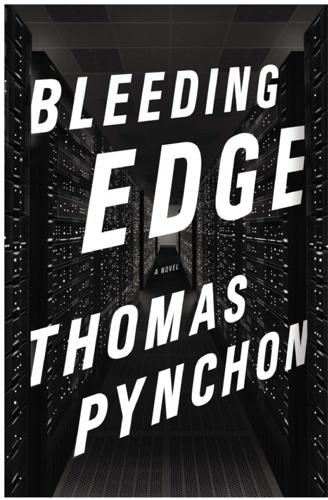
Bleeding Edge: A Novel
by
Thomas Pynchon
Published 16 Sep 2013
Having managed to score not only seed and angel money but also a series-A round from the venerable Sand Hill Road firm of Voorhees, Krueger, the boys, like American greenhorns of a century ago venturing into the history-haunted Old World, lost no time back east in paying the necessary calls, setting up shop around early ’97 in a couple of rooms sublet from a Website developer who welcomed the cash, down in the then still enchanted country between the Flatiron Building and the East Village. If content was still king, they got nonetheless a crash course in patriarchal subtext, cutthroat jostling among nerd princes, dark dynastic histories. Before long they were showing up in trade journals, on gossip sites, at Courtney Pulitzer’s downtown soirees, finding themselves at four in the morning drinking kalimotxos in bars carpentered into ghost stops on abandoned subway lines, flirting with girls whose fashion thinking included undead signifiers such as custom fangs installed out in the outer boroughs by cut-rate Lithuanian orthodontists.
…
“It ain’t a movie anymore, Maxi.” “How early tomorrow you planning to be up, Reg?” Or to put it another way, it’s the middle of the fucking night here. “Not going to sleep tonight.” Meaning Maxine’s not likely to either. So they meet for very early breakfast at a 24-hour Ukrainian joint in the East Village. Reg is over in a corner in back, picking away at his PowerBook. It’s summertime, not too humid or horrible yet, but he’s sweating. “You look like shit, Reg, what happened?” “Technically,” moving his hands away from the keyboard, “I’m supposed to have free run of hashslingrz, right? Except I always knew I didn’t.
…
“Just ’cause I once pitched you a commercial about cops? You believed that?” “He’s not a cop. We’re not newlyweds. Remember? Heidi, chill, for goodness sakes.” 21 After a day of wandering around in the vast shopping basin of the SoHo-Chinatown-Tribeca interface, Maxine and Heidi find themselves one evening in the East Village looking for a bar where Driscoll is supposed to be singing with a nerdcore band called Pringle Chip Equation, when sudden gusts of smell, not yet at this distance intense but strangely contoured in their purity, begin as they walk through the humid twilight to accost them. Presently from down the block, screaming in panic, dramatically clutching their noses and occasionally heads, civilians come running.

Blink: The Power of Thinking Without Thinking
by
Malcolm Gladwell
Published 1 Jan 2005
In 1996, Hush Puppies won the prize for best accessory at the Council of Fashion Designers awards dinner at Lincoln Center, and the president of the firm stood up on the stage with Calvin Klein and Donna Karan and accepted an award for an achievement that—as he would be the first to admit—his company had almost nothing to do with. Hush Puppies had suddenly exploded, and it all started with a handful of kids in the East Village and Soho. How did that happen? Those first few kids, whoever they were, weren’t deliberately trying to promote Hush Puppies. They were wearing them precisely because no one else would wear them. Then the fad spread to two fashion designers who used the shoes to peddle something else—haute couture.
…
Economists, meanwhile, say that the gradual improvement in the city’s economy over the course of the 1990s had the effect of employing those who might otherwise have become criminals. These are the conventional explanations for the rise and fall of social problems, but in the end none is any more satisfying than the statement that kids in the East Village caused the Hush Puppies revival. The changes in the drug trade, the population, and the economy are all long-term trends, happening all over the country. They don’t explain why crime plunged in New York City so much more than in other cities around the country, and they don’t explain why it all happened in such an extraordinarily short time.

The New Urban Crisis: How Our Cities Are Increasing Inequality, Deepening Segregation, and Failing the Middle Class?and What We Can Do About It
by
Richard Florida
Published 9 May 2016
When I went off to Rutgers College that fall, I found myself drawn to courses about cities and the urban issues of race, poverty, urban decay, and industrial decline. When I was a sophomore, my urban geography professor, Robert Lake, gave us an assignment to tour Lower Manhattan and chronicle what we saw. I was transfixed by the incredible urban change that was under way in SoHo, the East Village, and surrounding areas, captivated by the energy of the streets and of the artists, musicians, designers, and writers who lived and worked there. Old industrial warehouses and factories were being transformed into studios and living spaces. Punk, new wave, and rap were electrifying the area’s music venues and clubs—the first tender shoots of what would later become a full-blown urban revival.
…
Times Square would still have its lights and flickering billboards, but where seedy theaters and sex shops once stood, he would find an urban version of Disneyland teeming with tourists, some of them relaxing in the rocking chairs placed there for their enjoyment. Where the squatting artists of SoHo and the hippies and punks of the West and East Villages once roamed, he would find upscale restaurants, cafés, and bars filled with well-off investment bankers, techies, tourists, and more than the occasional celebrity. The once functioning meat-processing plants, industrial warehouses, and off-the-beaten-path gay leather bars of the Meatpacking District would be gone; instead, a linear park built atop the neighborhood’s derelict elevated rail line would be crowded with people.
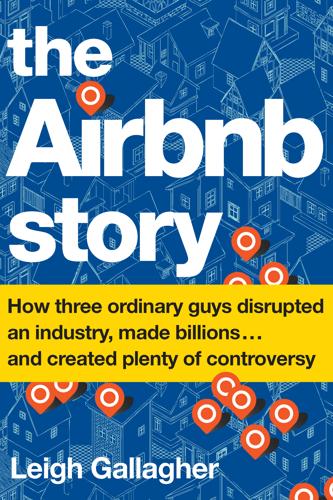
The Airbnb Story: How Three Ordinary Guys Disrupted an Industry, Made Billions...and Created Plenty of Controversy
by
Leigh Gallagher
Published 14 Feb 2017
In a well-publicized incident in New York in 2014, Ari Teman thought he rented his Chelsea apartment out to a family that was in town for a wedding, but when he stopped in to pick up his bags before heading out of town, he found what he said was a sex party for overweight people in full swing. A few weeks earlier, start-up executive Rachel Bassini rented her penthouse in New York City’s East Village and returned home to find furniture damaged and overturned and everything from used condoms to chewed gum and other detritus—including what seemed to be human feces—on the floors, walls, and furniture. In the spring of 2015, Mark and Star King, married parents of two young children in Calgary, rented their three-bedroom home in the city’s suburban Sage Hill residential neighborhood to a man who said he was in town with a few family members for a wedding.
…
“We started hearing some rumors that there was going to be a crackdown on our hosts,” recalls Belinda Johnson, the company’s chief business-affairs and legal officer who at the time had recently joined Airbnb as general counsel. In September of that year, according to the New York Times, a thirty-year-old web designer named Nigel Warren used Airbnb to rent out his room in the East Village apartment he shared with a roommate while he went to Colorado for a few days. With the roommate’s OK, Warren listed it for one hundred dollars per night and quickly had a booking from a woman from Russia. When Warren returned from his trip, he learned that the city’s Office of Special Enforcement, a multiagency task force that investigates quality-of-life complaints, had paid a visit to the building and slapped his landlord with three violations and fines totaling $40,000.
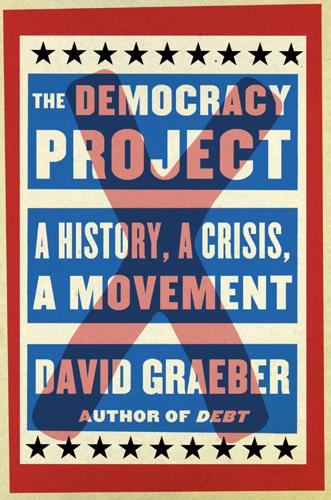
The Democracy Project: A History, a Crisis, a Movement
by
David Graeber
Published 13 Aug 2012
But she is one of the most gifted activists I’ve ever met. As I was later to discover, she had an almost uncanny ability to instantly assess a situation and figure out what’s happening, what’s important, and what needs to be done. As the little meeting along the Hudson broke up, Marisa told me about a meeting the next day at EarthMatters in the East Village for a new group she was working with called US Uncut—inspired, she explained, by the British coalition UK Uncut, which had been created to organize mass civil disobedience against the Tory government’s austerity plans in 2010. They were mostly pretty liberal, she hastened to warn me, not many anarchists, but in a way that was what was so charming about the group: the New York chapter was made up of people of all sorts of different backgrounds—“real people, not activist types”—middle-aged housewives, postal workers.
…
I spent a lot of the next few weeks tracking down old friends from the Direct Action Network who had gone into hiding, retired, burnt out, given up, got jobs, or gone off to live on some organic farm, convincing them this wasn’t another false start, it was real this time, and getting them to join us and share their experience. It took a while, but gradually many did filter back. At that first GA at the Irish Hunger Memorial, we decided all subsequent GAs would be held in Tompkins Square Park in the East Village—that is, not in the relatively desolate environs of Wall Street itself, but in the heart of a real New York community, the kind of place we hoped to see local assemblies eventually emerge. Marisa and I agreed to facilitate the first of them, on August 13, since Marisa had a good deal of experience with consensus process.
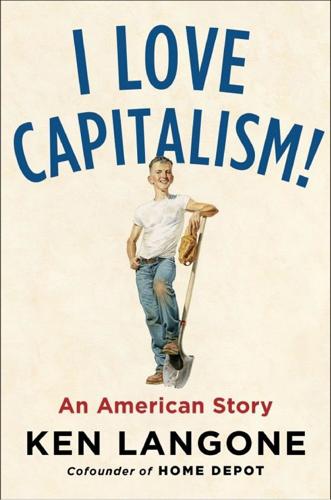
I Love Capitalism!: An American Story
by
Ken Langone
Published 14 May 2018
You go out with me tomorrow night, and if you don’t have a great time, you’ll never see me or hear from me again.” “I’ve got to ask my mother,” she said. She was sixteen. I was eighteen. She got back on the phone and said, “I can go out, but I have to be home by eleven thirty.” I said, “Eleven thirty? Conrad Janis doesn’t play ‘The Saints’ until midnight.” There was a place down in the East Village then called the Central Plaza, and there was a guy who played the trombone who later became a movie actor; his name was Conrad Janis. It was Dixieland jazz, which was the rage then, and the Central Plaza was a beer hall. You’d get pitchers of beer for a buck and a quarter, and you’d see girls flopping over in their seats, passed out.
…
She lived in a nice house, in a nice part of Manhasset: her father, Dick Abbe, worked on Wall Street. They belonged to a country club, the whole deal. I’ll never forget the sight of Elaine when she came to the door; she had a dress on with a crinoline, this thing girls used to wear that made their dresses stick out. She looked beautiful. And we drove down to the East Village and listened to the music and drank beer and had a ball. We laughed like hell. We got there about nine, and we left at ten thirty so Elaine could get home on time. My friend was fine with it. We drove back to Long Island, and I dropped my friend and his date off, then I took Elaine home. I walked her up to her front door and said, “I had a great time.”
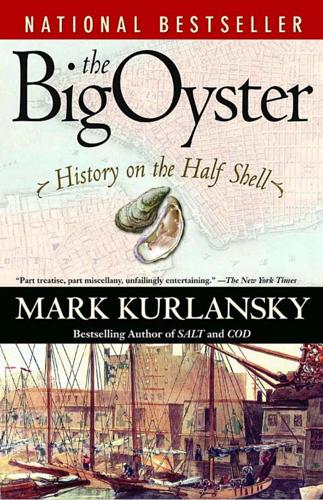
The Big Oyster
by
Mark Kurlansky
Published 20 Dec 2006
When the British threatened to attack, not surprisingly from the harbor and not over the wall, few residents were interested in fighting for the Dutch West India Company and most had no objections to British rule as long as they were promised fair treatment. Ninety-three leading citizens, including his son, petitioned Stuyvesant to surrender and avoid suffering. Stuyvesant said that he would rather die, but he nevertheless negotiated terms at his farm on what is today Stuyvesant Street in the East Village. Richard Nicolls became the first governor of New York. T h e B r i t i s h i n h e r i te d a small Dutch town of windmills and canals, though not many of either. They had snidely referred to the Dutch as “Jankees,” a sarcastic joining of the name John and the word cheese. Soon their own colonists would adopt the name.
…
—charles dickens, The Pickwick Papers, “ F 1836 i f t y y e a r s a g o N e w Y o r k w a s l i t t l e m o r e t h a n a village,” wrote Captain Frederick Marryat, the popular British author of maritime adventures, in 1838. “Now it is a fine city with three hundred thousand inhabitants.” By the 1830s, Manhattan was a fast-growing metropolis. In 1835, 250,000 people lived there, mostly between the Battery and Bond Street, which is in today’s East Village. “Trees are few,” observed Edgar Allan Poe in 1844, “but some of the shrubbery is extremely picturesque.” 1 4 4 • T h e B i g O y s te r Pigs still wandered the streets eating garbage that would otherwise have remained on the pavement. “Ugly brutes they are,” wrote Charles Dickens after a visit to New York.
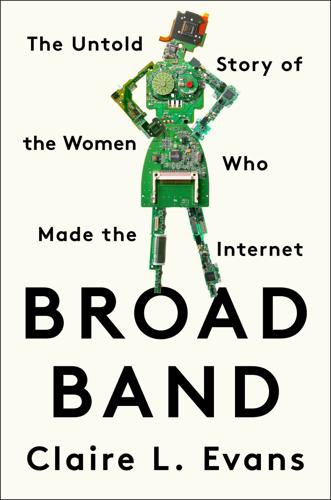
Broad Band: The Untold Story of the Women Who Made the Internet
by
Claire L. Evans
Published 6 Mar 2018
But all your real effort goes into your pet project, the thing you think will pull you out of the tech bubble: a sixteen-episode Flash cartoon series. Because you used to throw a great party by the same name, you call it CyberSlacker. CyberSlacker is a semiautobiographical cartoon about an East Village hacker chick. In three-minute episodes, it tells the continuing adventures of a peroxide-blonde misanthrope named Jaime—“but I go by CyberSlacker online”—as she navigates the surreal New York tech scene. In one episode, CyberSlacker tries to get a programming job. First, she calls IBM, where Jaime worked for a year in 1993, but the milquetoast nerd on the other end of the line gives her the creeps.
…
The big talk, the parties, and the flash that had defined the excitement of the boom suddenly looked like so much excess—and the early true believers, with their fast money and promises of a boundless information future, like charlatans. And then, like a kick in the guts: 9/11. People think 9/11 was one day. “That’s bullshit,” Jaime says. “It was one entire year, every single day, walking outside your apartment in the East Village and there’s like, a family posting signs: ‘Have you seen my mom?’” There were “obituaries every day, people walking around in gas masks.” The reality-altering scale of the attack didn’t just make Jaime’s problems seem irrelevant—it made them seem petty, even cruel. “Smallest violin for the fucking cyberkids who all of a sudden aren’t getting paid money to fucking have sushi parties,” she says.

This Is Your Country on Drugs: The Secret History of Getting High in America
by
Ryan Grim
Published 7 Jul 2009
The trade was dominated by the gang so much so that the drug was known as “biker speed” or “biker meth.” As the Angels’ product crossed from the criminal underworld to the hippie counterculture, the New York Times wrote of speed freaks hanging out at Tracy’s doughnut shop in Haight-Ashbury and strung-out “meth monsters” haunting the East Village. Some turned-on kids, much to the alarm of speed-eschewing psychonauts, were doing their parents’ drug. During the Summer of Love, “Speed Kills” buttons were distributed by a Haight-Ashbury free clinic as the counterculture tried to correct itself with a self-devised antimeth campaign. By the fall, the buttons had made an ironic cameo in a lurid Time magazine rape-and-murder story informing readers that “[d]rug-induced violence is nothing new to the neighborhoods where hippies live.”
…
For the most part, the new crop of speed freaks eschewed inhalers and pills; they injected liquid amphetamines obtained through the black market or cooked up in secret labs. A 1970 feature in the Times described the new image of meth in now-familiar terms: “The speed epidemic blossomed about three years ago in San Francisco’s Haight-Ashbury district and quickly popped up in the nation’s other hippie drug haven, New York’s East Village. Quiet flower children became ravaged scarecrows. The cannibalism of speed was easy to spot: emaciated bodies cocked in twisted postures; caved-in jaws, grinding and grinding; pockmarked skin, torn and scratched and white, and a constant talking, talking, talking.” The story states that, according to the FDA, methamphetamine was the “most popular drug of clandestine chemists.”
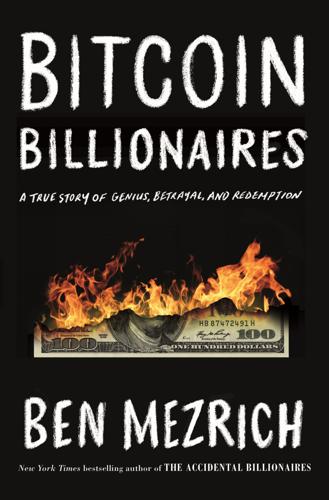
Bitcoin Billionaires: A True Story of Genius, Betrayal, and Redemption
by
Ben Mezrich
Published 20 May 2019
He reached back to the elegant table and grabbed a bottle of Dom Perignon, then leaned toward Charlie’s glass, topping it off, doing the same for the Bulgarian beauty between them. “Buckle up, guys. The night’s just getting started.” * * * Three hours later, Charlie was steadying himself against the back wall of a speakeasy in the East Village, focusing on the shot glass full of rum that had somehow found its way into his other hand. Next to him, Cameron—now he was sure it was Cameron, because that had to be Tyler over by the jukebox, talking to a phenomenal-looking blonde whom Charlie was pretty sure was either Tyler’s current girlfriend, ex-girlfriend, or soon to be girlfriend—was telling a story about the Olympic Village in Beijing, something that had to do with a South American rowing team, a Russian boxer, and a bout of food poisoning—but Charlie was having a hell of a time keeping everything clear.
…
But as Cameron watched him walk away down Lexington Avenue, Charlie’s little form was engaged in what could only be described as a strut. 18 BRIGHT LIGHTS Almost two weeks later, the travesty of the Abercrom meeting fading into a bad memory, Tyler sat in a Starbucks, watching the crowds of tourists and Manhattanites moving along Eighth Street through the window. It was unusual for him to choose such a visible table where he’d be on display, but the place was crowded for 11:00 A.M. on a Tuesday; then again, it was Astor Place, one of the liveliest spots in the city, smack in the middle of the East Village and a stone’s throw away from NYU. Tyler had chosen the table, but not the Starbucks itself. He searched the crowd outside for any sign of their quarry. “There he is,” Cameron said, pointing in the direction of a dapper man moving toward them through the traffic jam of coffee addicts. Tall, hair flecked with silver, chiseled facial structure above a criminally square jaw, wearing what appeared to be a Savile Row suit and an ascot tied around his neck: the guy looked like he’d just stepped out of an F.

Winter Gatherings: Casual Food to Enjoy with Family and Friends
by
Rick Rodgers
Published 23 Sep 2009
Add the cream to the soup and heat until piping hot, but do not boil. Season with salt and pepper to taste. In batches, puree the soup in a blender and return to the saucepan. 6. Serve hot, topping each serving with some of the chicken and bacon. “Stuffed Cabbage” Soup Makes 6 to 8 servings When I first moved to New York, I lived in the East Village, which was dotted with Eastern European coffee shops. Each place featured stuffed cabbage as a cheap daily special, and I quickly learned to both love it and make my own. When I don’t have the time for rolling and stuffing the cabbage, I make this soup that has all of the flavors, but is less labor-intensive

Everything Is Obvious: *Once You Know the Answer
by
Duncan J. Watts
Published 28 Mar 2011
For example, in discussing the mysterious resurgence of Hush Puppies in the mid-1990s, Gladwell explains that the great mystery is how those shoes went from something worn by a few fashion-forward downtown Manhattan hipsters to being sold in malls across the country. What was the connection between the East Village and Middle America? The Law of the Few says the answer is that one of these exceptional people found out about the trend, and through social connections and energy and enthusiasm and personality spread the word about Hush Puppies just as people like Gaeten Dugas and Nushawn Williams were able to spread HIV.12 Gladwell’s law of the few is catnip to marketers and businessmen and community organizers and just about anyone else in the business of shaping or manipulating people.
…
The Tipping Point, in fact, is replete with stories about interesting people who seem to have played critical roles in important events: Paul Revere and his famous midnight ride from Boston to Lexington that energized the local militias and triggered the American Revolution. Gaëtan Dugas, the sexually voracious Canadian flight attendant who became known as Patient Zero of the American HIV epidemic. Lois Weisberg, the title character of Gladwell’s earlier New Yorker article, who seems to know everyone, and has a gift for connecting people. And the group of East Village hipsters whose ironic embrace of Hush Puppies shoes preceded a dramatic revival in the brand’s fortunes. These are all great stories, and it’s hard to read them and not agree with Gladwell that when something happens that is as surprising and dramatic as the Minutemen’s unexpectedly fierce defense of Lexington on April 17, 1775, someone special—someone like Paul Revere—must have helped it along.
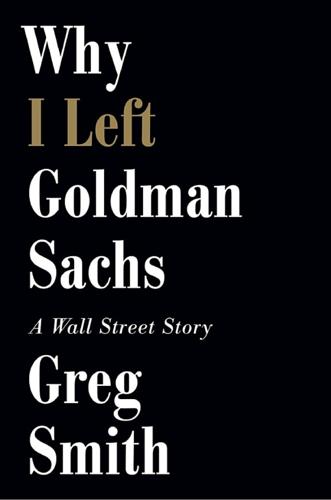
Why I Left Goldman Sachs: A Wall Street Story
by
Greg Smith
Published 21 Oct 2012
I hadn’t eaten dinner the night before, and suddenly I was starving. I ordered a corned beef sandwich. While I waited, an African American man and an elderly Jewish guy argued at the top of their voices about why this had happened to America. Even more surreal was the scene on the streets of the East Village: they were as empty as something out of a postapocalyptic sci-fi movie. New York felt like a ghost town, the wind totally knocked out of it. That same morning, I got a surprising but very welcome call from an HR person in the London office of Goldman Sachs. The guy said, “We know your apartment is a few blocks from the World Trade Center; we’ve got a full system in place to set you up.
…
We were awaiting news from the New York Fed, where the heads of the country’s most powerful financial institutions were huddled with Paulson and Geithner trying to solve the hardest brainteaser of their lives. That Saturday night, September 13, Nadine and I were out to dinner with another couple, at a favorite Italian place of mine called Supper, in the East Village. It was a schlep from the Upper West Side, but this was a weekend for good, rustic Italian food. The other couple also worked in finance: he in private equity, she at a hedge fund. The mood wasn’t one of panic; it was one of astonishment. We all couldn’t stop saying how surreal the world we were living in had become.
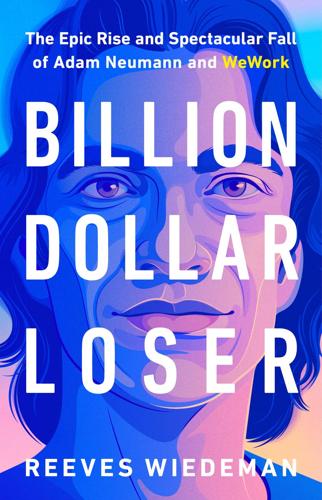
Billion Dollar Loser: The Epic Rise and Spectacular Fall of Adam Neumann and WeWork
by
Reeves Wiedeman
Published 19 Oct 2020
Adam’s grandmother covered his tuition at Baruch College, in Manhattan, where he enrolled as a twenty-two-year-old freshman. Adam arrived in New York eager to build a new life while adjusting to a different culture yet again. One New York friend didn’t know what to think when Adam walked barefoot down St. Marks Place, the bohemian strip in the East Village, to buy a marijuana pipe from a hookah shop. Adam hated the fact that no one made conversation on the elevator in the Neumann’s apartment building; an Israeli wouldn’t hesitate to simply knock on his neighbor’s door if he needed something, but Adam hardly knew any of his new neighbors. “Is this an American thing, or do people really not want to talk?”
…
Desperate for cash, Adam decided to rent part of his Brooklyn office space to another company, becoming a landlord for the very first time. * * * ON A HOT New York evening, while still puzzling over what to do with his baby clothes business, Adam arrived at Rebekah Paltrow’s apartment in the East Village, sweating from a bike ride across Manhattan. He was there to pick Rebekah up for their first date. The pair had been set up by Andrew Finkelstein, a college friend of Rebekah’s who had met Adam at a party. Adam was twenty-eight with a reputation as a playboy; Rebekah was a year older and hadn’t seriously dated anyone in six years.
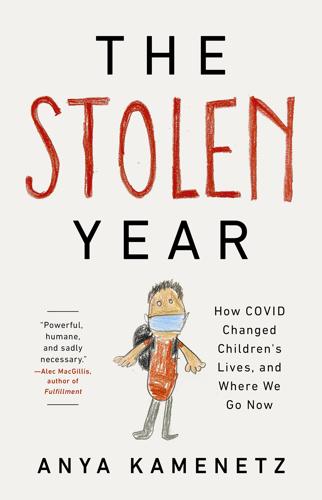
The Stolen Year
by
Anya Kamenetz
Published 23 Aug 2022
And I looked at her and I said, ‘Ma’am, this is free. You need to take this or you can get back in line.’ And then [her] little girl said, ‘Mommy, we already got to several other places.’ And I just kind of looked at her.” On the other side of the breadline might be a woman like Sheila. As a single mother out of work in the East Village, dealing with long-haul COVID symptoms, with three hungry teenagers at home, she found herself swallowing her pride and going to food pantries for the first time in her life. Once a church turned her away because she wasn’t a member. Sometimes the lines were two hours long. Her father is Cuban, but Sheila presents as white.
…
Chronic malnutrition, a lack of essential nutrients, is believed to interfere with brain development. Food insecurity, the preoccupation with having enough, is associated with high levels of parental stress, and therefore with mental health problems and behavior problems in children. Sheila lives in a rent-stabilized apartment in the East Village. In 2020 she had seventeen-year-old twins and a nineteen-year-old in special education. She worked in marketing in the travel industry and was laid off on April 2. The date sticks in her mind for two other reasons: “It was my thirtieth anniversary with the company. And the day I found out I had COVID.”
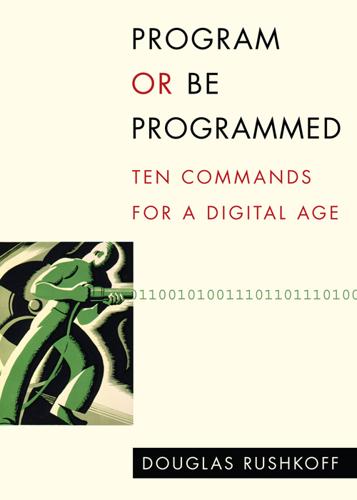
Program Or Be Programmed: Ten Commands for a Digital Age
by
Douglas Rushkoff
Published 1 Nov 2010
Instead of engaging with those around her, she’s scrolling through text messages on her phone, from friends at other parties, bars, and clubs throughout New York. She needs to know if the event she’s at is “the event to be at,” or whether something better is happening at that very moment, somewhere else. Sure enough, a blip on display catches her interest, and in what seems like seconds we’re in a cab headed for the East Village. We arrive at a seemingly identical party, but it’s the one that Gina has decided is “the place to be” tonight. Instead of turning the phone off and enjoying herself, however, she turns her phone around, activates the camera, and proceeds to take pictures of herself and her friends—instantly uploading them to her Facebook page for the world to see.
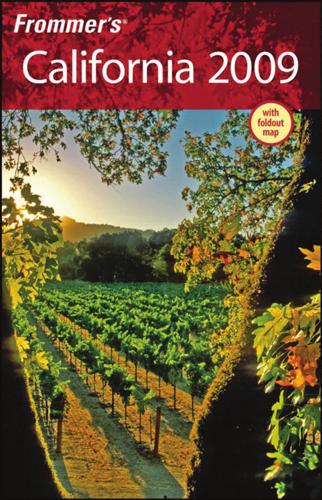
Frommer's California 2009
by
Matthew Poole
,
Harry Basch
,
Mark Hiss
and
Erika Lenkert
Published 2 Jan 2009
With little more than 4 blocks’ worth of shops, restaurants, and a handful of B&Bs, Cambria is the per fect place to escape the ev eryday, enjoy the endless expanses of pristine coastal terrain, and meander through little shops selling local ar twork and antiques. Cambria has three distinct parts. Along Main Street is “the Village,” which is divided into two sections: the West Village and the East Village. The West Village is the ne wer, somewhat more touristy end of to wn where you’ll find the visitor information center . The more historic East Village is a bit quieter, more locals oriented, and a tad more sophisticated than the West Village. If you cross Highway 1 to the coastal side at the far w est end of town (or the north end, if you’re considering how the freeway runs), you’ll reach Cambria’s third part, Moonstone Beach.
…
W H AT ’S N E W 6 time to be closed, considering this historic structure dates back to 1854, when the original Jolly Boy opened. S et within O ld Town State Historic Park, the Jolly Boy will feature costumed per formers to go along with the meat and seafood menu. Whether you bowl passionately or ironically, East Village Tavern & Bowl (& 619/ 677-2659; www.bowlevt.com) can make room for y ou—especially no w that it ’s already expanding. Featuring a logo of skull and crossbones, this hipster hav en opened in late 2007 with six lanes and is no w doubling that amount. A djacent to the Gaslamp Quarter, the Tavern & Bo wl also has food, good beer on tap, and ubiquitous flatscreen TVs.
…
The ranch soon became a pla yground for the Holly wood crowd as w ell as f or dig nitaries such as Winston Chur chill and pla ywright Geor ge Before you set out, pick up the Cambria H istorical Society’s brochure at y our hotel and take a simple, fun self-guided tour of the historical buildings in the East Village. You’ll not only get a history lesson about this picturesque village, but you’ll also discover a few places you may have overlooked otherwise, such as the blacksmith shop at 4121 Burton Dr. or the Santa Rosa Chapel and Cemetery at 2352 Main St. An overnight stay in Cambia also allows visitors to see the coastal region’s “new” attraction: a spring (y es, that ’s the corr ect term—I looked it up) of elephant seals sunning themselves on the beaches y ear-round.
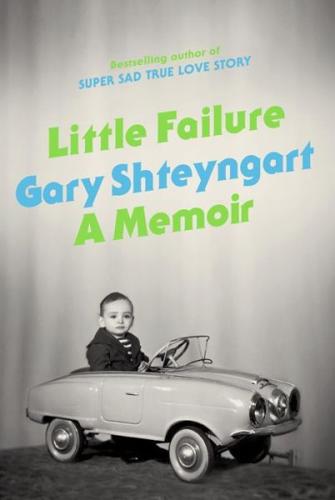
Little Failure: A Memoir
by
Gary Shteyngart
Published 7 Jan 2014
I see myself as a prosperous Republican left to his own devices in a backyard that stretches over a hill, swallows up a formerly public lake, and ends in a fierce bramble of barbed wire festooned with a PRIVATE PROPERTY sign. It’s an appropriate way to spend the 1980s. Young immigrant to city: Drop dead. And then I am accepted to the Stuyvesant High School for the maths and the sciences on Fifteenth Street, between First and Second Avenues and between the dangerous districts of East Village, Greenwich Village, Union Square, Times Square, and the Ladies’ Mile. September 1987. Manhattan Island. The car of visiting relatives makes its way down Second Avenue, with me and my knapsack in tow. The relatives, from some second-tier American or Canadian city, glance out apprehensively at the busy, dirty city.
…
But I say more and more and more about the woman with the jangles of chains atop her cleavage, a woman who has just been pummeled with a cane at her job in a Manhattan S&M dungeon while sick with anemia and a bleeding ulcer, who has been in and out of homeless shelters and mental institutions since being abandoned by her family at age sixteen. “So many people move to the East Village and then go to the opposite extreme of their suburban experience,” I say, venomously, to the camera. “That is so old. To make her character interesting, she has to be engaging and intelligent.” “She’s not a character!” John shouts. Drunk off of Irv’s Japanese plum wine (the strange tipple of choice that summer), and constantly fussing with my cheap new contact lenses, I am in high dudgeon, incensed that John would speak up for this fat suburban dominatrix.
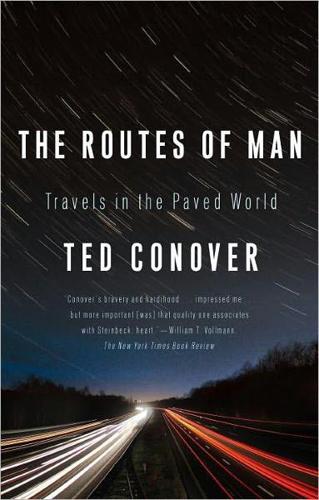
The Routes of Man: How Roads Are Changing the World and the Way We Live Today
by
Ted Conover
Published 15 Jan 2010
Washington was elected president in 1789 and moved into “the finest private building in town, the four-story McComb House” at 39 Broadway. Lower Broadway and the area west of it was the tony place to live. (To the east was the notorious slum Five Points.) As New York grew, so did Broadway. By 1800, straight, lined with poplars, and paved with cobblestones, it reached Astor Place (in the present-day East Village, a block from my office), where it ended at a fence marking the southern boundary of a farm. An 1811 commission charged with rationalizing the growing city’s streets into a grid recommended straightening Broadway so that it would conform with everything else—but it failed. By 1815, Broadway was two miles long and had veered northwest at 10th Street—so as not to destroy an influential farmer’s cherished tree, according to legend.
…
Where Barcelona offers a view of the sea from Columbus, however, New York offered a view of the ugly Coliseum exhibition center, a Robert Moses project that no longer exists. From there, things got better. Broadway runs boulevard-style through the Upper West Side, with a planted center island. The sidewalks are wide. Margot, back when she lived in the East Village, explained to me that the Upper West Side was “suburban,” a concept that it took me a while to grasp. She meant, I think, that it was newer, more oriented to families, and had among its big stores some of the franchise businesses found in malls. We had a lunch of sweet potato pie at Wilson’s soul food restaurant (now defunct), just north of 125th Street on Amsterdam.
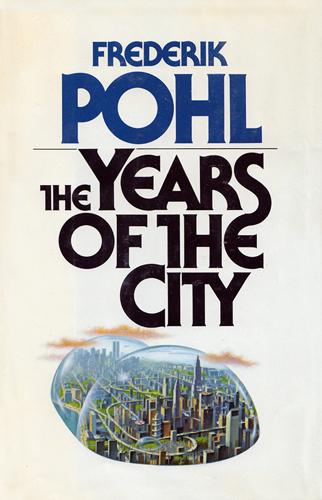
Years of the City
by
Frederik Pohl
Published 1 Jan 1984
Some of those old underground fires had probably been smoldering away for a hundred years, damped now and then by the seepage of river water, until they boiled the last of the water away and grew white-hot again. They did no great harm…until they reached open air. And open air was what the City of New York had provided them. For the thousands of expected visitors to the coming Fair the city was building new hotels. Luxury ones in Central Park West. Medium-cost ones in the East Village. And down here, a long subway ride from the Fair itself, the cheapies. The cheapest of the accommodations amounted to nothing more than a three-meter-long file drawer that a man could climb into and close off, each with its own air vent and light and luggage rack and pillow and abiotic mattress.
…
There was very little that could be done between two consenting persons that he and Doll had not already done, in that little room behind DOOR; but there was one experience they had never shared. It was silly. It was dangerous. It was wholly and completely desired. From his tiny apartment in the East Village to the New Gotham Tower East was only a short ride on a hydrovan, and all the way Jimper was staring at the dome. It was dark, though the time was high noon. When he got to the little room behind DOOR Doll was there before him, already undressed, the hookah going and the smell of hash powerful in the tiny room.

Colorado
by
Lonely Planet
As a result, while the base area lacks the character and variety of real ski towns such as Breckenridge and Aspen, Keystone has been well planned and it is easy to book reservations and get information. The nicer west village is known as River Run, and though you can access about 100 miles of spectacular bike trails from here, it is a ghost town in late summer. But it is quite picturesque, tucked up against steep pine-draped slopes accessible summer and winter. The east village, Keystone Village, is where you’ll find more winter lifts, two golf courses, a medical clinic and plenty of condos for rent. Activities The big draw is the Keystone Ski Area (www.keystoneresort.com; lift per adult 13-64yr $63-94, senior 65 & over $53-84, child 5-12yr $44-54, Ski & Ride School adult per day from $109, child from $140; 8:30am-4pm Nov 5-Apr 10, to 8pm most days Dec-Mar; ), which climbs from 9280ft to 12,408ft in elevation, and encompasses three mountains or 3148 skiable acres laced with 135 trails, about half of which are expert runs.
…
Which means this is the kind of place families would love. The resort’s ski and ride school can get adults and kids up to speed and feeling comfortable on the mountain, and Nordic fiends will enjoy the 15 miles of groomed trails snaking through the picturesque White River National Forest. There’s also a tubing hill in the East Village. You’d be wise to buy your lift tickets online where you can save up to 20%. During the summer the usual activities are on offer in the village. There’s a climbing wall, miniature golf, and even a go-cart race track (Copper Kart). The American Eagle lift (the only summer lift) leaves you at Solitude Station, where you can have a BBQ lunch and take one of the two nature or hiking trails available The Hallelujah Loop is a short nature trail, or take Andy’s Encore to the alpine overlook then continue cross-country through some loose scree fields to Copper Peak (12,441ft), before hiking back down.
…
Rides to trailheads or ski areas cost $10 to $20 per person for groups of four to six. Dee Hive also offers 4WD tours on the backroads to old mines and mountain passes. Summit Stage ( 970-668-0999; www.summitstage.com; per ride $5; from Leadville 6-8:45am, to Leadville 3:40-6:35pm; ) Summit Stage’s Lake County Link connects Frisco with Leadville, stopping at East Village in Copper Mountain along the way. At the time of research the bus was leaving from Leadville, heading to Frisco 12 times each morning, and returning 10 times each evening. Transfers to Breckenridge and Vail are available at the Frisco Transfer Station. Fairplay POP 550 / ELEV 8500FT Just 23 miles from Breckenridge on Haighway 9, flanked by the Mosquito Range to the west and the Tarryall Mountains to the east, Fairplay represents the beautiful South Park area’s only ‘urban’ center.
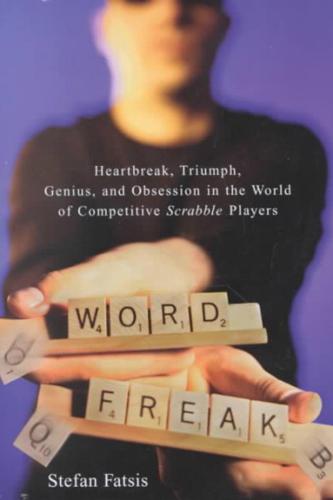
Word Freak: Heartbreak, Triumph, Genius, and Obsession in the World of Competitive ScrabblePlayers
by
Stefan Fatsis
Published 27 Jul 2001
Maybe it had to do with the coming of age of the first wave of baby boomers, college educated, disaffected, uninterested in the social crises of the day. Maybe it was because competitive Scrabble was an outsider’s game, appealing in a way that chess no longer was amid the locust swarms that followed the Fischer-Spassky match in 1972. For whatever reason, a regular Scrabble night sprang up at the Bar Point House of Backgammon in the East Village. There were games at the Olive Tree, a Greenwich Village coffeehouse. And you could play daily at the Chess House on West 72nd and Chess City at 100th and Broadway, which later moved to 75th and Broadway and was renamed the Game Room. Where the Flea House had been the games-playing equivalent of a Wild West saloon — all bluster and braggadocio — the game rooms were goofier and more egalitarian, and the game itself approached more studiously.
…
It’s going to be Handel, Mozart, Beethoven, and Bach.” Richie slaps his knee and laughs. It’s a deep, sinister, Goodfellas guffaw that insists you join in or risk bodily harm. He invites me to come watch him get tattooed. Suddenly he says, “It smells strongly of urine over here, doesn’t it?” I meet Richie on a Friday night at the East Village tattoo parlor of Anil Gupta. Since that day in the park, Richie has had the composers 226 ❑ Word Freak etched into his lower right arm: Mozart in lavender, Bach in orange, Beethoven in green, and Handel in blue. Richie removes his shoes and his right sock and sits in a dental chair. He swallows a couple of Tylenols with codeine and lifts his right pants leg, revealing the work in progress: the funeral mask of King Tutankhamen.
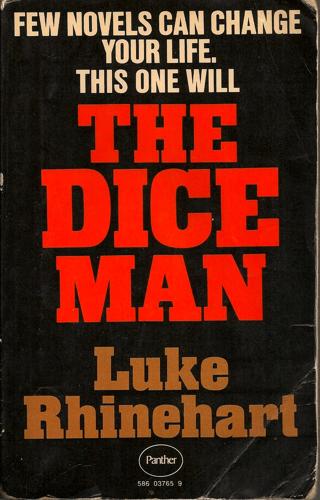
The Dice Man
by
Luke Rhinehart
Published 1 Jan 1971
She stated that separation and divorce were clearly best for both of us especially since I would undoubtedly be spending much of the rest of my life in mental institutions. Dr. Vener of QSH told me that my former patient Eric Cannon had, after two months of leading a growing herd-of hippies in Brooklyn and in the East Village, been recommitted to the hospital by his father and was asking to see me. He also noted that Arturo Toscanini Jones had also been recommitted - on a technicality unearthed by diligent police and was not asking to see me. In fact, the only good news I was getting from the rest of the world was from my patients in dice therapy.
…
But I was lonely. Superman at least had a regular job and Lois Lane. But being a real superbeing, one capable of marvels and miracles compared to the mechanical and repetitious acrobatics of Superman and Batman, was lonely, I'm sorry, fans, but that's how I felt. I had gone to a dingy hotel in the East Village that made the geriatrics ward at QSH seem like a plush retirement villa. I sweated and sulked and wandered out to play a few dice roles and dice games and sometimes I enjoyed myself thoroughly, but those nights alone in that hotel room were not among the high points of my life. The problem of boredom which the Die had so successfully solved seemed, now that I was approaching the totally free state, to be reappearing.
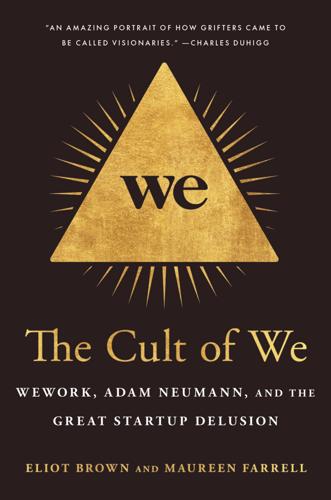
The Cult of We: WeWork, Adam Neumann, and the Great Startup Delusion
by
Eliot Brown
and
Maureen Farrell
Published 19 Jul 2021
So for their venture, they reckoned that office space would be an anchor—a way to create a whole ecosystem of other companies and services dominated by young people with the same aesthetic and social inclinations. Even hipster millennials needed space to work. Naming the company took months. They’d host brainstorming sessions with friends at Adam and Rebekah Neumann’s East Village apartment, but nothing panned out. None of their ideas evoked a big brand. One of those nights, the talent agent Andy Finkelstein—who had introduced Rebekah to Neumann and remained invested in their relationship and ventures—blurted out, “We Work.” The center of the business could be “We,” the collective pronoun, which could then be tacked onto all manner of ancillary businesses: WeLive.
…
Indeed, Neumann and his wife had been living large. He had long felt destined for wealth and fame. But now, as WeWork’s success with investors grew, Neumann’s head grew with it. Many of their friends were wealthier than the Neumanns. Around the time that WeWork was getting off the ground, they upgraded from a modest condo in the East Village to a sprawling five-thousand-square-foot loft they rented in Tribeca. Neumann persuaded the landlord to fork over some money for renovations. They had the floors painted jet black, a stark contrast to the electric-orange furniture they brought in. Its walls lined with expensive art, the apartment garnered a feature in New York, for which the designer Laser Rosenberg told the magazine that “Adam’s company, WeWork, handled the building of the kitchen.”

Frommer's California 2007
by
Harry Basch
,
Mark Hiss
,
Erika Lenkert
and
Matthew Richard Poole
Published 6 Dec 2006
With little more than 4 blocks’ worth of shops, restaurants, and a handful of B&Bs, Cambria is the perfect place to escape the everyday, enjoy the endless expanses of pristine coastal terrain, and meander through little shops selling local artwork and antiques. Cambria has three distinct parts. Along Main Street is “the Village,” which is divided into two sections: the West Village and the East Village. The West Village is the newer, somewhat more touristy end of town where you’ll find the visitor information center. The more historic East Village is a bit quieter, more locals-oriented, and 406 CHAPTER 12 . THE CENTRAL COAST Fun Fact Weekends at “the Ranch” The lavish palace that William Randolph Hearst always referred to simply as “the ranch” took root in 1919.
…
Lined with motels, inns, and a few restaurants on the inland side of the street, ocean-facing Moonstone Beach Drive is my favorite place to stay in Cambria. Before you set out, pick up the Cambria Historical Society’s brochure at your hotel and take a simple, fun self-guided tour of the historical buildings in the East Village. You’ll not only get a history lesson about this picturesque village, but you’ll also discover a few places you may have overlooked otherwise, such as the blacksmith shop at 4121 Burton Dr. or the Santa Rosa Chapel and Cemetery at 2352 Main St. An overnight stay in Cambia also allows visitors to see the coastal region’s “new” attraction: a spring (yes, that’s the correct term—I looked it up) of elephant seals sunning themselves on the beaches year-round.
…
(at 4th Ave.), Gaslamp Quarter. & 619/858-2277. www.theoceanaire.com. Reservations recommended. Main courses $15–$50. AE, DISC, MC, V. Sun–Thurs 5–10pm; Fri–Sat 5–11pm. Valet (from 6pm) Sun–Thurs $10, Fri–Sat $15. Bus: 3, 5, or 16. Trolley: Convention Center. M O D E R AT E Cafe Chloe FRENCH This East Village restaurant created an immediate buzz when it opened in 2004. Had the owners struck upon some cutting-edge trend? No, it was a simple idea, really; something you’ll find everywhere from Amsterdam to Zanzibar. It’s a bistro. Creative, whimsical touches abound, for sure—such as the children’s area, a retail space, and a patio built for two—but this is a pretty straightforward enterprise, infused with its proprietors’ refined tastes and joie de vivre.
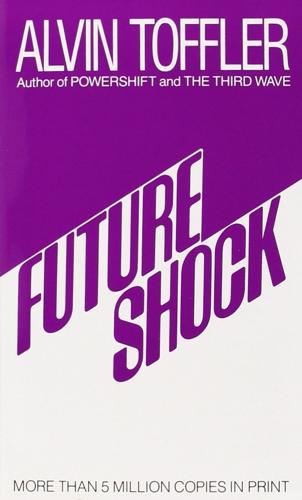
Future Shock
by
Alvin Toffler
Published 1 Jun 1984
There are at least 200 of these in the United States, many of them supported by advertising placed by leading record manufacturers. Appealing chiefly to hippies, campus radicals and the rock audience, they have become a tangible force in the formation of opinion among the young. From London's IT and the East Village Other in New York, to the Kudzu in Jackson, Mississippi, they are heavily illustrated, often color-printed, and jammed with ads for "psychedelicatessens" and dating services. Underground papers are even published in high schools. To observe the growth of these grass-roots publications and to speak of "mass culture" or "standardization" is to blind oneself to the new realities.
…
The most passionate LSD advocates of yesterday began to admit that "acid was a bad scene" and various underground newspapers began warning followers against getting too involved with "tripsters." A mock funeral was held in San Francisco to "bury" the hippie subcult, and its favored locations, Haight-Ashbury and the East Village turned into tourist meccas as the original movement writhed and disintegrated, forming new and odder, but smaller and weaker subcults and minitribes. Then, as though to start the process all over again, yet another subcult, the "skinheads," surfaced. Skinheads had their own characteristic outfits—suspenders, boots, short haircuts—and an unsettling predilection for violence.

Track Changes
by
Matthew G. Kirschenbaum
Published 1 May 2016
The avant-garde literary and arts journal Between C&D, which began publication in New York’s East Village in 1983, was printed and distributed on fanfold paper from a dot matrix printer and came packaged in a zip-lock bag. (Authors published by Between C&D include Kathy Acker, Dennis Cooper, Susan Daitch, Gary Indiana, Patrick McGrath, and Lynne Tillman.) Editors Joel Rose and Catherine Texier recalled: “The combination of our high-tech look—the computer printout, the fanfold, the dot-matrix print type—in conjunction with handmade art by East Village (or Downtown) artists on the front and back covers, and the ziplock plastic bag binding, along with, needless to say, the featured ‘new writing’ immediately attracted both readers and writers, from New York City and elsewhere.”50 Such an episode comports with the kinds of arguments scholars such as Harold Love and Peter Stallybrass have long made about the persistence of scribal and manuscript writing into cultures of printing, whereby the cross-transfer between media (in this case print and the digital) results in the proliferation, rather than the attenuation, of prior forms of production.51 But as contemporary commentators like Lanham had understood, with the advent of the Macintosh readers and writers had access to the same digital platform as publishers to create images and cast type as well as to process words—and freely integrate all of these components in their finished work.

American Girls: Social Media and the Secret Lives of Teenagers
by
Nancy Jo Sales
Published 23 Feb 2016
Kim Kardashian posts pictures of herself on shopping sprees, on yachts and private planes. “I heard about this girl who webcams to get money to buy clothes,” Sydney said, grimacing. “I hate high school so much.” New York, New York I met Sydney’s mother, Anne, one day for brunch in the East Village. She came into the restaurant, an unassuming place, wearing a cape and four-inch heels. She carried a significant handbag. She wanted some reassurance, she said, that I wasn’t going to identify Sydney in my book. I assured her I wouldn’t. “You have to understand,” said Anne. “These girls can make your daughter’s life hell.”
…
Her 2013 book, The Bling Ring: How a Gang of Fame-Obsessed Teens Ripped Off Hollywood and Shocked the World, tells the true story behind the Sofia Coppola film The Bling Ring, which was based on Sales’s 2010 Vanity Fair piece “The Suspects Wore Louboutins.” Born in West Palm Beach, Florida, Sales graduated summa cum laude from Yale in 1986. She was hired as a reporter at People in 1994 and became a contributing editor at New York in 1996. In 2000, she became a contributing editor at Vanity Fair. She has a daughter, Zazie, and lives in the East Village in New York City. What’s next on your reading list? Discover your next great read! * * * Get personalized book picks and up-to-date news about this author. Sign up now.
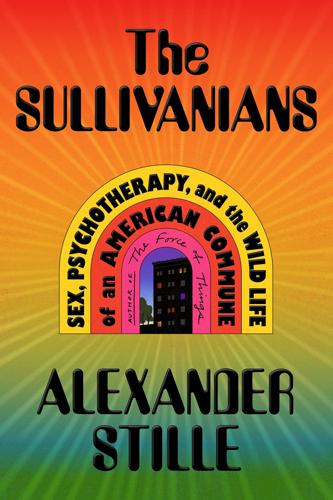
The Sullivanians: Sex, Psychotherapy, and the Wild Life of an American Commune
by
Alexander Stille
Published 19 Jun 2023
But with time, life in the group became increasingly regimented and controlled. What began as a loose community of like-minded souls morphed into a more formal group with the creation of a political theater company—the Fourth Wall Repertory Company, which put on plays and performed music in a large theater they acquired in the East Village. There were monthly dues and membership lists, and members—all Sullivanian patients—were expected to work a certain number of hours each week. Jane Pearce, the chief theorist and cofounder of the Sullivan Institute, was forced out, her place taken by two younger and more attractive women in Saul Newton’s life who became his fifth and sixth wives as well as lead supervising therapists for the institute.
…
And because of the group’s AIDS and food restrictions, they had scrupulously avoided CUNY social occasions, which made their surprise appearance at the party notable. As the event broke up and he set out for home, he noticed the two women headed for a bank of pay phones. Cohen didn’t think much of it as he got on the subway at Grand Central Station and headed back to the East Village, where he was living with Amy Siskind. When he got off the train at his usual stop at Union Square, he suddenly felt the hands of two men on either side of him grabbing him firmly by each arm and lifting him off the ground. They carried him over to the side of the subway platform and dangled him for a moment over the tracks as a train moved toward the station.
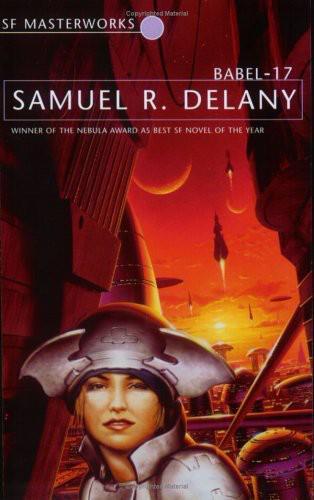
Babel-17
by
Samuel R. Delany
Published 6 Jan 2014
His other works include the Neveryon series of novels (1979-87) and the novel Stars in My Pocket Like Grains of Sand (1984). He has also written frankly about his life as an African-American homosexual, and his non-fiction books include The Motion of Light and Water: Sex and Science Fiction Writing in the East Village, 1957-65 (1988) and Times Square Red, Times Square Blue (Sexual Culture) (1999).
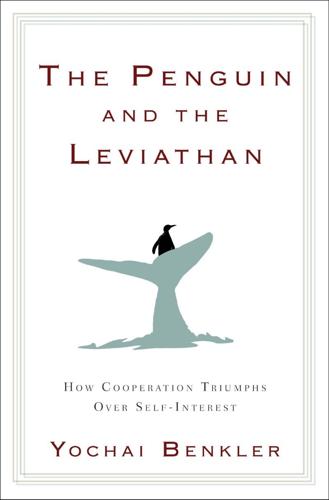
The Penguin and the Leviathan: How Cooperation Triumphs Over Self-Interest
by
Yochai Benkler
Published 8 Aug 2011
Those who demonstrated enthusiasm and the desire for more responsibility were promptly invited to become “neighborhood team leaders” and were put in charge of organizing local campaign activity. They were given no instructions or guidelines other than to think creatively about how to best energize the people in that unique community (after all, things that excite voters in Little Rock, Arkansas, might not be so effective in New York City’s East Village, and vice versa). Neighborhood leaders, in turn, recruited other volunteers for more discrete, specific tasks—such as phone banking or canvassing door-to-door. Each volunteer recruited more volunteers. At the end of the day, more than three million people had volunteered their time, whether by canvassing streets for donations, organizing local events, calling undecideds, or driving voters to the polls.
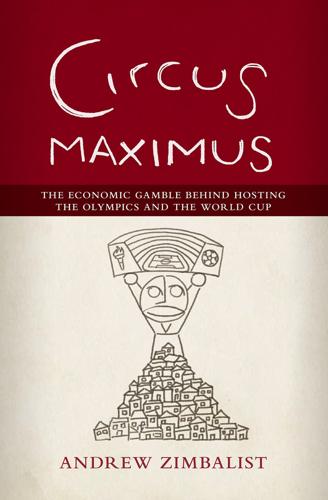
Circus Maximus: The Economic Gamble Behind Hosting the Olympics and the World Cup
by
Andrew Zimbalist
Published 13 Jan 2015
The first major mixed community development, Chobham Manor, provided about 25 percent affordable housing, 10 percent [age points] below the widely published target, and subsequent developments, to be completed by the early 2020s, are unlikely to achieve even this level. As the social or public gain dimension of the Games’ urban legacy has waned, so the commercial has flourished. 88 The Olympic, now East, Village has become part of a high rise, high density and high price area of development around the transport hub that is Stratford. The vision for the creation of affordable housing has receded. As developers have privileged scheme viability, the proportion of the value captured for investment in social housing and public spaces has diminished particularly on the south side of the former Olympic Park and within the developments on its borders.

Slouching Towards Bethlehem
by
Joan Didion
Published 1 Jan 1968
Until a couple of years ago Chet Helms never did much besides hitchhiking, but now he runs the Avalon Ballroom and flies over the Pole to check out the London scene and says things like “Just for the sake of clarity I’d like to categorize the aspects of primitive religion as I see it.” Right now he is talking about Marshall McLuhan and how the printed word is finished, out, over. “The East Village Other is one of the few papers in America whose books are in the black,” he says. “I know that from reading Barron’s!” A new group is supposed to play in the Panhandle today but they are having trouble with the amplifier and I sit in the sun listening to a couple of little girls, maybe seventeen years old.
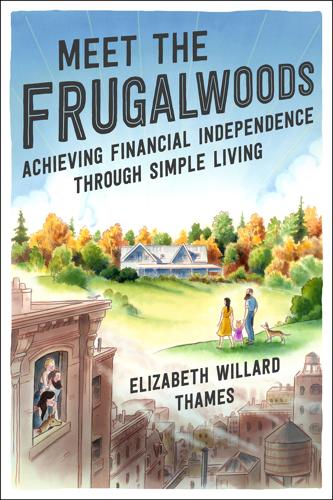
Meet the Frugalwoods: Achieving Financial Independence Through Simple Living
by
Elizabeth Willard Thames
Published 6 Mar 2018
In early January, we took the $15 Fung Wah bus up to Cambridge, Massachusetts, to find him an apartment. He settled on a subterranean basement unit with the pros of being in a desirable urban neighborhood and a five-minute walk from his new office. We celebrated with dinner at a BYOB Indian restaurant in the East Village that, for unknown reasons, is covered with Christmas lights. It’s also cheap beyond belief, two things I have to believe are correlated. Nate was gone the next week. Cambridge is a lot closer to Brooklyn than Kansas, but it’s still a 217-mile distance in one of the most expensive corridors of the United States.

The Secret War Between Downloading and Uploading: Tales of the Computer as Culture Machine
by
Peter Lunenfeld
Published 31 Mar 2011
The opera was loosely adapted in 2001 by an Australian film director using U.S. studio money. Luhrmann’s Moulin Rouge tells the same story as the opera and book, and the literally endless variations on these themes from the Lillian Gish 1926 silent melodrama through Jonathan Larson’s 1990s’ musical Rent, which switched the locale to New York’s East Village in the era of AIDS.19 What distinguishes Luhrmann’s film is the way that it deploys this myth from the nineteenth century 61 CHAPTER 3 to analyze, dissect, and recombine the popular culture of the twentieth. The film provides the antithesis of purity, proffering instead a spectacular hodgepodge, a mélange, and a remixer’s delight.

Geek Sublime: The Beauty of Code, the Code of Beauty
by
Vikram Chandra
Published 7 Nov 2013
Even a simple software requirement for a small company that, say, provides secretarial services for the medical insurance industry—“We need an application that makes it easier for our scribes to write up reports from doctors’ examinations of insurance claimants”—will always reveal a swirling hodgepodge of exceptions and special cases. Some of the doctors will have two addresses on file, some will have three, and this one was on Broadway until January 22 and in the East Village afterwards. A report will always begin with a summary of the patient’s claimed condition, unless it’s being written for Company X, which wants a narration of the doctor’s exam up front. There are four main types of boilerplate text for the doctor’s conclusions, but there needs to be a “freeform” option, and room for other templates, but creation of new templates needs to be restricted to certain users.
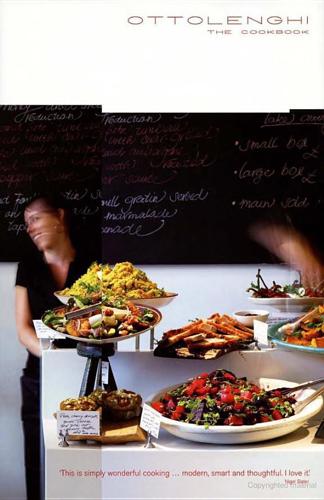
Ottolenghi: The Cookbook
by
Yotam Ottolenghi
and
Sami Tamimi
Published 1 Jan 2008
Chapter 3 Baking and patisserie Bread and savoury pastries Crusty white Italian loaf Green olive loaf Sour cherry and walnut stick Focaccia (plus three toppings) Jerusalem artichoke and Swiss chard tart Sweet and spicy beef and pork pie Butternut, carrot and goat’s cheese tartlets Brioche ‘Pizza’ with feta, tomato and olive Sweet potato galettes Roasted pepper and cannellini bruschetta Organic salmon and asparagus bruschetta Olive oil crackers Parmesan and poppy biscuits Cheddar and caraway cheese straws Large cakes Apple and olive oil cake with maple icing Orange polenta cake Chocolate fudge cake Caramel and macadamia cheesecake Carrot and walnut cake Small cakes, muffins and cupcakes Teacakes Peach and raspberry Lemon and blueberry Lavender and honey Muffins Plum, marzipan and cinnamon Blueberry crumble Carrot, apple and pecan Cupcakes Hazelnut Chocolate Pear and Amaretto crumble cake Sticky chocolate loaf Bars, biscuits and truffles Pistachio shortbreads Pistachio and ginger biscotti White chocolate and cranberry biscuits Almond and orange Florentines Champagne chocolates Sour cherry amaretti Prune and brandy truffles Raspberry and oat bar Granola bars Brownies Toffee Macadamia and white chocolate Khalid’s chocolate and chestnut bars Meringues and macaroons Macaroons General method Salty peanut and caramel Lime and basil Chocolate Meringues Pistachio and rosewater Cinnamon and hazelnut Tarts Tartlets Pre-baked cases Fresh berries Dark chocolate White chocolate and raspberry Lemon meringue Banana and hazelnut Semolina and raspberry tart Individual plum clafoutis Brioche galette Crusty white Italian loaf We developed the obsession that led to this bread when we tried a heavenly loaf at Prune, our favourite restaurant in New York, down in the East Village. It had the crunchiest dark crust, one that almost cuts the top of your mouth, a soft, waxy centre, full of giant holes, and a giant flavour. It came from the Sullivan Street Bakery. When we got back to London, we rushed to Dan Lepard, our bread mastermind, and he came up with this recipe, which is (almost, we must admit) as good as Sullivan’s.
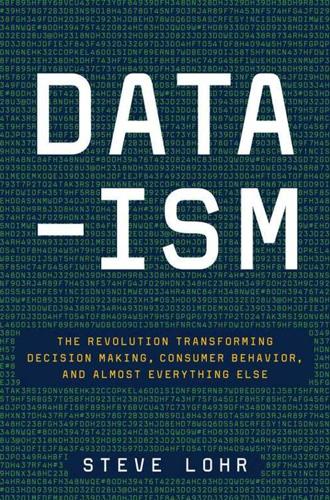
Data-Ism: The Revolution Transforming Decision Making, Consumer Behavior, and Almost Everything Else
by
Steve Lohr
Published 10 Mar 2015
“by Jeff” So the essence was evident early on—his affinity for the quantitative world and his instinct for scientific observation. Today, Hammerbacher is a thirty-two-year-old millionaire many times over. His wife, Halle Tecco, a Harvard MBA, is the founder and chief executive of Rock Health, which provides seed funding and advice for technology start-ups in health care. When they bought an apartment in Manhattan’s East Village in 2013 from the actress Chloë Sevigny, both the New York Post and Britain’s Daily Mail took notice. The Post called the pair “technology entrepreneurs” and the Daily Mail described them as a “tech power couple.” The milestones on Hammerbacher’s life path suggest a sure thing. His is a résumé that speaks of ambition and likely privilege, of someone destined for success in the modern economy of money and technology.
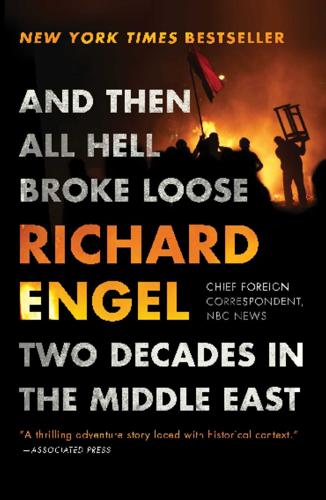
And Then All Hell Broke Loose: Two Decades in the Middle East
by
Richard Engel
Published 9 Feb 2016
I spent a lot of time browsing in the market—or at least I did before the suicide bombers came. * * * WE LIVED IN AN AREA called Nachlaot, a sort of Bohemian enclave. ITS winding lanes had speakeasies with no signs on the doors and a couple of underground music clubs in basements. It had a New York City East Village feel, a beatnik vibe, and was quite cool. Now large parts of it are ultra-Orthodox. Our friends were almost all journalists. The expat community was nothing like the one in Cairo. Most of the Americans in Jerusalem had made aliyah, a Hebrew word meaning “ascent,” which by Jewish custom means going to Israel.
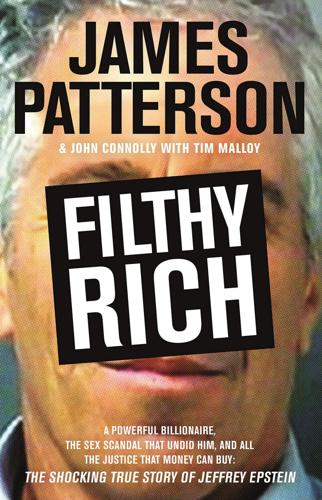
Filthy Rich: A Powerful Billionaire, the Sex Scandal That Undid Him, and All the Justice That Money Can Buy: The Shocking True Story of Jeffrey Epstein
by
James Patterson
,
John Connolly
and
Tim Malloy
Published 10 Oct 2016
CHAPTER 21 Jeffrey Epstein: 1969–1976 It’s the height of the Vietnam War. Students collide with college administrators. Hippies collide with hard hats. Kids with long hair collide with their parents. Jeffrey Epstein does not go in for any of that. At the age of sixteen, he’s taking advanced math classes at Cooper Union, an august institution in the East Village where Abraham Lincoln once spoke. Thanks to a generous endowment, the school is tuition-free, though the application process is famously rigorous. Epstein sails through it. At Harvard or Yale, his accent would give him away. Epstein tawks like the Brooklyn boy he is. But Cooper Union is more open than any Ivy League school.
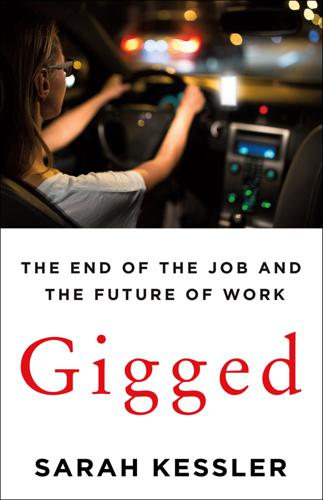
Gigged: The End of the Job and the Future of Work
by
Sarah Kessler
Published 11 Jun 2018
But actually implementing changes—which would require parties with different political agendas to compromise on specifics, experiments that proved feasibility, and passage through a slow law-making process—was more likely to take decades than years. PART V THE FUTURE OF WORK CHAPTER 12 PIVOT In the spring of 2016, Managed by Q leased a new office in a New York City skyscraper. The company had grown from 150 to 500 employees in the last year, and its previous home in the East Village, in a five-story building with a rickety elevator that featured exposed brick walls, could no longer accommodate enough desks. This new office by comparison looked like a huge corporate office. Or, at least, it would once the company moved in. Eventually Managed by Q would install glass walls to create conference rooms, purchase desks and chairs, and strategically place plants to add a pop of color throughout its new office.

Me Talk Pretty One Day
by
David Sedaris
Published 4 Jun 2001
If I bought a hot dog on the street, I’d have to make up that money by eating eggs for dinner or walking fifty blocks to the library rather than taking the subway. The newspaper was fished out of trash cans, section by section, and I was always on the lookout for a good chicken-back recipe. Across town, over in the East Village, the graffiti was calling for the rich to be eaten, imprisoned, or taxed out of existence. Though it sometimes seemed like a nice idea, I hoped the revolution would not take place during my lifetime. I didn’t want the rich to go away until I could at least briefly join their ranks. The money was tempting.
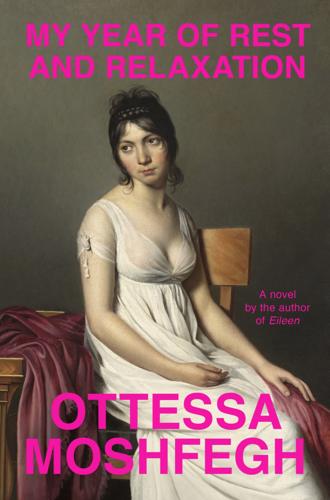
My Year of Rest and Relaxation: A Novel
by
Ottessa Moshfegh
Published 9 Jul 2018
But it’s the truth. It’s hard to look past what you look like.” Since adolescence, I’d vacillated between wanting to look like the spoiled WASP that I was and the bum that I felt I was and should have been if I’d had any courage. I’d shopped at Bergdorf’s and Barneys and high-end vintage boutiques in the East Village. The result was an amazing wardrobe, my main professional asset as a new college graduate. I easily landed the job as a gallery girl at Ducat, one of a dozen “fine art” galleries on West Twenty-first Street. I had no big plan to become a curator, no great scheme to work my way up a ladder. I was just trying to pass the time.
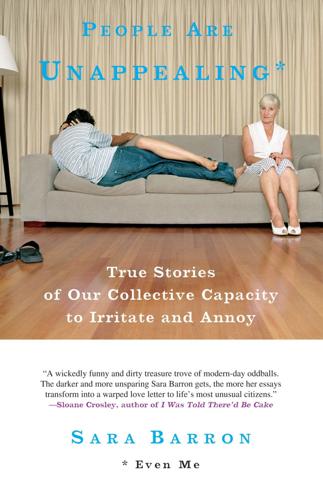
People Are Unappealing: Even Me
by
Sara Barron
Published 10 Mar 2009
I downloaded a photo of myself in a polka-dot dress and e-mailed LuckyJim_28 the following: “If nothing else, my day has gotten brighter knowing there's another person on the planet who appreciates Elizabeth Berkley's otherwise underappreciated gift for comedy.” His reply—”Well hello sara_b. Glad to meet a kindred spirit”—came later that same night. I liked the brevity of both the e-mail and the response time—neither overly eager nor too hard-to-get—and after a few more back-and-forths, we set up a date at an East Village bar. It was only once LuckyJim arrived (ten minutes late and jabbering apologies) that I realized he was a midget. Whether it was a case of clinical dwarfism or not, I didn't know. All that registered was his hairline: It had receded significantly since the time of his profile photo and stood flush with my elbows.
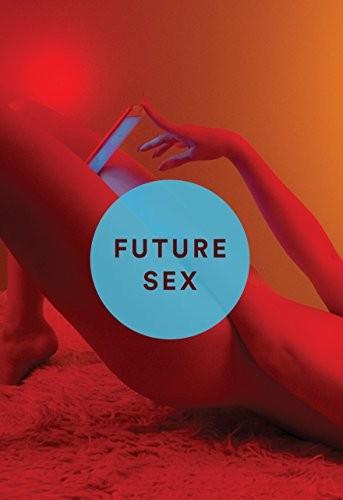
Future Sex
by
Emily Witt
Published 10 Oct 2016
As we drank beers in an Irish pub in Midtown, I could think of five or ten people with whom I would have rather spent the evening drinking beers. But the object, now, was to find a boyfriend, and none of the many people I already knew were possible boyfriends. For our second date we went out for ramen in the East Village. I ended the night early, on the way out lamenting what a long day it had been. He next invited me to a concert at Columbia and then to dinner at his house. I said yes but canceled at the last minute, claiming illness and adding that I thought our dating had run its course. I had hurt his feelings.
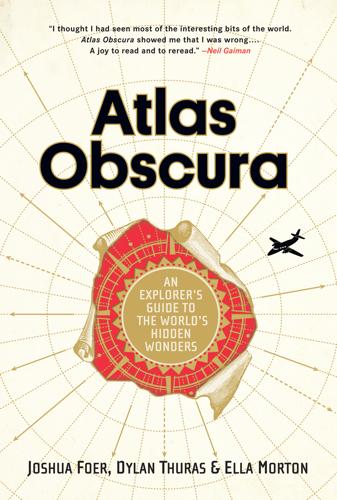
Atlas Obscura: An Explorer's Guide to the World's Hidden Wonders
by
Joshua Foer
,
Dylan Thuras
and
Ella Morton
Published 19 Sep 2016
City Guide: More to Explore in Chicago Galloping Ghost Arcade Brookfield · Hundreds of arcade games await your coin-inserting, button-mashing presence in this suburban den. The Secret Mermaid Burnham Park · In 1986, four sculptors hid a mermaid along the Chicago lakefront. Now she is a permanent fixture. Shit Fountain East Village · This oversize bronze coil of feces is both a tribute to doggie defecation and a reminder to pick it up. Lizzadro Museum of Lapidary Art Elmhurst · Cut and polished stones, some carefully sculpted into mini boats and temples, are on display at this jade-lover’s paradise. U-505 Hyde Park · After sustaining much damage during World War II, the most unlucky U-boat in the German fleet is on display at the Museum of Science and Industry.
…
Manhattan Mmuseumm Chinatown · This tiny museum in a freight elevator specializes in the overlooked, dismissed, and ignored. City Hall Station Civic Center · Stay on the 6 train after its last downtown stop and you’ll encounter an abandoned subway station. Wishbones of McSorley’s Old Ale House East Village · The wishbones hung on this bar’s light fixture are said to have belonged to World War I soldiers who never returned. Museum of American Finance Financial District · Beautiful old banknotes and a jewel-encrusted Monopoly board have been exhibited at this money-minded museum, housed in a former bank building.
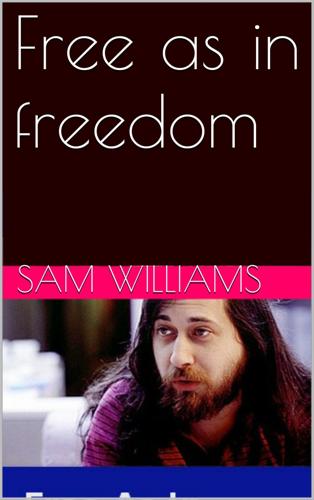
Free as in Freedom
by
Sam Williams
Published 16 Nov 2015
"Might as well enjoy it." If this story really were a play, here's where it would take a momentary, romantic interlude. Disheartened by the tense nature of our meeting, Tracy invited Henning and I to go out for drinks with her and some of her coworkers. We left the bar on Third Ave., headed down to the East Village, and caught up with Tracy and her friends. 164 Once there, I spoke with Tracy, careful to avoid shop talk. Our conversation was pleasant, relaxed. Before parting, we agreed to meet the next night. Once again, the conversation was pleasant, so pleasant that the Stallman e-book became almost a distant memory.
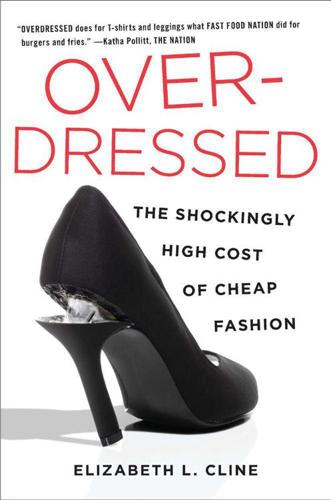
Overdressed: The Shockingly High Cost of Cheap Fashion
by
Elizabeth L. Cline
Published 13 Jun 2012
Starbuck’s line was featured at the 2010 Green Shows, a runway show dedicated to sustainable fashion that is held in Manhattan at the same time as fall Fashion Week. By spring, Starbuck had four of her pieces from the Green shows—the halter top in two colors, the pants, a coat-dress, and a cream wrap dress—in three Manhattan locations of Urban Outfitters. She and I met up at the East Village location so I could test-drive her line, which we found hidden in a rack of tank tops in loud colors and the year’s ubiquitous tiny floral prints. “These styles may not even be wearable in a season,” Starbuck admonished, referring to the chain’s trendy duds. “Because people will look at it and be able to date it very quickly and know exactly when you bought it.
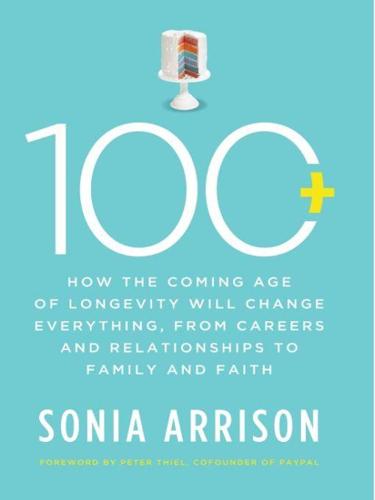
100 Plus: How the Coming Age of Longevity Will Change Everything, From Careers and Relationships to Family And
by
Sonia Arrison
Published 22 Aug 2011
Ideas that are unstoppable can also be called “social epidemics,” and they are “sensitive to the conditions and circumstances of the times and places in which they occur.”52 Gladwell explains this phenomenon in the retail world through the example of Hush Puppy shoes, which, he argues, became popular “because they were being worn by kids in the cutting-edge precincts of the East Village—an environment that helped others to look at the shoes in a new light.”53 So what is the history and who are the ‘cool kids’ driving the longevity meme? Arguably, the event that really brought longevity science to the forefront of the public’s mind was the dual announcement of the first “completion” of a draft of the human genome in 2000 by both Celera Genomics, a private company founded by Dr.
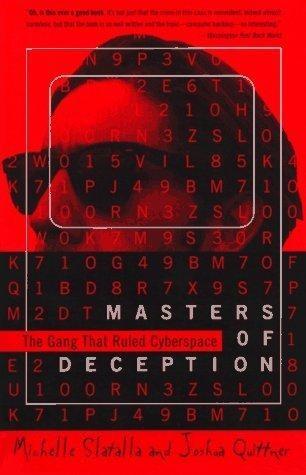
Masters of Deception: The Gang That Ruled Cyberspace
by
Michelle Slatalla
and
Joshua Quittner
Published 15 Jan 1995
The electronic heckling doesn't abate until the Manhattan "meeting" breaks up at about 8: 30 P. M. Eastern Standard Time. The kids wander off in little clumps, headed downtown to grab a cheap supper and to browse around in record stores. They have their monthly routine. First, they go to Around the Clock, a moody, dark East Village restaurant where rap music plays on the juke, a big color TV blares on the wall, and athletic waiters wear knit, olive-drab rave caps. The food is just this side of hippie: wholewheat pita concoctions, three kinds of organic pancakes, "healthy" chicken soup. Mark usually orders two bowls. It settles his stomach.
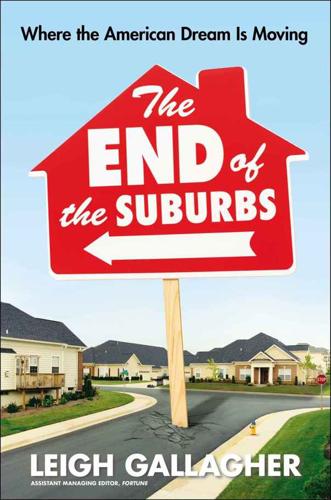
The End of the Suburbs: Where the American Dream Is Moving
by
Leigh Gallagher
Published 26 Jun 2013
A few miles south in the Gramercy neighborhood sits 160 East Twenty-second, a modern, twenty-one-story, full-service doorman building aiming for LEED certification that will offer studio, one-, two-, and three-bedroom luxury condos. There’s One Ten Third, a Mondrian-inspired boutique building that opened in the formerly gritty East Village in 2006, and there are three communities in neighboring Hoboken. The company will soon test its limits even more, with a hotel and condo community being developed on Brooklyn’s waterfront in partnership with Starwood Capital Group and with the purchase in 2013 of two new properties on First Avenue and in Soho.
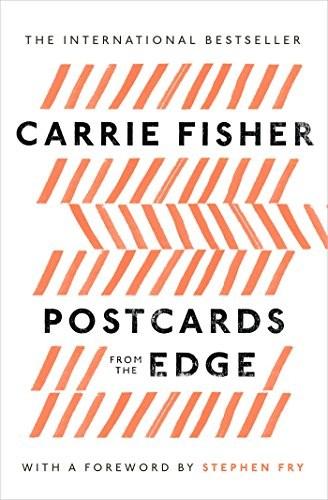
Postcards From the Edge
by
Carrie Fisher
Published 10 Nov 2011
We’re always meeting. There is no meeting for soulmates. They’re always together and never apart. We’ll have a child, and we’ll bring it up on heroin so that it’ll have a happy childhood. And I’ll buy her lots and lots of black shirts and sweaters. And she’ll play the bongo drums in a jazz club in the East Village, while I recite stream-of-consciousness poetry that everyone thinks is brilliant. I am brilliant. I’m everything. Sometimes I wonder if I really am Jesus, but I just haven’t grown into it yet. I wonder what color Jesus’s eyes were. And if he needed glasses. He had the sweetest face . . . SUZANNE AND ALEX DAY SIXTEEN They brought a new guy in today, Alex.
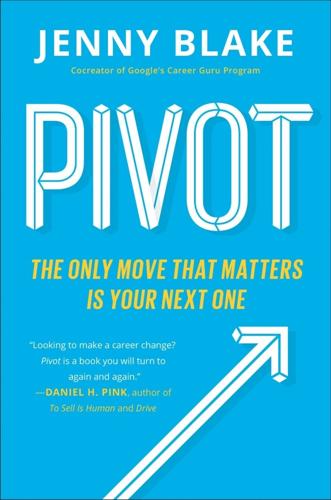
Pivot: The Only Move That Matters Is Your Next One
by
Jenny Blake
Published 14 Jul 2016
When you mine the learning, the experience stops being a failure and becomes the seeds of something new, a strength-in-waiting. Dave Ursillo had this experience after he published Lead Without Followers, a book on personal leadership that did not catch fire as he had hoped. He had recently moved to New York City, and was starting to worry as his finances dwindled. “I was living in the East Village watching my bank account dry up fast as my modest business as a self-employed entrepreneur and evangelist of personal leadership refused to pick up the momentum I needed,” he said. “My first book, published the year before, was a bust in helping me establish myself as a voice of personal leadership.
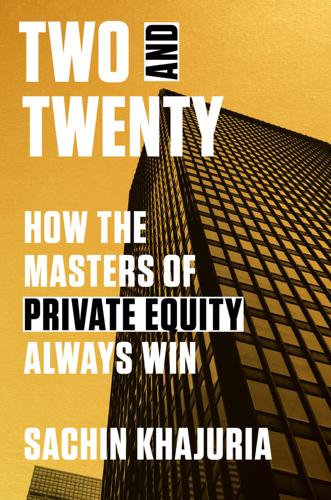
Two and Twenty: How the Masters of Private Equity Always Win
by
Sachin Khajuria
Published 13 Jun 2022
A group of six senior Wall Street bankers that had been waiting to use the same elevator parts ways when they see him arrive. The new recruits recognize the man instantly and understand why he was waved through: He is the Founder of the Firm. A visionary, an investment legend, worth three billion dollars and counting. An hour earlier, just before leaving his one-bedroom apartment in the East Village, the recruit scoured the Firm’s website one last time, looking for fresh news that might come up on his first day, even in passing. He recalls his first cursory glances at the site twelve months ago, when he applied, noticing immediately how the Firm looked like it was present everywhere across the world—investing in nearly every industry one could think of, in every major economy and a handful of smaller ones too.
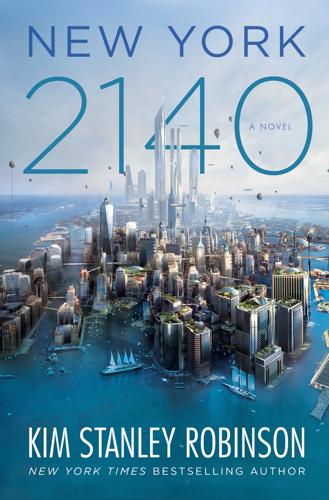
New York 2140
by
Kim Stanley Robinson
Published 14 Mar 2017
Midharbor was a clutter of ice plates headed down to the jam at the Narrows, where they were grinding their way out on the ebb tides, then floating back in on the flood tides, and freezing from time to time in whatever configuration they happened to be in. This had gone on throughout the short days of beastly February, but now March was lambing in. On the appointed day, Charlotte got in one of the cable cars running up thick steel lines from the East Village to the Brooklyn Bridge’s western tower. When that rising car had carried her over the water to the tower, she got out and walked across the old bridge with the rest of the well-bundled New Yorkers crossing the river. The river ice just below them was patterned like a jigsaw puzzle, and only broke open to black water past Governors Island.
…
So he stopped trying to think, but before he gave up, he stepped into a harness Idelba passed out to him, and buckled it tight around his waist. The harness was carabinered and knotted to a rope that was tied to an eye at the front of the wheelhouse, so he was now attached to the tug like a climber to a belay, or a steeplejack to a tower. As they came into the East Village, they saw as they had not before that the storm was simply devastating the city. The Wall Street skyscrapers looked okay, and perhaps they even provided some windbreak to the lower neighborhoods immediately north of them, but between the veering winds and the storm surge, the smaller and older buildings north and east of downtown were being overwhelmed.
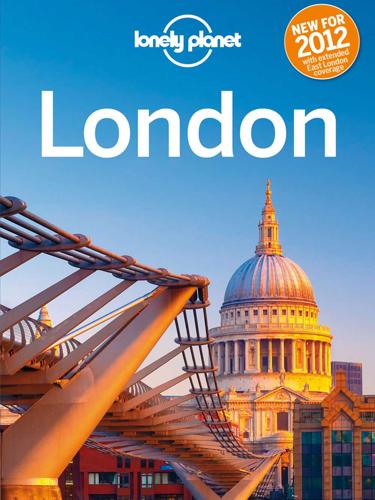
Lonely Planet London
by
Lonely Planet
Published 22 Apr 2012
F4 22 Leila's ShopG4 23 Les Trois Garçons H5 24 Look Mum No Hands D5 25 Luxe H6 Medcalf (see 28) 26 Modern Pantry B5 27 Morito A4 28 Moro A4 29 Nude Espresso H6 30 Poppies H6 31 Princess of Shoreditch F4 Rosa's (see 30) 32 Sông Quê G2 33 ST ALi C5 34 St John C6 35 St John Bread & Wine H6 36 Viet Grill G3 37 Whitecross St Market D5 Drinking & Nightlife 333 (see 60) 38 93 Feet East H5 39 Aquarium F4 40 Bar Kick G4 41 Book ClubF4 42 Bridge G3 43 Café Kick A4 44 Callooh Callay G4 45 Cargo G4 46 Catch G3 47 Dreambags- jaguarshoesG3 48 East Village F4 49 FabricC6 50 Filthy MacNasty's A3 51 Fox & Anchor C6 52 George & DragonG4 53 Golden Heart H6 54 Happiness Forgets F3 55 Horse & Groom G5 56Jerusalem TavernB5 57 Loungelover H4 58 Macbeth G3 59 Mason & Taylor H4 60 Mother Bar G4 61 Nightjar E4 62 Old Blue Last G4 63 Plastic People F4 64 Prufrock A6 65 Queen of Hoxton F5 66 Red Lion G3 67 Ten Bells H6 68 Three Kings B5 69 Vibe Bar H5 70 Vinoteca C6 71 Worship St Whistling Shop F5 72 XOYO F4 73 Ye Olde Mitre B6 Zetter Townhouse (see 99) Entertainment 74 Comedy Café G4 75 Sadler's Wells B3 Shopping 76 123 Bethnal Green RoadH4 77 Absolute Vintage H6 78 Backyard Market H5 79 Brick Lane Market H5 econe (see 43) 80 Labour & Wait H4 81 Laden Showroom H5 82 Lesley Craze GalleryB5 83 Magma A5 84 Mr Start F4 85 No-one G3 86 Present G4 87 Rough Trade East H5 88 Spitalfields MarketH6 89 Start F4 Start Menswear (see 84) 90 Sunday UpMarket H6 91 Tatty Devine H4 Sleeping 9213 Princelet StH6 93Express by Holiday InnF4 Fox & Anchor (see 51) 94Hoxton HotelF4 95MalmaisonC6 96RookeryC6 97Rosebery HallB4 98Shoreditch RoomsG5 99 Zetter HotelB5 Clerkenwell, Shoreditch & Spitalfields Eating | Drinking & Nightlife | Entertainment | Shopping Sights Clerkenwell Charterhouse Historic Building Offline map Google map (www.thecharterhouse.org; Charterhouse Sq EC1; admission £10; guided tours 2.15pm Wed Apr-Aug; Barbican or Farringdon) You need to book six months in advance to see inside this former Carthusian monastery, where the centrepiece is a Tudor hall with a restored hammerbeam roof.
…
Old Blue Last Pub Offline map Google map (www.theoldbluelast.com; 38 Great Eastern St EC2; to midnight Mon-Wed, to 12.30am Thu & Sun, to 1.30am Fri & Sat; ; Old St or Shoreditch High St) Frequently crammed with a hip teenage-and-up crowd of Hoxtonites, this beautiful old corner pub’s trendy credentials are courtesy of Vice magazine, the bad-boy rag that owns the place. It hosts some of the best Shoreditch parties and has a rocking jukebox. East Village Club Offline map Google map (www.eastvillageclub.co.uk; 89 Great Eastern St EC2; Old St) Basement club that sees house lovers flocking from all over London, especially for one-off nights featuring some of New York’s finest. Other events range from disco to dancehall and dubstep to drum and bass.

Paper Knowledge: Toward a Media History of Documents
by
Lisa Gitelman
Published 26 Mar 2014
In the place of mimeographed or microfilmed documents, chapter 3 considers the photocopy. It begins by dragging photocopies back into the past. Henry Jenkins and others have celebrated self-published fanzines as an early gesture toward today’s online sociability. Like so much Web content, tattered old zines—whether by science fiction fans, East Village poets, or coffeehouse radicals and riot grrls—are evidence of the power and persistence of “grassroots creativity.”57 Yet there is a lot still to learn about the ways that old textual duplication technology stands as an antecedent of today’s new participatory media. Chapter 3 seeks to fill in some of the missing details by offering an account not of fans or zines but rather of the xerographic medium so many of them have deployed since the 1960s.
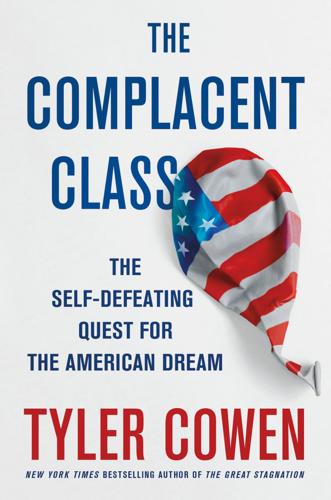
The Complacent Class: The Self-Defeating Quest for the American Dream
by
Tyler Cowen
Published 27 Feb 2017
And the reason is that those cities are so, so expensive, at least in the parts where most productive workers are willing to live.32 Compare today to the 1950s. At that time, a typical apartment in New York City rented for about $60 a month, or, adjusting for inflation, about $530 a month. Today you can’t find a broom closet in the East Village for that amount. Even in the South Bronx there is gentrification, and some new apartments are going up for a projected $3,750 a month for a small-one bedroom abode. Many parking spaces in fact cost more than the going rate for a 1950s NYC apartment.33 Or to put that 1950s rent in perspective, the U.S. median wage at that time was about $5,000 a year, so a typical New Yorker spent as little as 10 percent of salary on rent, or perhaps even less to the extent that New Yorkers were earning more than other typical Americans.
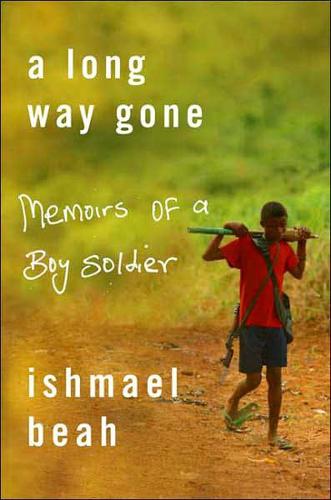
A Long Way Gone: Memoirs of a Boy Soldier
by
Ishmael Beah
Published 13 Feb 2007
Tamba sat in the audience smiling for the first time since we had arrived in New York City. After the dance, Laura pulled me aside and told me that she was moved by what I had said. That night we went out to an Indian restaurant, and I was happy that someone in this part of the world serves rice. We ate a lot, chatted, exchanged addresses, and then went to Laura’s house in the East Village. I couldn’t understand why she called the area a village, because it didn’t look like any village I knew. Our chaperons didn’t come with us; they went back to the hotel. I didn’t know that Laura’s house was going to be my future home. There were traditionally woven cloths from all over the world hanging on the walls; statues of animals sat on large bookshelves that contained storybooks; clay vases with beautiful and exotic birds on them stood on tables; and there were bamboo instruments and other strange ones.
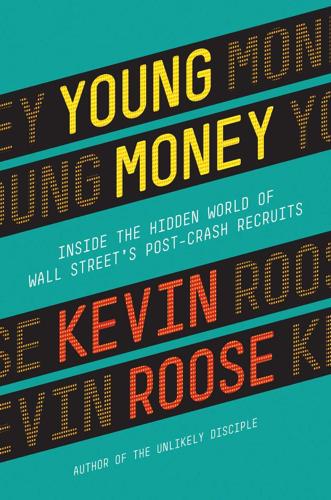
Young Money: Inside the Hidden World of Wall Street's Post-Crash Recruits
by
Kevin Roose
Published 18 Feb 2014
These rules are less hard and fast, but generally, neighborhoods like Murray Hill and Hell’s Kitchen are considered the terrain of the first-year analyst, and bars like Joshua Tree (nicknamed “J-Tree” by a generation’s worth of analysts) and the Patriot Saloon are considered first-year watering holes. A second-year analyst might live in the East Village or Chelsea, and hang out at slightly better bars like Brass Monkey and Penny Farthing. Not until he or she reached the associate level, and began making $200,000 or more a year, was a Wall Street worker expected to shack up in a chic neighborhood like the West Village or SoHo, and age out of dive bars altogether in favor of finer establishments.
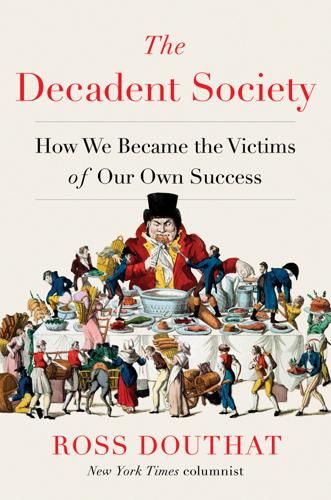
The Decadent Society: How We Became the Victims of Our Own Success
by
Ross Douthat
Published 25 Feb 2020
But in the real world, it’s possible that Western society is really leaning back in an easy chair, hooked up to a drip of something soothing, playing and replaying an ideological greatest-hits tape from its wild and crazy youth, all riled up in its own imagination and yet, in reality, comfortably numb. 6 A Kindly Despotism In the summer of 2018, a body was discovered in a car parked in the East Village in New York. The dead man, identified as Geoffrey Corbis, had been inside the automobile for a week before anybody noticed. After some investigation, it turned out that his real name was Geoffrey Weglarz and that his life story traced a particularly depressing variation on the larger baby boomer arc.
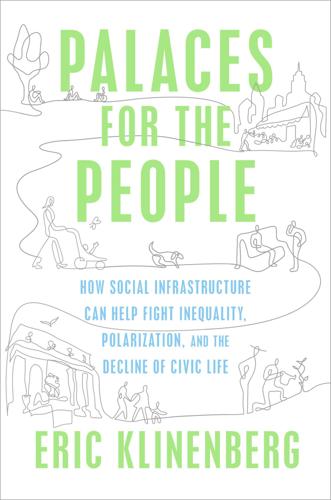
Palaces for the People: How Social Infrastructure Can Help Fight Inequality, Polarization, and the Decline of Civic Life
by
Eric Klinenberg
Published 10 Sep 2018
The compact but crowded area below Forty-Second Street includes some of New York City’s most impoverished and most affluent neighborhoods, headquarters for several of the world’s largest corporations, thousands of public housing units, and scores of community organizations that serve those in need. It hosts global financial institutions near the Battery, large hospitals near the East River, prestigious art galleries in Chelsea and the West Village, and thousands of small businesses throughout. It also has dozens of subway stops and an electrical substation in the East Village that supplies power to most of downtown. All of this flooded during Sandy, when fourteen-foot storm surges topped the river’s edges in southern Manhattan, inundating the Lower East and Lower West Sides. There was damage everywhere, but the East Side, where there are thick concentrations of poor people in aging public housing projects, and a cluster of large medical institutions, proved especially vulnerable.
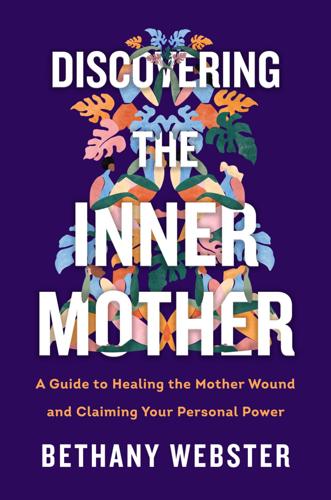
Discovering the Inner Mother: A Guide to Healing the Mother Wound and Claiming Your Personal Power
by
Bethany Webster
Published 5 Jan 2021
Because my bond with David was stronger than any relationship I had previously had, my Mother Wound started emerging in powerful ways. I started having dreams of “triangulation,” of David choosing another woman over me; some included my mother, with her separating David from me or turning him against me. One night, we were at a club in the East Village and a female friend of ours started flirting openly with David right in front of me, and he didn’t set a boundary with her or say anything to stop it. I totally lost it as we walked home and started screaming at him at the top of my lungs; I was furious that he had said nothing, as though I wasn’t even there.
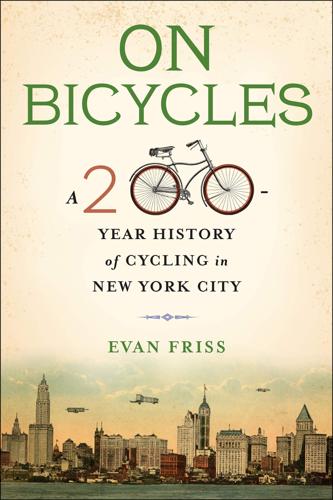
On Bicycles: A 200-Year History of Cycling in New York City
by
Evan Friss
Published 6 May 2019
Courtesy of Marcellus Hall/ The New Yorker © Conde Nast Citi Bike provided not only a new means to navigate the city but also a treasure trove of data made available to the public. Number crunchers asked and answered questions about how New Yorkers used bikeshare. Were Citi Bikes used to commute? Definitely. Stations in residential-heavy neighborhoods like Fort Greene and the East Village, for example, emptied out in the morning and refilled in the evening; stations in the Financial District, SoHo, and midtown were flooded with bicycles in the morning that cascaded out during the evening rush. How did weather affect usage? Fewer New Yorkers rode when the temperature rose above 80 degrees or below 60, when the wind speed reached 17 miles per hour, and when it was raining (though it had to be more than a drizzle).
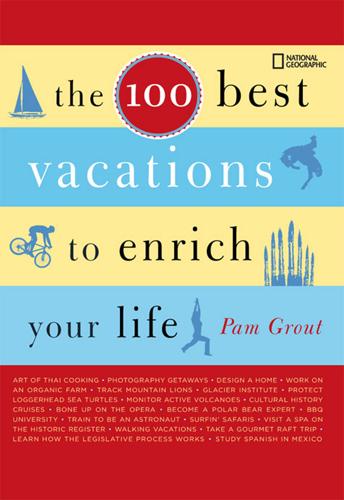
The 100 Best Vacations to Enrich Your Life
by
Pam Grout
Published 14 May 2007
The idea is to do things as well as possible, not as fast as possible.” Among the many possibilities in the United States, you can stay in a house on Lake Ruben, Georgia, or at a ski lodge in the Colorado Rockies. In Mexico, spend a week in an apartment in Mexico City’s La Condesa, an area described by the New York Times as much like the East Village. On a recent trip to England, Kenny and Cohen rented a cottage in Wiltshire. Wherever you go, you can stay true to the slow travel credo by staying within 30 minutes of home, get to know the locals at nearby bars, restaurants, and cafés, and walk to interesting sights, perhaps a local garden, museum, or market.
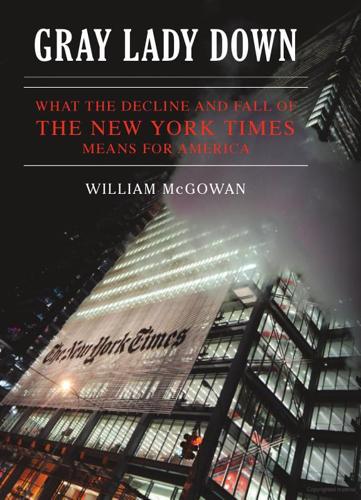
Gray Lady Down: What the Decline and Fall of the New York Times Means for America
by
William McGowan
Published 16 Nov 2010
Malkin quoted one Wichita resident in a letter to the local paper: “If this had been two white males accused of killing four black individuals, the media would be on a feeding frenzy and every satellite news organization would be in Wichita doing live reports.” Malkin concluded: “If you read The New York Times or The Washington Post or watched the evening news this week, the Wichita Massacre never happened.” In October 2004, in New York’s East Village, a black man from Brooklyn shot three people and terrorized patrons in a bar, threatening to burn the place with kerosene and a lighter. At one point he held fifteen people hostage. At trial, prosecutors charged that the man was “on a mission of hate” to kill white people, and explained that the police had found tapes of anti-white rap music interspersed with the man’s own anti-white rants.

Ground Control: Fear and Happiness in the Twenty First Century City
by
Anna Minton
Published 24 Jun 2009
Westfield London is one example, but what is increasingly common is the creation of open-air property complexes which also own and control the streets, squares and open spaces of the city. Like Docklands, which was able to assemble a huge area of land because of the powers of the UDCs, these new places are able to take over large parts of our cities using similar powers. East Village, Madison Square, Liverpool Liverpool One, the huge new private shopping complex in the centre of Liverpool which covers thirty-four streets in the heart of the city, is the biggest so far. Today, every town and city is home to these new places, large and small, built on brownfield sites and owned and run by property companies.
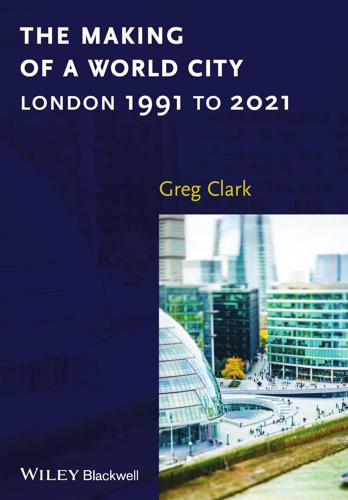
The Making of a World City: London 1991 to 2021
by
Greg Clark
Published 31 Dec 2014
Today, what were once pioneering developments on the fringes of Zone 1 are almost the norm, with King’s Cross, Paddington, and Earl’s Court now very viable propositions 94 The evolution of London, 1991 to 2015 Table 7.2: Prominent foreign investors in London’s commercial real estate market since the global financial crisis Sovereign Wealth Funds State Oil Fund (Sofaz) China Investment Corporation State Administration of Foreign Exchange Korea Investment Corporation Kuwait Investment Authority Azerbaijan China China 78 St James’s Street Canary Wharf, Winchester House Drapers Gardens, 12 Throgmarton Avenue Korea Kuwait 1 Bartholomew Square Willis Building, 5 Canada Square, 60 Threadneedle Street, 1 Bunhill Row Regent Street portfolio Norges Bank Investment Management Qatari Investment Authority (Qatari Diar, Qatar Holdings) Norway Government of Singapore Investment Corporation Singapore Pension Funds Canada Pension Plan Investment Board National Pension Service Employees Provident Fund (EPF) Swedish Cityhold (First and Second National Pension Funds) Qatar Canada Korea Malaysia Sweden Other Funds/Firms Brookfield Properties Oxford Properties Europe Gingko Tree Deka Samsung Asset Management Mitsubishi Estates Permodalan Nasional Berhad SEB Asset Management Olayan Group Blackstone Real Estate Canada Canada China Germany Japan Japan Malaysia Norway Saudi Arabia USA Carlyle EREP Hines JP Morgan Asset Management USA USA USA Wealthy Individuals (and their syndicates) Moise Yacoub Safra Brazil Undisclosed Russia Nathan Kirsh South Africa The Shard, Harrods, Canary Wharf, One Hyde Park, Grosvenor Square, East Village (Olympic Park), Shell Centre, Chelsea Barracks, One Cabot Square, Park House Bluewater Victoria Circle, 55 Bishopsgate, Westfield Stratford City 88 Wood Street, 40 Grosvenor Place Battersea Power Station, Whitefriars, One Sheldon Square, 40 Portman Square The Peak (5 Wilton Road), 1 Kingdom Street, 40 Holborn Viaduct 99 Bishopsgate, 125 Old Broad St. 71 High Holborn, 122 Leadenhall Street Ropemaker Place Palestra (SE1), 90 York Way 10 Gresham Street 1 Victoria Street, 6–8 Bishopsgate 1 Exchange Square, 90 High Holborn 1 Threadneedle Street Brompton Road estate Devonshire Square, Chiswick Park, Broadgate, 1–11 John Adam Street 60 Victoria Embankment, Sampson House Broadgate West Bishops Square Plantation Place Grand Buildings (1 Trafalgar Square) Tower 42 Source: Jones Lang LaSalle (2012); GVA (2012).
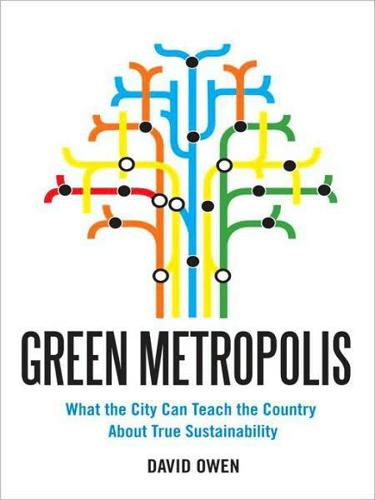
Green Metropolis: Why Living Smaller, Living Closer, and Driving Less Are Thekeys to Sustainability
by
David Owen
Published 16 Sep 2009
New York is one of the most thoroughly altered landscapes imaginable, an almost wholly artificial environment, in which the terrain’s primeval contours have long since been obliterated and most of the parts that resemble nature (the trees on side streets, the rocks in Central Park) are essentially decorations. Quite obviously, this wasn’t always the case. When Europeans first began to settle Manhattan, in the early seventeenth century, a broad salt marsh lay where the East Village does today, the area now occupied by Harlem was flanked by sylvan bluffs, and Murray Hill and Lenox Hill were hills. Streams ran everywhere, and beavers built dams near what is now Times Square. One early European visitor described Manhattan as “a land excellent and agreeable, full of noble forest trees and grape vines,” and another called it a “terrestrial Canaan, where the Land floweth with milk and honey.”9 But then, across a relatively brief span of decades, Manhattan’s European occupiers leveled the forests, flattened the hills, filled the valleys, buried the streams, and superimposed an unyielding, two-dimensional grid of avenues and streets, leaving virtually no hint of what had been before.

The Glass Hotel
by
Emily St. John Mandel
Published 14 Jun 2020
She’d seen them on the subway, the tired people, the people who’d worked too long and too hard, caught up in the machine, eyes closed on the evening trains. Simone had always thought of them as citizens of a separate city, but the gap between their city and hers was beginning to close. “How many people knew about it?” Simone asked eventually. They were passing through the East Village. “I assume everyone in the asset management unit. Everyone who worked on the seventeenth floor.” Claire didn’t open her eyes. Simone was beginning to wonder if Claire was sedated. “All of them? Oskar, Enrico, Harvey…?” “It turns out that’s literally all they were doing on that floor, running a fraudulent scheme.”
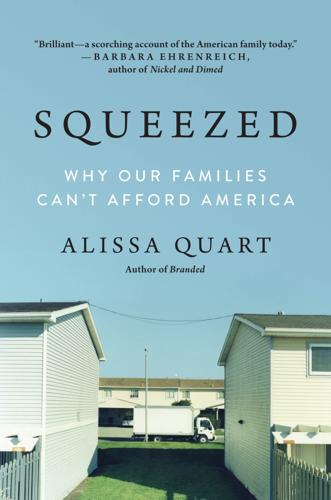
Squeezed: Why Our Families Can't Afford America
by
Alissa Quart
Published 25 Jun 2018
My immigrant grandparents had a small shoe store in the Bronx, and as a child, I played on the floor of the store with polish, a shoehorn, and a footwear stretcher. As a teenager, my paternal grandmother worked on New York City’s Lower East Side putting feathers on hats. In the early 2000s in the East Village, the primary music was a steady buzz of receipts being printed out in thousands of franchises and boutiques. But in my mind, figures of those early-twentieth-century workrooms hung around the neighborhood like ghosts. I thought of how my mother got through college by working at a department store, and then how I got to be a special flower in progressive school thanks to her determination that my life would be full of poetry recitals and those colorful math counting blocks they called Cuisenaire rods.
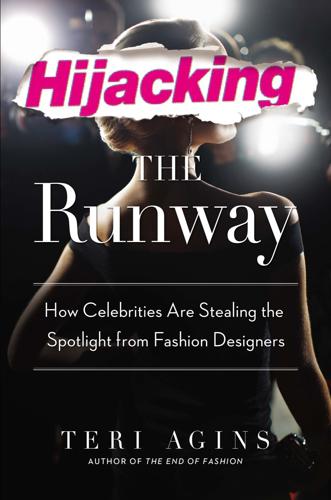
Hijacking the Runway: How Celebrities Are Stealing the Spotlight From Fashion Designers
by
Teri Agins
Published 8 Oct 2014
Ultimately, he was like the pop singer whose fans didn’t buy his music. But Mizrahi’s going-out-of-business drama turned out to be only a hiatus of sorts. Fashion designers are famous for second and third reincarnations, and Mizrahi would have his too. But first, he was on to his next curtain call. I caught him at a gig in the East Village at Joe’s Pub when he was playing the piano, swaying while he crooned the Fred Astaire vintage number “I Left My Hat in Haiti.” By 2000, he was appearing off-Broadway, starring in his one-man confessional, Les Mizrahi, a charming performance where he sketched on a big easel—and constructed a dress in muslin onstage, while prattling wistfully about his fashion career.
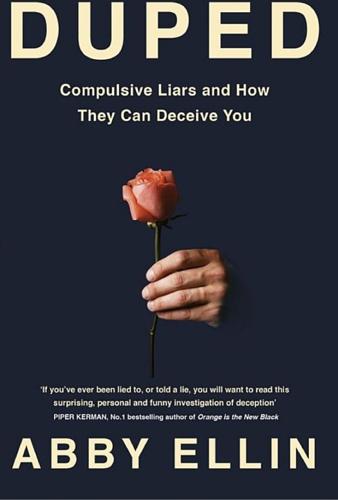
Duped: Double Lives, False Identities, and the Con Man I Almost Married
by
Abby Ellin
Published 15 Jan 2019
He knew no one at MTV, which explains why I never got a call back on the résumé I sent over. The accent was a hoax. James was mortified. As the youngest of five kids, he always despaired of being the only person in a room who didn’t have the same information as everyone else. He spent the next few months scouring East Village record shops and trying to buy back our lost music. He also tracked down Ewan, who was living on the streets. James barked at me whenever I brought up Ewan’s name. “Can’t you just drop it?” he’d say. “I feel like a total asshole.” “But you didn’t know! He lied to you!” “I don’t care.” We never discussed it again.
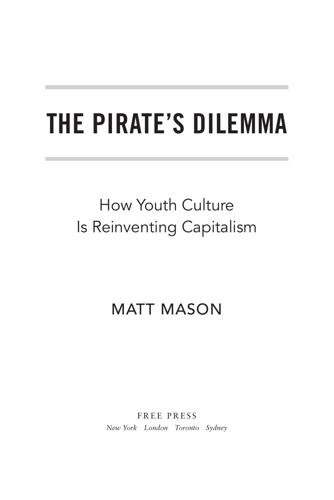
The Pirate's Dilemma: How Youth Culture Is Reinventing Capitalism
by
Matt Mason
He realized he needed options instead of rules, which is why two years later he packed his things and headed for New York City. He started out shining shoes, renting a place, and reveling in his newfound independence. Mancuso seemed to fit in here. He began hanging out in Tompkins Square Park in the East Village by the bandstand, where a group called the Grateful Dead were just getting started, as was a guy named Jimi Hendrix. The sixties were kicking in; everybody was dropping out. He begins experimenting with acid and soon met a young Timothy Leary, the legendary high priest of psychedelia, in a macrobiotic food restaurant.

Private Equity: A Memoir
by
Carrie Sun
Published 13 Feb 2024
To some, Parmita’s transition might have seemed like a step backward because it was moving away from the money, away from buy-side investing, but I saw it as a leap toward doing something closer to what she loved (speaking, socializing) and could absolutely, if she wanted to, be the best in the world at (selling, business development). On Monday, a market holiday, Parmita and I flew back on the same flight. We shared a cab to Manhattan. Her apartment in the East Village was up first. “Let’s do happy hour sometime?” I asked as she stepped out of the car. “A hundred and ten percent,” she said. * * * — IN LATE FEBRUARY, Carbon held its annual Investment Team Retreat. Sloane, who was perennially speed-walking in and out of her cube in front of Neil’s office, never sat with Boone unless it was about the retreat.
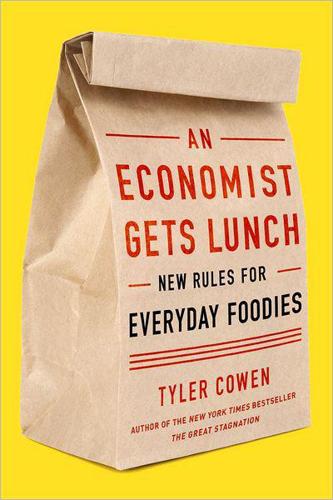
An Economist Gets Lunch: New Rules for Everyday Foodies
by
Tyler Cowen
Published 11 Apr 2012
Most of the important new, cheap ethnic restaurants serving everything from Colombian food to classic Italian are burgeoning in Queens, Brooklyn, and the Bronx. Chinatown in Flushing, Queens, is deliciously hectic. It is also possible to find good, cheap ethnic food on the far West Side of midtown Manhattan; this remains an underpriced location, as are the deeper and more distant parts of the East Village. It is difficult to find such food in the major, midtown parts of Park Avenue and overall, in New York City, the expensive areas are encroaching on the quirky. The collapse of the real estate bubble slowed down this trend but did not halt it. Manhattan avenues tend to be higher-rent than locations on the streets.
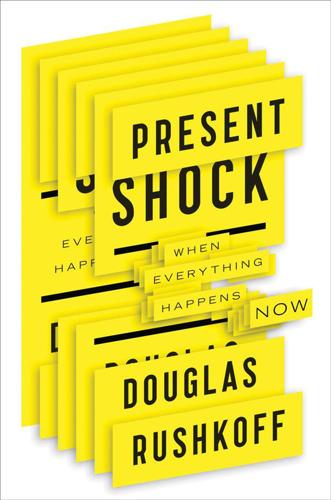
Present Shock: When Everything Happens Now
by
Douglas Rushkoff
Published 21 Mar 2013
Instead of engaging with those around her, she’s scrolling through text messages on her phone, from friends at other parties across town. She needs to know if the event she’s at is the event to be at, or whether something better is happening at that very moment, somewhere else. Sure enough, a blip on the tiny screen catches her interest, and in seconds her posse is in a cab headed for the East Village. She arrives at a seemingly identical party and decides it’s “the place to be,” yet instead of enjoying it, she turns her phone around, activates the camera, and proceeds to take pictures of herself and her friends for the next hour—instantly uploading them for the world to see her in the moment.
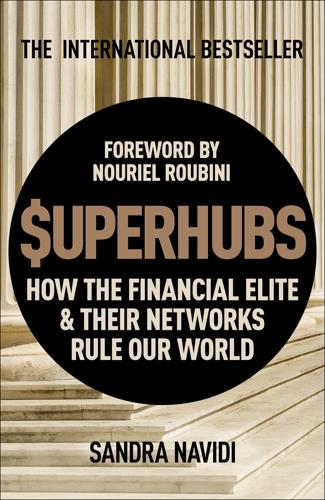
SUPERHUBS: How the Financial Elite and Their Networks Rule Our World
by
Sandra Navidi
Published 24 Jan 2017
CHAPTER 12 Super-Crash: “Executive Contagion” THE CRASH OF A TITAN: JOHN MERIWETHER Few people can take credit for generating billions of dollars in losses and single-handedly bringing01he0.inancial system to the brink of collapse. John Meriwether of Long Term Capital Management (LTCM) is one of them. At a wine tasting at Chef Daniel Boulud’s DBGB in the East Village, hosted by my friend Jim, a financier and avid wine collector, I met the now infamous Meriwether. I arrived later than most of the other guests, who had gathered in the center of the private wood-paneled room featuring an elegant table set with a myriad of different wine glasses, shiny silverware, and sharply folded napkins.
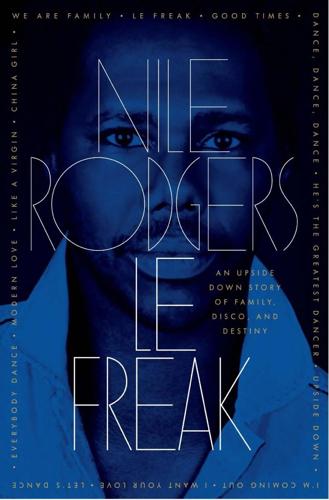
Le Freak: An Upside Down Story of Family, Disco, and Destiny
by
Nile Rodgers
Published 17 Oct 2011
She lived at home and we’d just met that night, Tuesday, June 2, at the hippie musical Hair. After the show we went to hang out at the Bethesda Fountain in Central Park, when two guys approached us and said they were on leave from the military. “Can you help us score some grass?” they asked. We took them to a few of our East Village haunts and partied until the wee hours. Then they invited us down to a pad in Little Italy. While there, they somehow slipped STP (a very powerful hallucinogen, called DOM nowadays) into one of my drinks. I started tripping my brains out and didn’t know why. I was quickly losing control. Given I was an old hand at tripping, I initially thought this was one of those fabled flashbacks I’d heard about.
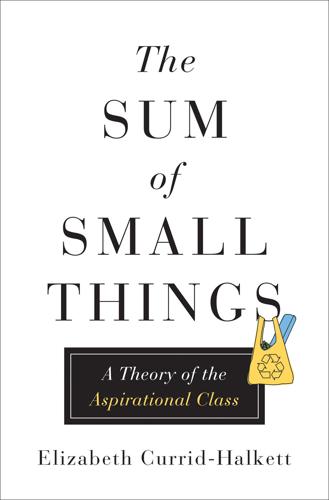
The Sum of Small Things: A Theory of the Aspirational Class
by
Elizabeth Currid-Halkett
Published 14 May 2017
Loft living: Culture and capital in urban change (2nd ed.). New Brunswick, NJ: Rutgers University Press. ———. (1993). Landscapes of power: From Detroit to Disney World. Berkeley: University of California Press. Zukin, S., & Kosta, E. (2004). Bourdieu off-Broadway: Managing distinction on a shopping block in the East Village. City & Community 3(2): 101–114. doi:10.1111/j.1535-6841.2004.00071.x. Zukin, S., & Maguire, J. S. (2004). Consumers and consumption. Annual Review of Sociology 30(1): 173–197. doi:10.1146/annurev.soc.30.012703.110553. INTERVIEWS CONDUCTED Eugene Ahn, Forage Restaurant, September 16, 2013 Kate Berridge, author, February 26, 2014 Elizabeth Bowen, Altadena Farmers Market, October 15, 2013 Kevin Carney, Mohawk Botique, September 16, 2013 Nancy Chin, professor, Department of Public Health and Sciences, University of Rochester Medical Center, May 29, 2014 Paula Daniels, Los Angeles Food Policy Council, February 24, 2016 Juan Gerscovich, Industry of All Nations, October 9, 2013 Andrew Wallace Hadrill, professor of Roman Studies, University of Cambridge, March 17, 2014 Corky Harvey, The Pump Station, November 30, 2012 Marian MacDorman, senior statistician, Centers for Disease Control and Prevention; editor-in-chief, Birth: Issues in Perinatal Care, May 28, 2014 Laura and Jason O’Dell, Bucks and Does, October 23, 2013 Geoff Watts, Intelligentsia, October 30, 2013 Essie Weingarten, founder, Essie Cosmetics Ltd, December 1, 2012 Jen Williams and Derec Williams, founders, Pop Physique, July 9, 2015 Mark Zambito, Intelligentsia, October 2, 2013 INDEX Note: Page numbers followed by “f” or “t” indicate figures or tables, respectively.
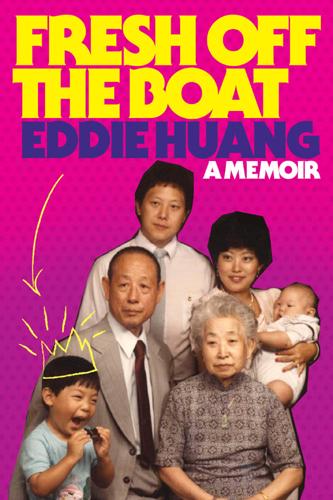
Fresh Off the Boat
by
Eddie Huang
Published 29 Jan 2013
Martin Yan’s China is the best way to brush up on your Chingrish. Phrases like, “This is the fashion” or “Rook how beaurifo my kung pao panda rook on dees rotus reef” are great for get togethers during the moon festival! Anyway, reader questions … “Where is the restaurant going to be?” Either NYC or Boston. Looking in both places right now, specifically East Village south of 13th, north of Houston, in NYC, and Brighton/Brookline in Boston. “Is this a Chinese restaurant?” Well, I am a Chinaman, there will be a few Chinaman items, but no, it is not a “Chinese restaurant.” But like they say, “You can take a Chinaman out the paddies, but he will still put MSG in all your food.”
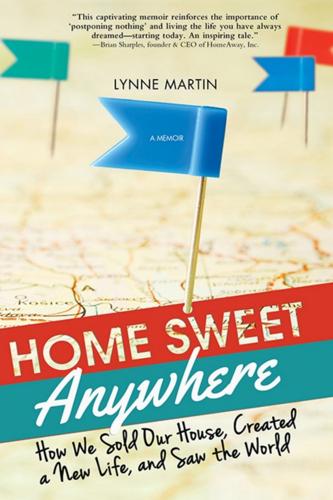
Home Sweet Anywhere: How We Sold Our House, Created a New Life, and Saw the World
by
Lynne Martin
Published 14 Apr 2014
Soon we were strolling up the tree-lined street toward the Blue Mosque. Small shops opened in the bright morning light, scarf-covered mothers herded their children to school, and outdoor cafés filled with Turkish men drinking tea, smoking, and chatting. The low brick buildings reminded us of the East Village in New York, but with a colorful twist. Jewel-toned textiles were everywhere. Rugs, coats, jackets, sunshades, and furniture were bathed in vibrant shades of red, ochre, blue, and green. We sniffed the rich aromas of coffee, baking pastry, and meats searing over charcoal. Some of the savory whiffs came from the apartments, but more from the small restaurants and cafés.

The Infinite Machine: How an Army of Crypto-Hackers Is Building the Next Internet With Ethereum
by
Camila Russo
Published 13 Jul 2020
The Ethereum documents and Vitalik’s blog posts said that they give no guarantees of ether’s future value but the chart they showed in the terms-and-conditions document, with a downward sloping line to represent the ether supply growth rate, surely gave prospective buyers reason to be hopeful. Bitcoin continued to trickle in, and on the seventh day of the crowdsale, Tuesday, July 29, Ken decided to make the plunge. He had moved back to New York from San Francisco just four days earlier. He and his wife were staying at the Ludlow Hotel in the East Village while the moving trucks were on their way from the West Coast with their belongings, and their children were staying at their grandparents’ in Florida to avoid the majority of the move. He was working at one of his venture fund’s investor’s offices until he got his own place. It had been a fairly typical day.
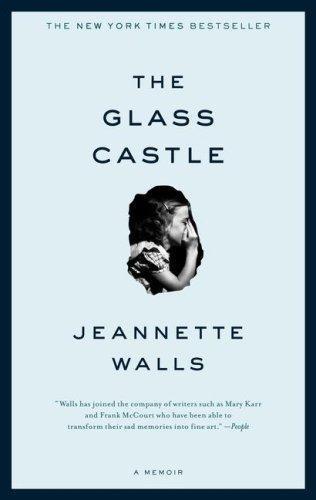
The Glass Castle: A Memoir
by
Jeannette Walls
Published 15 Mar 2005
I felt my shoulders tightening up, the way they invariably did during these conversations. "I'm talking about something that could help you change your life, make it better." "You want to help me change my life?" Mom asked. "I'm fine. You're the one who needs help. Your values are all confused." "Mom, I saw you picking through trash in the East Village a few days ago." "Well, people in this country are too wasteful. It's my way of recycling." She took a bite of her Seafood Delight. "Why didn't you say hello?" "I was too ashamed, Mom. I hid." Mom pointed her chopsticks at me. "You see?" she said. "Right there. That's exactly what I'm saying.
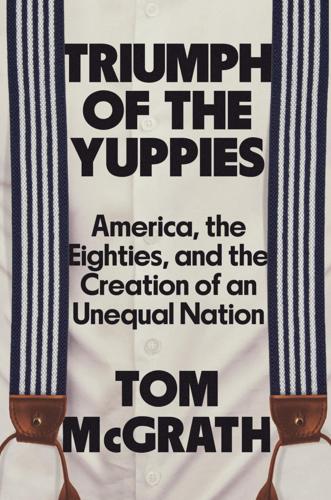
Triumph of the Yuppies: America, the Eighties, and the Creation of an Unequal Nation
by
Tom McGrath
Published 3 Jun 2024
In New York, bookstores couldn’t keep it in stock. The novel never used the word that was on everyone’s lips in the fall of 1984, but McInerney would later remember the first time he heard it. It was a year earlier, and he was having breakfast at a restaurant not far from where he lived in the East Village when he spotted a young couple waiting to be seated. He would, he said, have characterized them as “preppies”—they were wearing chinos and oxford shirts—but the guy sitting next to McInerney at the counter, an artist he knew from the neighborhood, used a different phrase for the couple. “Fucking Yuppies,” he muttered under his breath.

USA's Best Trips
by
Sara Benson
Published 23 May 2010
You’ll get a taste of the diversity if you stop for lunch at Café Colonial, a French-Brazilian fusion joint with a big, tropical mural on the outside wall and the classic Parisian tin ceiling inside. Across Houston St and heading east, you are walking the border between the funky Lower East Side on your right and the iconic East Village on your left. When you come across Ave C, head north, into what used to be called Alphabet City. Comprising Aves A, B, C and D, these four streets entered pop culture lore as the backdrop to the Broadway smash, Rent, the story of young creative types struggling to make art (and the rent) in pre-gentrification New York.
…
“Most of the city is built on a grid system, so this is one of the only places you can do that. All the signs are in Cantonese or Mandarin and the streets are narrow and winding…I’ll listen to my headphones, walk around and just get totally lost.” Unpredictability is the secret weapon of the Slipper Room, a delectably gaudy East Village cabaret. “You never know what you’re going to get there, it might be some terrible band or a bizarre, fantastic burlesque show,” says Moby, who is routinely dragged on stage to perform. “Get a couple of drinks in me and I’m shameless.” Simona Rabinovitch * * * At 96th St you can hop back on the subway and skip down to Little Korea, conveniently next to Macy’s department store, in case you had a hankering to ride its old, wooden escalators.
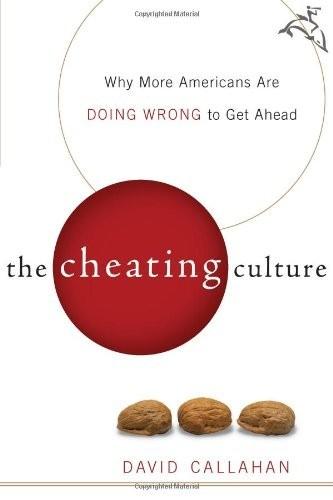
The Cheating Culture: Why More Americans Are Doing Wrong to Get Ahead
by
David Callahan
Published 1 Jan 2004
Its building on the Hudson is a place of exalted dreams and of pent-up aspirations often traceable just a few decades back to peasant cultures abroad. But Stuyvesant is also a place of profound desperation and extreme pressures. Two decades ago, Stuyvesant's students were mainly Jewish or Eastern European. Back then, the school was located on East 15th Street, and it was filled with kids from neighborhoods in the East Village and Upper West Side. These days, New York's Jews and Greeks and Hungarians and Romanians have largely graduated to secure spots in the middle or upper middle class; most send their children to private schools. Stuyvesant today is filled with a new generation of strivers who are clawing their way up from the lower rungs of the economic ladder—Indian kids from Queens, Chinese kids from Chinatown, Koreans from all boroughs, and others: West Indians, Pakistanis, Vietnamese, Bengalis.
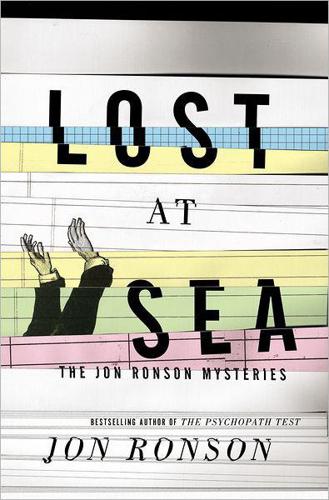
Lost at Sea
by
Jon Ronson
Published 1 Oct 2012
It sure beats going there.” So was it all worth it? Was the hooker doorway eventually picked for Eyes Wide Shut the quintessential hooker doorway? Back at home I watch Eyes Wide Shut again on DVD. The hooker doorway looks exactly like any doorway you would find in Lower Manhattan—maybe on Canal Street or in the East Village. It is a red door, up some brownstone steps, with the number 265 painted on the glass at the top. Tom Cruise is pulled through the door by the hooker. The scene is over in a few seconds. It was eventually shot on a set at Pinewood. I remember the Napoleon archive, the years it took Kubrick and some assistants to compile it, and I suggest to Jan Harlan, Kubrick’s executive producer and brother-in-law (and Manuel’s father), that had there not been all those years of attention to detail during the early planning of the movie, perhaps Napoleon would have actually been made.
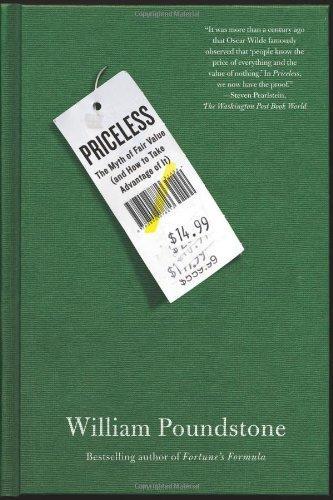
Priceless: The Myth of Fair Value (And How to Take Advantage of It)
by
William Poundstone
Published 1 Jan 2010
Behavioral decision theory is still a small field, much like an extended family. In interviewing some of its most distinguished figures, my talk of “Professor Kahneman” instantly branded me an outsider. To everyone in the field, it’s “Danny” and “Amos,” and this is no false familiarity. Almost everyone knew them. Seated, with his feet up, in the study of his East Village penthouse, “Danny” was almost apologetic when I mentioned his United Nations experiment, part of the body of work that merited his Nobel Prize. “At the time,” he said, “it was not considered a big sin.” The “sin” was using deception in a psychological experiment, something now frowned upon. He and Tversky used one piece of aparatus, a carnival-style wheel of fortune marked with numbers up to 100.
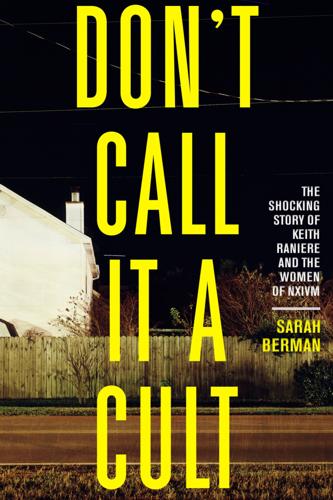
Don't Call It a Cult: The Shocking Story of Keith Raniere and the Women of NXIVM
by
Sarah Berman
Published 19 Apr 2021
“The letters were so much, so much harder for me,” Nicole testified. “Making the video was kind of freeing, again, under the circumstances that I thought no one was ever going to see it, ever.” * * * — NICOLE MET MACK again at the Ace Hotel to deliver her collateral, then the two actors headed to a vegetarian restaurant in Manhattan’s East Village, where Mack told Nicole about the secret women’s empowerment group, which Mack called the “Vow.” Mack told her about the incredible women who were already part of this growing network. She said that women who joined were pushing each other to be stronger in all facets of their lives. The program would make Nicole physically, emotionally, and intellectually stronger so that she could build the life she wanted for herself.
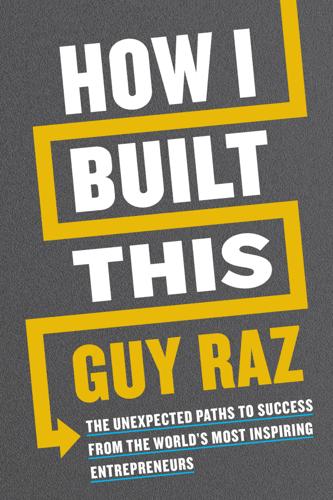
How I Built This: The Unexpected Paths to Success From the World's Most Inspiring Entrepreneurs
by
Guy Raz
Published 14 Sep 2020
It’s not clinical or calculated. It’s compassionate. There is an empathy present in their decisions that often extends all the way out to the customer. In the late 1980s and early 1990s, when Marcia Kilgore was building the skin care and facial business that would become Bliss out of a tiny studio apartment in Manhattan’s East Village, she developed a reputation as more than just an expert on clearing up bad skin. She was also someone you could count on to do whatever it took to get you to that fresh-faced place. “A facial is generally an hour, but I might be in there for two hours with somebody if they really needed it,” Marcia said.
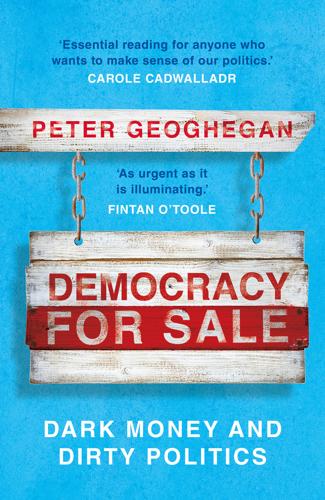
Democracy for Sale: Dark Money and Dirty Politics
by
Peter Geoghegan
Published 2 Jan 2020
In October 2019, protests broke out when El Caudillo’s body was exhumed from a monumental state-built mausoleum and reburied in a low-key municipal cemetery;99 two weeks later, Vox won 15 per cent of the vote in the general election. There is often a temptation to believe that your country is immune, or at least inoculated, from the worst authoritarian excesses. I watched the early hours of Donald Trump’s election victory in 2016 in a bar in New York’s East Village, surrounded by young liberals. As Republican victories mounted up and Clinton’s path to the White House became ever more vertiginous, one turned to me and said, “Even if Trump wins, it doesn’t matter that much. The constitution will protect us.” I heard a similar sentiment dozens of times in the hours and days that followed.

They All Came to Barneys: A Personal History of the World's Greatest Store
by
Gene Pressman
Published 2 Sep 2025
The exhibition was “Costumes of Royal India,” dripping in jewels and silks, not unlike La Vreeland herself. At the party afterward, I ran into a guy I knew slightly, John Bodum, who by day did sales for a company called Go Silk, but was better known by night as the ultimate social connector. John looked like the Mama Cass of the East Village and he knew everybody: the schleppers of the Garment District, the party boys of the Pyramid Club, and every imaginable type in between. Another person he knew was a young installer on the Vreeland show, who had come from Los Angeles and was sleeping on his floor. In return for his services, Simon Doonan had been given two tickets to the party, and he gave one to Susanne Bartsch, the Swiss-born ga-ga club queen of downtown New York, and the other to John.

Western USA
by
Lonely Planet
Drinking Wine Steals WINE BAR ( 619-295-1188; www.winestealssd.com; 1243 University Ave, Hillcrest) Laid-back wine tastings (go for a flight or choose a bottle off the rack in the back), live music, gourmet pizzas and cheese platters bring in a nightly crowd to this low-lit wine bar. Look for two newer branches in San Diego, Wine Steals East Village (793/5 J St, Downtown) and Lounge-Point Loma (2970 Truxtun Rd, Point Loma). Tipsy Crow BAR, LOUNGE (www.thetipsycrow.com; 770 5th Ave, Downtown) There are three distinct levels at this historic Gaslamp building that’s been turned into an atmospheric watering hole: the main floor with its long mahogany bar, the lounge-like ‘Nest’ (thought to be the site of a former brothel), and the brick-walled ‘Underground’ with a dancefloor and live music acts.
…
Montrio Bistro CALIFORNIAN $$$ ( 831-648-8880; www.montrio.com; 414 Calle Principal; mains $14-29; 5-10pm Sun-Thu, to 11pm Fri & Sat; ) Inside a 1910 firehouse, this classy restaurant’s tables are covered in butcher paper with crayons for kids. Seasonal New American cooking and Monterey County wines satisfy. East Village Coffee Lounge CAFE $ (www.eastvillagecoffeelounge.com; 498 Washington St; snacks & drinks $3-6; 6am-late Mon-Fri, from 7am Sat & Sun) Sleek coffeehouse with a liquor license and live-music, DJ and open-mic nights. Crêpes of Brittany SNACKS $ (www.vivalecrepemonterey.com; 6 Old Fisherman’s Wharf; snacks $4-9; 8:30am-7pm Sun-Thu, to 8pm Sun) Authentic savory and sweet crepes swirled by a French expat; expect long lines and shorter hours in winter.
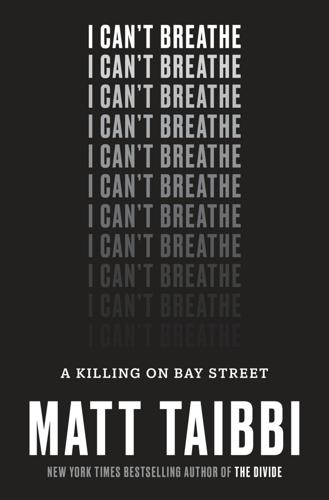
I Can't Breathe
by
Matt Taibbi
Published 23 Oct 2017
In 2000, America’s leading fast-food philosopher, Malcolm Gladwell, helped establish his place in the intelligentsia on the back of a half-baked analysis of Broken Windows in a book called The Tipping Point. Gladwell sold Middle America on the idea that making little changes in an environment can bring about big results, and you can fight crime the same way you start a fashion trend. So just as you can sell lots of Hush Puppies shoes by getting a bunch of kids in a chic neighborhood like the East Village to wear them, so too can you stop felonies and murders by busting graffiti artists. Or something. It sounded convincing enough to the millions of people who read the book. The only people who had a problem with Broken Windows seemed to be the ones living in the target neighborhoods. People in black and Hispanic neighborhoods of New York and other cities began showing up in lawyers’ offices with horror stories of being knocked down, strip-searched on the street, and busted repeatedly for nonsense charges like obstructing government administration, loitering, or obstructing pedestrian traffic.
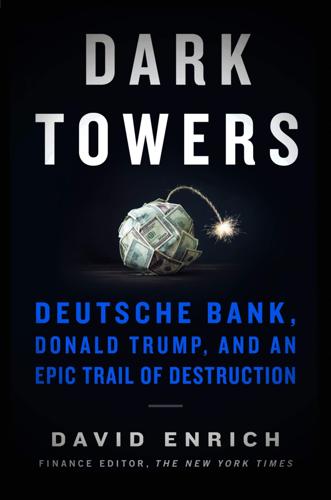
Dark Towers: Deutsche Bank, Donald Trump, and an Epic Trail of Destruction
by
David Enrich
Published 18 Feb 2020
Afterward, the men rode the elevator downstairs together, and Mitchell congratulated Breit on his presentation. “What do you mean, Edson?” Breit asked. “They literally fell asleep.” Edson guffawed. “That’s what we want!” As years passed, Bill and Edson became inseparable, even outside the office. They frequented the century-old Russian and Turkish Baths in the East Village. Sometimes Bill’s oldest child, Val, was allowed to tag along, watching as the men melted in the 190-degree sauna and had contests about who could stay in the longest. (A bright yellow sign warned against remaining more than thirty minutes at a time, but such rules were meant to be broken.) They’d sit in there, clad in the green shorts that the baths provided to people who didn’t want to be naked, the hot air singeing their lungs, gossiping about work and their families.
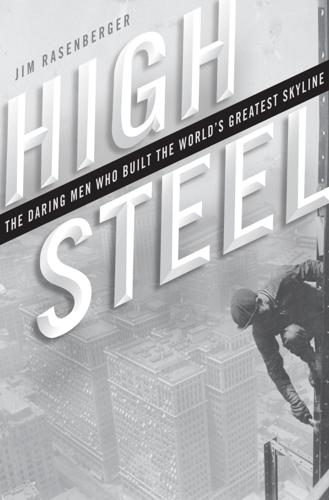
High Steel: The Daring Men Who Built the World's Greatest Skyline
by
Jim Rasenberger
Published 15 Mar 2004
Keith commanded the first phase of erection, the raising gangs, the rigs, the bolter-ups, and the steel deliveries. Marvin took care of the follow-up, the detail crews, the welders. They didn’t see as much of each other as they used to. They no longer commuted to and from work together, as they had for years, because Keith had recently started seeing a woman who lived in the East Village. Most afternoons, though, they met up for lunch, usually at a Greek deli on 58th Street where everyone knew them. “How are my friends today?” the counterman bellowed as they straddled a couple of stools one afternoon. “Happy as a bowl of fuckin’ sunshine,” mumbled Keith. “Lemme have a cup of coffee.
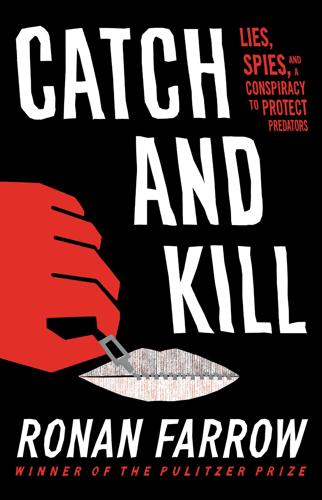
Catch and Kill: Lies, Spies, and a Conspiracy to Protect Predators
by
Ronan Farrow
Published 14 Oct 2019
The formatting was identical to that of the documents that had made their way through the offices on Ropemaker Street in London, with blue italic Times New Roman headers and shaky English. As he looked at the details, a strange feeling came over him. He wasn’t used to following reporters. CHAPTER 21: SCANDAL On a muggy morning not long after the meeting with Oppenheim, I made my way through the sweating crowds, past the tilted cube at Astor Place, toward the East Village. I’d texted McGowan and she’d agreed to meet. At the Airbnb where she was staying, she emerged in pajamas, a half-moon silicone pad under each eye. She gestured to the absurd room around her, which was princess-pink, with fuzzy pillows everywhere. “I didn’t decorate,” she deadpanned. She was drawn, nervous, even more stressed than when we’d last met.
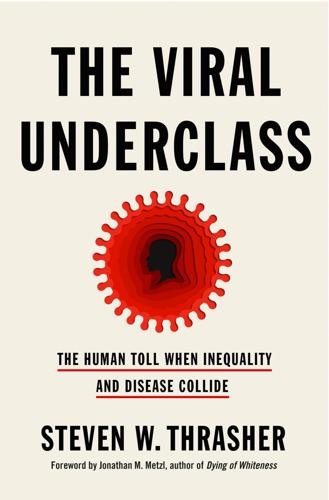
The Viral Underclass: The Human Toll When Inequality and Disease Collide
by
Steven W. Thrasher
Published 1 Aug 2022
This leads to worse health outcomes for queer hearts and lungs and grants pathogens more entry points through pathways of poverty. I think of my friend Henry Bradley, a rail-thin Black gay singer and composer whom I met in the late 1990s when we both sang in the Jerriese Johnson Gospel Choir in the East Village. Henry had contracted HIV in its earliest days, and even when he was at his sickest, he had to fight to hold on to his most potent prophylaxis: housing. Under Mayor Rudy Giuliani, the City of New York had begun demanding that people who needed social services like food and housing assistance would have to physically come in person to city offices to get them, something many of them could not do.
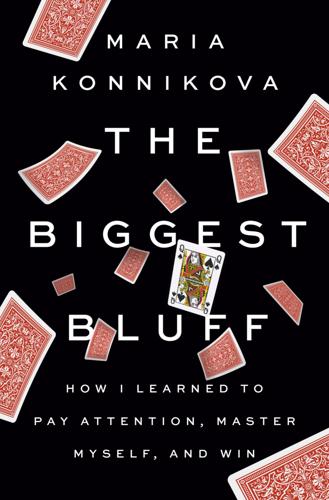
The Biggest Bluff: How I Learned to Pay Attention, Master Myself, and Win
by
Maria Konnikova
Published 22 Jun 2020
I certainly hope so. A Storytelling Business Las Vegas, March 2017 “Lie to me by the moonlight. Do a fabulous story.” F. SCOTT FITZGERALD, “THE OFFSHORE PIRATE,” 1920 The only thing I know about Phil Galfond is that he once bought two loft-like apartments in the East Village, one floor apart, and had them connected with a slide. A stainless steel, curvy, custom-designed contraption that was apparently just a tad too fast for steady comfort. (When it came to getting from one floor to the other, Phil grew to prefer the more traditional stairs.) When he left New York for Las Vegas, the slide stayed behind.

Stuck: How the Privileged and the Propertied Broke the Engine of American Opportunity
by
Yoni Appelbaum
Published 17 Feb 2025
And that gives me great hope that it can do so once more. Chapter Two The Death of Great American Cities All his life, Rudolph Hechler moved toward opportunity. Born into a Jewish family in Austrian Galicia around 1886, he was perhaps thirteen when he boarded a steamship for New York. Within a decade, he was living in the East Village—married, with a young son and twin daughters—and working in a sweatshop, making ladies’ clothes. Soon, he’d saved enough to rent an apartment in the Bronx. And after decades of working as a tailor, he made his biggest move of all. Hechler left his occupation, and then, by 1940, he left the Bronx for the West Village—moving downtown but moving up.
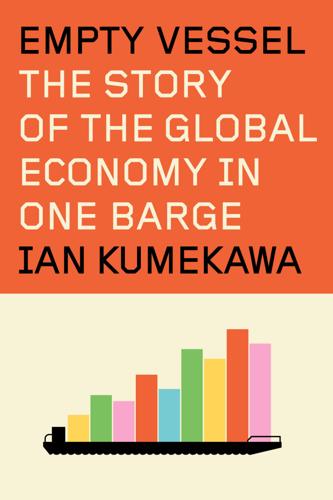
Empty Vessel: The Story of the Global Economy in One Barge
by
Ian Kumekawa
Published 6 May 2025
In Deputy Mayor Brezenoff’s words, “We were very pro-development in the [Koch] administration.”[95] During the 1980s, the fortunes of New York’s rich and poor diverged radically. Nowhere was this divergence more evident than in Lower Manhattan. Though unemployment in New York gradually decreased from a peak of 9.3 percent in early 1983, homelessness continued to soar, as did the rates of drug addiction. Both were on full display in the East Village’s Tompkins Square Park, which became the most visible center of homelessness in New York and the site of successive violent clearances carried out at baton-point by the NYPD.[96] Meanwhile, New York’s financial services industry boomed. While in New York, the Vessel and its sister ship were at the very heart of the gilded world of global finance.
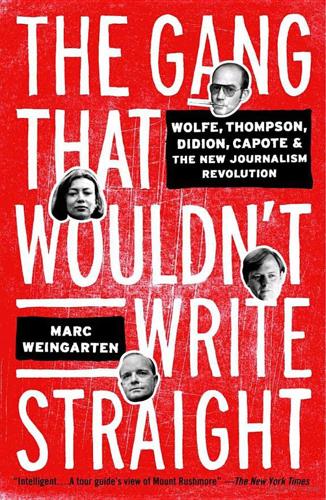
The Gang That Wouldn't Write Straight: Wolfe, Thompson, Didion, Capote, and the New Journalism Revolution
by
Marc Weingarten
Published 12 Dec 2006
Wolfe, Breslin, and the rest were contributing the same high level of journalism to the magazine, but there were growing pains that needed to be addressed. The magazine’s lively mix of politics, culture, and lifestyle coverage was strong, but not distinguished enough to stand apart from the other two weekly newspapers in town, the Village Voice and the East Village Other. Felker knew he needed a sharper focus, a stronger point of view. The Voice and the Other were addressing readers who lived below Fourteenth Street; New York would have to be for Felker’s crowd, those who lived tightly circumscribed lives on the upper half of Manhattan island—the privileged class who worried about building a nest egg to pay for private school tuition and struggled to pay their maintenance fees on co-op apartments, as well as the class-conscious strivers who longed to be tuned in to the vertiginous uptown whirl.
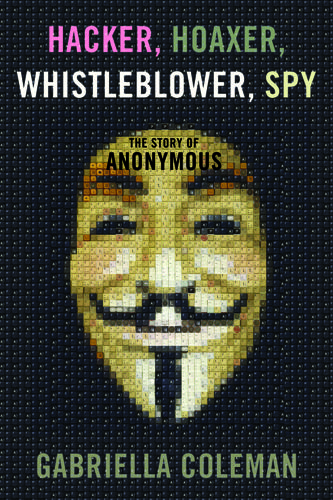
Hacker, Hoaxer, Whistleblower, Spy: The Story of Anonymous
by
Gabriella Coleman
Published 4 Nov 2014
Meeting Sabu Thanks to a detailed FAQ published by the New York City Department of Information Technology & Telecommunications, we know roughly how many sidewalk payphones dot the five boroughs: “As of January 2, 2014 there are 9,903 active public pay telephones on or over the City’s sidewalks.”13 I, personally, never even noticed them, until Sabu asked me to use one. He did not want to arrange a meeting online. It felt safer and prudent to use a payphone; key loggers are always a possibility with computers. Our first rendezvous was scheduled for soon after Bolonga’s doxing, on October 3 at the Chipotle on St. Mark’s Place in the East Village. Although we had never met, he assured me that “you will recognize me.” The one picture purporting to be Sabu that was floating around the web was of a wiryyet, muscular Latino man. I arrived early. The minutes moved slowly, until suddenly, I was aware of a tall but much larger and more commanding figure sauntering towards me.
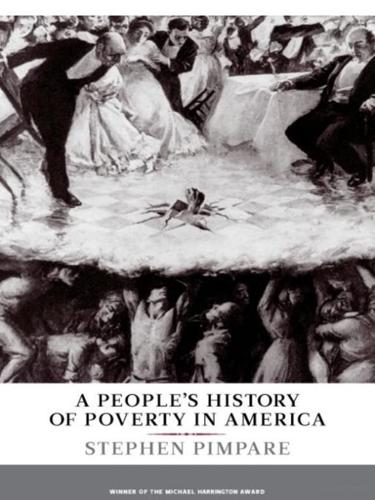
A People's History of Poverty in America
by
Stephen Pimpare
Published 11 Nov 2008
I think repetition must inure the human animal to certain kinds of agony.41 Walls again, recounting an exchange years later with her now-homeless mother:“You want to help me change my life?” Mom asked. “I’m fine. You’re the one who needs help. Your values are all confused.” “Mom, I saw you picking through trash in the East Village a few days ago.” “Well, people in this country are too wasteful. It’s my way of recycling.” She took a bite of her Seafood Delight. “Why didn’t you say hello?” “I was too ashamed, Mom. I hid.” Mom pointed her chopsticks ate me. “You see?” she said. “Right there. That’s exactly what I’m saying.
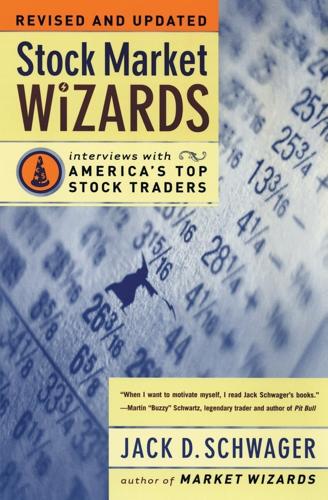
Stock Market Wizards: Interviews With America's Top Stock Traders
by
Jack D. Schwager
Published 1 Jan 2001
I was probably influenced by my mother, who does large-format photography—in the style of Ansel Adams. What kind of photography did you do? Primarily photography of architecture and some portraiture work, but from the vantage point of looking at people as architecture rather than as personalities. In the early 1980s, I had a show in the East Village, which went quite well. However, then the gallery owner had requests from clients who wanted me to photograph certain subjects according to their specifications—for example, to match their sofa, or something equally as ridiculous. UA-UDIWWHM I decided if my reason for working was to make money, I might as well go into business.

Merchants' War
by
Stross, Charles
Published 30 Sep 2007
I'm going to have to pay him, Miriam thought, furiously racking her brains for ideas as the cab rattled across the stone pavements. What with? She fumbled in her greatcoat's pockets. One of them disgorged a foul-smelling cheesecloth bag full of loose tobacco. The other contained nothing but a loose button. Oh, great. They were turning past Highgate now, down in what corresponded to the East Village in her world. Not an upmarket neighborhood in New London, but there were worse places to be-like inside a thief-taker's lockup for trying to cheat a cabbie of his fare. What was the woman's name, Bishop? Margaret Bishop? I'm going to have to ask her to pay for me. Miriam tensed up. Or I could world-walk hack to the other side, wait a couple of hours, and -but her headache was already telling her no.
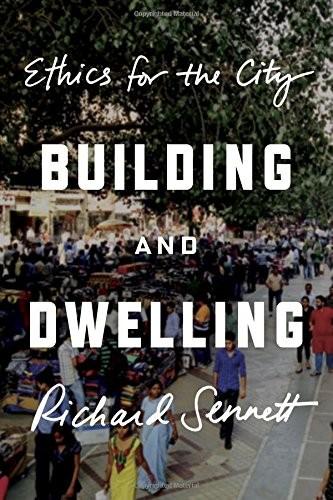
Building and Dwelling: Ethics for the City
by
Richard Sennett
Published 9 Apr 2018
Le Bon, Gustave Le Corbusier (Charles-Édouard Jeanneret) Modular Man Plan Voisin The Radiant City and rupture When the Cathedrals Were White Le Nôtre, André Le-Pré-Saint-Gervais, France Lebanon, civil war Ledoux, Claude-Nicolas Leibniz, Gottfried Wilhelm L’Enfant, Pierre Charles Leonardo da Vinci Letchworth Garden City Lévi-Strauss, Claude Levinas, Emmanuel libraries Lincoln, Abraham liquid modernity Liu Thai Ker Living Breakwaters berm local knowledge see street-smarts Locke, John London, approach to Berkeley Square Bloomsbury Bourne Estate Canary Wharf Clerkenwell commuter transport courtesy rituals in Docklands gentrification in green space Grenfell Tower fire Hatton Garden Heron Quay Herzen in immigration to Indians in Jews in Leather Lane legal experience map-making of Mayfair Metropolitan Police Act (1864) Millennium Dome Nelson’s Column at night paving Piccadilly pollution index population Ranelagh Gardens Saffron Hill sewers South Bank Spitalfields street cries terraces Trafalgar Square unemployment in Vauxhall Gardens waterways West India Docks Woburn Walk working class Lucretius On the Nature of Things Lussault, Michel Lynch, Kevin The Image of the City Lyons ForCity project McMillan Commission making and makers Mann, Horace Mann, Thomas, Buddenbrooks Mao Zedong markets, street see also Delhi: Nehru Place Márquez, Gabriel Garcia Marx, Karl The Communist Manifesto (with Friedrich Engels) Grundrisse der Kritik der politischen Ökonomie Masdar, Abu Dhabi mask of civility master-plan for cities master–slave relationship Mauss, Marcel May, Theresa (Prime Minister) Mazzanti, Giancarlo Meachem, John Medellín, Santo Domingo funicular libraries Parque Biblioteca España refugees in warning sounds in window boxes membranes Merholz, Peter metropolis, flight from Mexicans, as immigrants Mexico Mexico City population density transport Mies van der Rohe, Ludwig migrants, migration see also immigration Milton, John, Il Penseroso Missionaries and Cannibals (video game) MIT (Massachusetts Institute of Technology) Electronic Systems Laboratory Media Lab Mitchell, Melanie Mitchell, William City of Bits mitigation and adaptation mobility mobs model-making Monier, Joseph monocultures Montaigne, Michel de Moscow Gorki Street Moses, Robert motor traffic Mumford, Lewis ‘Mother Jacobs’ Home Remedies’ Technics and Civilization Munich Murger, Henri, La Bohème music, and type-forms Musil, Robert, The Man without Qualities Muslims Nash, John Nazism Negroponte, Nicholas Neighbour (as concept) neighbour assemblies neighbourhood Nelson, Horatio Lord Netherlands water management networks, closed and open New York, additive grid Battery Park City benches in Brookfield Place Central Park Chanin Building climate change projects commuter railroads Dirty Dick’s Foc’sle Bar docks Dryline berm East River East Village Eighth Avenue electric power station Fifth Avenue financial trading 14th Street Googleplex Greenwich Village Harlem High Line immigrants passing through John F. Kennedy International Airport life in Living Breakwaters local community loft spaces Lower East Side Manhattan La Marqueta New York Times tower 96th Street North End Avenue pollution index population Port Authority Queens Rector Place risk of flooding Seagram Building Sixth Avenue Spanish Harlem Staten Island, Tottenville stoops Sunnyside Times Square Tocqueville in traffic travel in Tribeca Union Square Upper East Side Upper West Side walking in Wall Street Washington Square water-edge projects waterways West Side Highway West Village White Horse Tavern, Greenwich Village Woolworth Building Zoo Newton, Isaac Nicolson, Marjorie Hope Nietzsche, Friedrich Nimwegen, Christof van Nolli, Giovanni Battista, map of Rome Obama, Barack octopus city Okakura, Kakuzo The Book of Tea Oles, Thomas Olmsted, Frederick Law Olsen, Donald open and closed systems open-systems thinking open forms incomplete multiple porous punctuated synchronous orientation verbal Ortega y Gasset, José orthogonal form Osborn, Frederic the Other, as alien or fraternal Buber and definitions of exclusion of fleeing Googleplex and isolation from and Neighbour shunning stereotypes of Oudolf, Piet Ovink, Henk Paccoud, Antoine Palestine Liberation Organization Palestinians Palladio, Andrea Paris, Bachelard in Balzac’s Bibliothèque Nationale Boulevard St-Germain Café de la Paix Champs-Élysées and Charter of Athens Commune courtyards department stores Eiffel Tower Haussmann’s boulevards Herzen in Hotel de Ville Hôtel Salé Jane Jacobs and Louvre La Madeleine church Marais quarter modernity of Montmartre at night Palais-Royal Périphèrique Place Louis XV (Place de la Concorde) Plan Voisin Proust’s public health in quays 7th arrondissement Stendhal’s traffic working class see also Le Corbusier, Plan Voisin Park, Robert E.
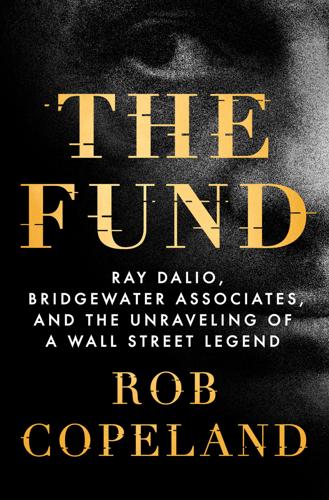
The Fund: Ray Dalio, Bridgewater Associates, and the Unraveling of a Wall Street Legend
by
Rob Copeland
Published 7 Nov 2023
When the baggage carousel finally started up, Dalio hauled a pair of enormous suitcases off the belt—groaning slightly under their weight—dumped them on the luggage cart, and headed for the curb. The Davos attendee watched the scene in fascination. Now that, he thought, is a humble man. AFTERWORD Ray and I Forgive me, for we are about to discuss cats having sex. In 2010, I was twenty-three years old and living in Manhattan’s East Village on East Sixth Street, better known as Curry Row for its cluster of identical Indian restaurants. Each employed loud, competing salespeople to stand out front, hawking menus. The noise followed me upstairs; my three-bedroom walk-up apartment housed four people, including one couple, and at least that many opinions on who was underpaying for groceries.
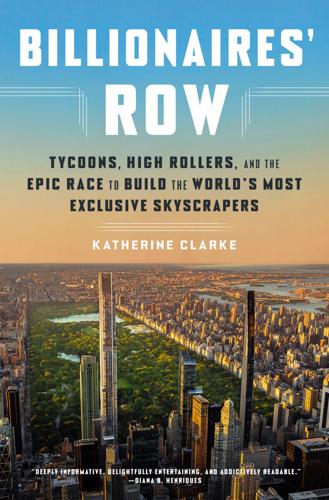
Billionaires' Row: Tycoons, High Rollers, and the Epic Race to Build the World's Most Exclusive Skyscrapers
by
Katherine Clarke
Published 13 Jun 2023
However, in an early hearing, the majority of commissioners seemed to lean toward approval. Stern and Maloney faced one notable adversary: Commissioner Margery Perlmutter. A no-nonsense lawyer and an architect by training, the curly-haired Perlmutter was never afraid to be a dissenting voice. When the commission created a historic district aimed at preserving tenements in the East Village the prior year, Perlmutter was the only member to vote against the designation, insisting that most of the buildings didn’t warrant preservation. In the early hearing, Perlmutter reportedly seemed perplexed by the broad support for the project. She declared that she found the proposal inconsistent with the commission’s usual modus operandi and that there were plenty of more appropriate sites in the city on which to build a tower of this scale.

Northern California Travel Guide
by
Lonely Planet
Shared plates, including crab cakes and smoked salmon, provide a tasty reason to linger. Sardine Factory LoungeLOUNGE ( MAP GOOGLE MAP ; %831-373-3775; www.sardinefactory.com; 701 Wave St; h5pm-midnight) The legendary restaurant’s fireplace lounge pours wines by the glass, delivers filling appetizers to your table and has a live piano player most nights. East Village Coffee LoungeCAFE, LOUNGE ( MAP GOOGLE MAP ; %831-373-5601; www.facebook.com/eastvillagemonterey; 498 Washington St; h6am-10pm Mon-Fri, from 7am Sat & Sun; W) Downtown Monterey coffee shop on a busy corner brews with fair-trade, organic beans. At night, it pulls off a big-city lounge vibe with film, open-mike and live-music nights and an all-important booze license.
…
Fogcatcher InnHOTEL$$$ ( GOOGLE MAP ; %805-927-1400; www.fogcatcherinn.com; 6400 Moonstone Beach Dr; r from $204; Ws#) Moonstone Beach Dr hotels are nearly identical, but this one stands out with its pool and hot tub. Faux English Tudor–style cottages harboring quietly luxurious modern rooms, some with fireplaces and ocean views. Pet fee $75. 5Eating & Drinking It’s a short walk between cutesy cafes and interesting restaurants in Cambria's East Village. Linn's Easy as Pie CafeAMERICAN$ ( GOOGLE MAP ; %805-927-0371; www.linnsfruitbin.com; 4251 Bridge St; dishes $6-12; h10am-7pm Mon-Thu, to 8m Fri-Sat; c) If you don’t have time to visit Linn’s original farm stand on Santa Rosa Creek Rd (a 20-minute drive east via Main St), you can fork into its famous olallieberry pie at this take-out counter that delivers soups, salads, sandwiches and comfort fare such as chicken pot pie to a sunny deck.
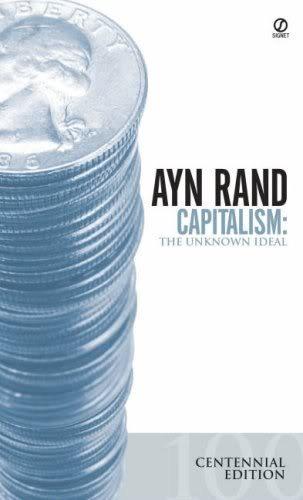
Capitalism: the unknown ideal
by
Ayn Rand
Published 15 Aug 1966
We do not spend endless hours debating the nature of Soviet Russia or whether Yugoslavia is a degenerate workers’ state.” [And]: “With sit-ins we saw for the first time the chance for direct participation in meaningful social revolution.” In their off-picket-line hours, [states the same article] the P.L. [Progressive Labor] youngsters hang out at the experimental theaters and coffee shops of Manhattan’s East Village. Their taste in reading runs more to Sartre than to Marx. With an interesting touch of unanimity, a survey in Newsweek (March 22, 1965) quotes a young man on the other side of the continent: “ ‘These students don’t read Marx,’ said one Berkeley Free Student Movement leader. ‘They read Camus.’ ” “If they are rebels,” the survey continues, “they are rebels without an ideology, and without long-range revolutionary programs.
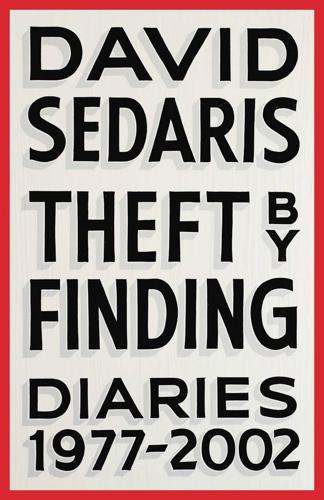
Theft by Finding: Diaries (1977-2002)
by
David Sedaris
Published 29 May 2017
The city smells like burned coffee. October 19, 1990 New York Lily has been painting and doing light carpentry work in the town house of an antiques dealer. He has a little dog named Crumpet that acts pitiful and lame when it wants food and attention. She told me about him at a falafel restaurant in the East Village, and then I told her about my downstairs neighbors, who have been complaining about the sound of my footsteps. “Because of them I now go barefoot when I’m at home,” I told her. “And I tiptoe.” A woman sitting near us finished her meal and said to me on her way out, “Listen, you pay rent too. There’s no need for you to tiptoe around your own apartment.”

The Ones We've Been Waiting For: How a New Generation of Leaders Will Transform America
by
Charlotte Alter
Published 18 Feb 2020
By 10:00 p.m., Ground Zero was submerged, the subways had flooded, and the Hudson River was pouring into the Hugh L. Carey Tunnel between Brooklyn and Manhattan. New York University’s medical center lost power, and doctors and nurses evacuated vulnerable patients by flashlight. Cars floated out of underground parking garages. By midnight the East Village had flooded, a ConEd facility had exploded, and almost all of Lower Manhattan had lost power. In Westchester County, an eleven-year-old boy and his friend were both killed when a tree collapsed into the living room. On Staten Island, Glenda Moore’s house lost power, and her husband (a sanitation worker, who had been called into duty to help with the storm) told her to find a safer place to stay.
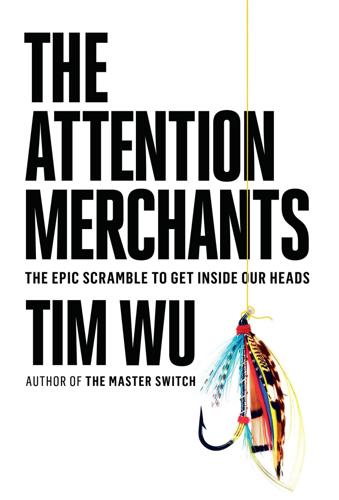
The Attention Merchants: The Epic Scramble to Get Inside Our Heads
by
Tim Wu
Published 14 May 2016
Since its 1956 debut on CBS, it had been sponsored by the same soap company, Procter & Gamble, for which it had been created by Irna Phillips herself, the inventor of the genre.7 When MTV called, Bunim teamed up with another producer, Jonathan Murray, and began to work up a teen soap opera tentatively entitled St. Mark’s Place. It was planned as a serial drama about young people living in the East Village, hoping to make it as performers or artists or whatever—a kind of forerunner to the musical Rent. But when Bunim and Murray presented their budget, MTV’s executives balked. As Murray recalled, they said, “We get our music videos for free, and now we’re going to spend $300,000 for half an hour of television?”

The Wizard of Menlo Park: How Thomas Alva Edison Invented the Modern World
by
Randall E. Stross
Published 13 Mar 2007
Here, too, “people who saw the affair thought it was very funny.” See “Horses Thrown Down,” NYT, 2 June 1889. The problem of street-level electrical shocks is not merely a curiosity of that early era. On 16 January 2004, a young woman, Jodie Lane, was electrocuted while walking her dogs in the East Village. The dogs stepped on a metal plate that was electrified by stray current; they survived, but Lane did not. Regrettably, Major Eaton’s inclination to deny, deny, deny lives on in his latter-day successors in New York City. Consolidated Edison was less than forthcoming about the origins of the accident, and reporters uncovered 539 complaints of electrical jolts delivered by the streets of New York in the five years preceding Lane’s death, only a small portion of which had been reported to the city authorities.
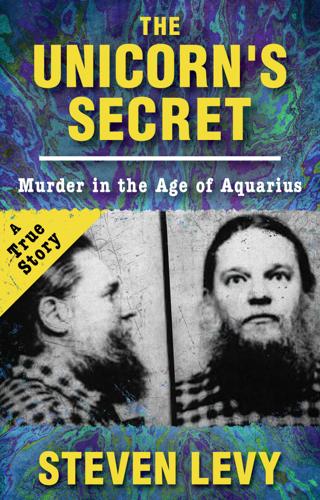
The Unicorn's Secret
by
Steven Levy
Published 6 Oct 2016
“A week or so later, Ira came back with about five or six carefully selected volumes, which I read,” says the bishop. “Kind of a quick course.” Ira was also Powelton’s chief diplomatic officer. He was able to boast kinship with the superstars of the movement. He often visited New York City, hanging out at activist Jerry Rubin’s East Village apartment with the founding fathers of Yippiedom. It was a movement Ira liked; as Rubin wrote in his 1970 tome, Do It, “Yippies are leaders without followers. Yippies do whatever we want whenever we want to do it.” This was displayed in famous acts like dropping money onto the floor of the New York Stock Exchange and watching the straights go crazy.
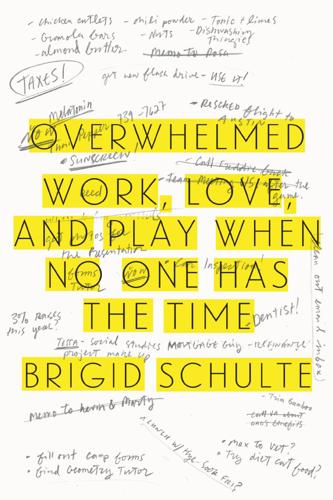
Overwhelmed: Work, Love, and Play When No One Has the Time
by
Brigid Schulte
Published 11 Mar 2014
Nadia also wanted to teach her girls that it’s in playing together that a family becomes truly close. The family has its own kind of to-do list: a jar they pull from, full of fun things they’d like to do. On the agenda one recent weekend: Find the best hot chocolate in Manhattan, visit the Doughnut Plant in the East Village and try a new flavor; go on a scavenger hunt; ride bikes; play a Scrabble-like game called Bananagram; see a movie (which was actually a dare to see how many movies they could sneak into in one day); plan the next family vacation: Name the country you most would want to visit, explain that country’s history, and create a budget and figure out what the family could do on it.
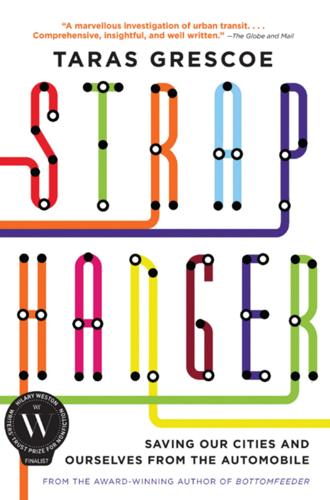
Straphanger
by
Taras Grescoe
Published 8 Sep 2011
The potential for a livable downtown was always there: compared to eastern cities, Los Angeles developed late, and its central business district was never home to noisy, polluting factories. At least 200,000 people work downtown every weekday, and 40,000 now live there, a number that has doubled in a decade. (Nonetheless, its population is still smaller than the tiny slice of Manhattan that is the East Village). Many historic buildings, converted into swank condos during the boom years, are now filled with half-vacant rental properties. Though a supermarket opened in 2007, there are still no public schools, making it a hard sell for parents. Spring Street has a decent stretch of hip bars, but few lights seem to be on in residential buildings in the evening, and it is difficult to find a café open on a Saturday.
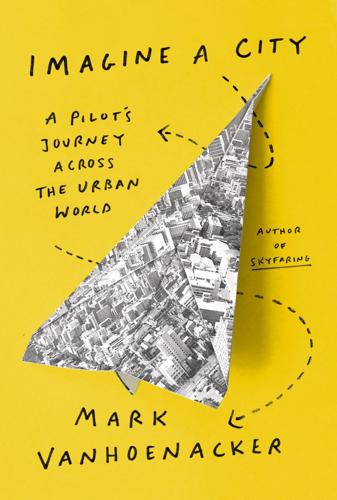
Imagine a City: A Pilot's Journey Across the Urban World
by
Mark Vanhoenacker
Published 14 Aug 2022
“Consequences of the ‘Plano Piloto’: The Urban Development and Land Markets of Brasília,” Urban Studies, vol. 44, no. 10, 2007, 1871–87. Drew, Bernard A., and Ronald Latham. Literary Luminaries of the Berkshires: From Herman Melville to Patricia Highsmith. Arcadia Publishing, 2015. Dunn, Ross E. The Adventures of Ibn Battuta: A Muslim Traveler of the Fourteenth Century. University of California Press, 2012. East Village. https://www.evexperience.com/blog/2019/9/19/behind-the-masks-katie-greens-bridge-installation. Accessed August 17, 2021. Edwards, Brian et al., editors. Courtyard Housing: Past, Present and Future. Taylor & Francis, 2006. 1843. https://www.economist.com/1843/2015/09/30/whose-sea-is-it-anyway.
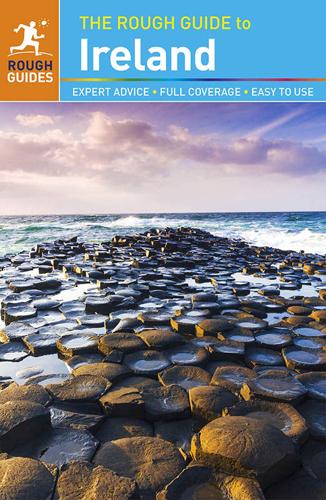
The Rough Guide to Ireland
by
Clements, Paul
Published 2 Jun 2015
Beach Guest House 051 383316, dunmorebeachguesthouse.com. Excellently kept rooms, some with sea-facing balconies, at this very smart, modern house on the seafront in the east village, with fine views from its conservatory. Breakfast delights include smoked salmon and scrambled egg, and French toast. Good rates for singles. March–Oct. €80 Strand Inn 051 383174, thestrandinn.com. Life in the east village is focused around this popular eighteenth-century inn, where most bedrooms have balconies overlooking the sea, enjoying views out towards the Hook Head lighthouse; they have a fresh, modern style, with white bedding and splashes of colour, perhaps from pastel cushions or a sympathetic modern painting.
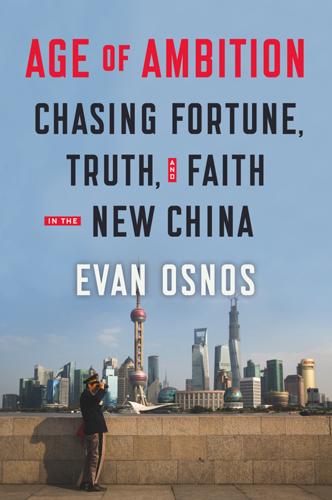
Age of Ambition: Chasing Fortune, Truth, and Faith in the New China
by
Evan Osnos
Published 12 May 2014
* * * In New York, Ai studied English and found a cheap basement apartment near East Seventh Street and Second Avenue. He spent his weekends haunting the galleries, roaming the city, as his brother put it, like “a mud-fish burrowing wherever there is muck.” He was intoxicated by the raw energy of the East Village, which to him felt “like a volcano with smoke always billowing out of the top.” Joan Lebold Cohen, a historian of Chinese art who got to know many Chinese artists in New York at the time, recalls visiting Ai’s building. “The whole place reeked of urine,” she said. “His apartment was a single room, no furniture, just a bed on the floor, and a television.
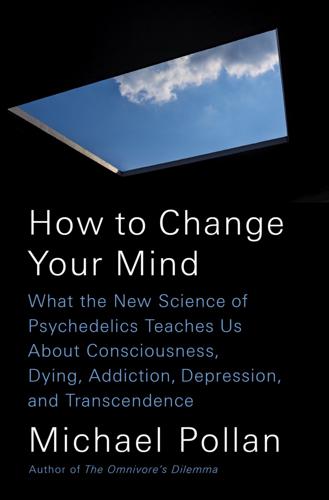
How to Change Your Mind: What the New Science of Psychedelics Teaches Us About Consciousness, Dying, Addiction, Depression, and Transcendence
by
Michael Pollan
Published 30 Apr 2018
It didn’t help that Leary liked to say things like “LSD is more frightening than the bomb” or “The kids who take LSD aren’t going to fight your wars. They’re not going to join your corporations.” These were no empty words: beginning in the mid-1960s, tens of thousands of American children actually did drop out, washing up on the streets of Haight-Ashbury and the East Village.* And young men were refusing to go to Vietnam. The will to fight and the authority of Authority had been undermined. These strange new drugs, which seemed to change the people who took them, surely had something to do with it. Timothy Leary had said so. But this upheaval would almost certainly have happened without Timothy Leary.
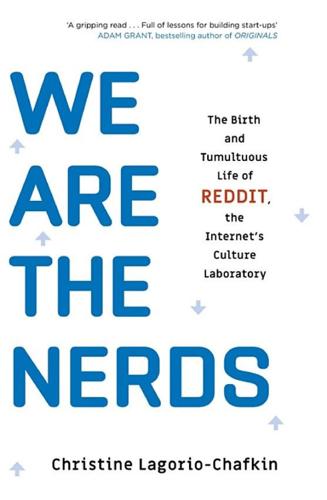
We Are the Nerds: The Birth and Tumultuous Life of Reddit, the Internet's Culture Laboratory
by
Christine Lagorio-Chafkin
Published 1 Oct 2018
It was everything Sakillaris—now Kristen Slowe—dreamed of: Greek Orthodox ceremony and a big party. For the nerds, they played the Star Wars theme before their first dance. For the one-year anniversary of the acquisition, in late October, Reddit hosted not one but several open-bar boozefests around the country. New York City’s was in a dive bar tucked beyond Avenue B in the East Village. Steve Newhouse attended, as did his younger cousin, S. I. Newhouse. Gawker wrote up the scene, noting the presence of the media-empire family, despite their general allergy to tabloid-style coverage. The media-gossip site dubbed the rest of the crowd “Silicon Alley’s scruffiest.” Ohanian, despite traveling many weeks—jetting back to Virginia to see his mother as her cancer and treatments intensified, or out to San Francisco for work—had grown comfortable with his new corporate life, commuting from Park Slope to Times Square, working some eight hours out of his beige office, and heading home or out to dinner with friends.
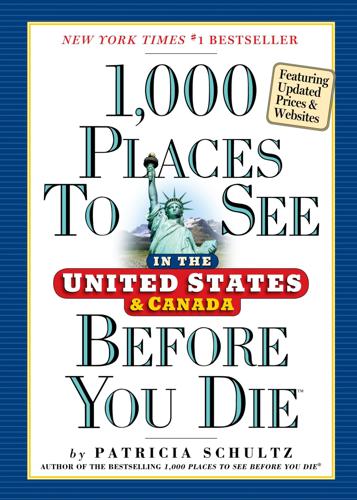
1,000 Places to See in the United States and Canada Before You Die, Updated Ed.
by
Patricia Schultz
Published 13 May 2007
South of the Village, the onetime manufacturing district (and later arts haven) known as SoHo is now a high-end retail district dominated by beautiful 19th-century castiron architecture, as exemplified by the Haughwout Store building at the corner of Broadway and Broome. East of Broadway from Houston to 14th, what’s now known as the East Village was originally part of the Lower East Side (see p. 179) until renamed by realtors in the 1960s. It extends all the way to the East River, offering a slowly subsiding grungier vibe left over from the 1970s–’80s punk scene, as well as a smattering of Polish and Ukrainian restaurants surviving from distant immigrant days.
…
Hearst Castle covers the hillside above the tiny coastal town of San Simeon, but most visitors will prefer spending time in the relaxed, exceedingly charming artists community of Cambria, located 6 miles south. Though the center of town is only a few blocks long, diversity can be found by meandering the historic and country-elegant East Village and the newer, more touristy West Village. Drop by the Sow’s Ear restaurant for gourmet comfort food in a tiny cottage that is both warm and romantic. If you’re staying the night, revel in the small-town country-coastal vibe at the J. Patrick House, a charming two-story log cabin B&B complete with wood-burning fireplaces, fluffy duvet covers, and bedtime milk and cookies.
…
Frank Wine Cellars, N.Y., 150 DRIFTLESS AREA, Wis., 584 Driftwood, Tex., 755 DRIVING THE ALASKA HIGHWAY, Alaska, 913–14 Drumheller, Alta., 1030–31 Dry Fork Loop, Colo., 713 Dry Tortugas, Fla., 308 Dubois, Wyo., 666–67 Duchin Lounge, Idaho, 605 Duck, N.C., 366 DUCK CALLING CONTEST, WORLD’S CHAMPIONSHIP, Ark., 400–401 Duck Festival, Que., 1013 Duke Chapel, N.C., 362 DUKE FARMS, N.J., 132–33 DUKE UNIVERSITY, N.C., 362 Duluth, Minn., 547–48 Dumbarton Oaks, Va., 257 Dummerston, Vt., 95 Duncan Lake, N.W.T., 1067–68 Dundee, Oreg., 884 Dunes Drive, N.Mex., 734 Dungeness National Wildlife Refuge, Wash., 895 Dungeness Spit, Wash., 895 Dungeon Bar, S.Dak., 660 Dunham, Que., 1013 Dunleith (inn), Miss., 442 Dunseith, N.Dak., 639–40 Dunton Hot Springs, Colo., 706 Dupar’s, Calif., 823 DU PONT LEGACY, Del., 115 DURANGO, Colo., 706, 712–13, 718 Durango & Silverton Narrow Gauge Railroad, Colo., 713 Durango Mountain Resort, Colo., 712 Durgin-Park, Mass., 42 Durham, N.C., 362–63 DUTCH COMMUNITY OF HOLLAND, Mich., 532–33 Dutchmen’s Store, Iowa, 522 Dyea, Alaska, 924 E EAA AIRVENTURE, Wis., 584–85 Eagle Ridge Resort and Spa, Ill., 498 Eagle River, Labrador, N.L., 983–84 Eagle’s Eye Restaurant, B.C., 1036–37 Eagle Watch Weekend, Ill., 503 East Amana, Iowa, 514–15 Eastern Canada, 973–1022 Eastern Shore, Md., 128–29 EASTERN SHORE, Va., 242 Eastern Star, N.S., 992 EASTERN TOWNSHIPS, Que., 1012–13, 1019 Easter Parade, N.Y., 182 EAST HADDAM, Conn., 5 East Hampton, N.Y., 160, 161 Easton, Md., 128–29 Easton, Pa., 208 East Orange, N.J., 136 East Quogue, N.Y., 160 East Village, N.Y., 176 Eaton’s Ranch, Wyo., 673 Eatonton, Ga., 330 Echo Lake State Park, N.H., 79 Ecola State Park, Oreg., 869 Edelweis Room, Alta., 1026 Edgartown, Mass., 61 Edgewater Resort, Idaho, 602 Edmonton, Alta., 1031–32 EDMONTON INTERNATIONAL FRINGE THEATRE FESTIVAL, Alta., 1031–32 Edmund Pettus Bridge, Ala., 297 Edray, W.Va., 282 Edsel and Eleanor Ford House, Mich., 529 Edwardian Inn, Ark., 394 Edwin Cheney House, Ill., 497 Eeyore’s Bithday Party, Tex., 758 EFFIGY MOUNDS, Iowa, 517–18 Egg Harbor, Wis., 575 Egg Mountain, Mont., 618 Ehukai Beach Park, Hawaii, 969 1811 House, Vt., 101 1842 Inn, Ga., 346 1884 Paxton House Inn, Ga., 353 1896 House Country Inn, Mass., 68 18TH & VINE, Mo., 452–53, 455 Einstein’s, Ga., 336 Eisenhower Center, Kans., 609 El Capitan, Calif., 862 El Don Motel, N.Mex., 746 Eldridge Street Synagogue, N.Y., 180 Eleanor Roosevelt Historic Site, N.Y., 158 Elemis Spa, Conn., 10 Eleutherian College, Ind., 508 Eleutherian Mills, Del., 115 Elevation Hotel, Colo., 710 Elfreth’s Alley, Pa., 219 Elfreth’s Alley Museum, Pa., 219 Elizabeth Pointe Lodge, Fla., 302 Elizabeth’s on 37th, Ga., 348 Elkhart, Ind., 513 Elkhorn Ranch, N.Dak., 642 Elkhorn Resort Hotel, Man., 1066 Elkins, W.Va., 280 Elkins Ranch, Tex., 761 Elk Island, Wyo., 668 Elk Mountain Resort, Colo., 707 Elko, Nev., 726 Ellie Caulkins Opera House, Colo., 711 Elliott’s Oyster House, Wash., 901 ELLIS ISLAND, N.Y., 173, 192–93 Elliston Place Soda Shop, Tenn., 476 El Mercado, Tex., 784 El Mirador, Tex., 785 El Monte Sagrado Resort, N.Mex., 754–55 Elms Estate, R.I., 83 El Museo del Barrio, N.Y., 185 ELORA, Ont., 995–96 Elora Festival, Ont., 995 Elora Gorge Park, Ont., 995 Elora Mill Country Inn, Ont., 995 El Paisano Hotel, Tex., 778 El Rancho Hotel, N.Mex., 740 El Roblar Hotel, Calif., 836 El Tovar Lodge, Ariz., 685 Elvis Honeymoon House, Calif., 838 Elvis Presley Birthplace & Museum, Miss., 443, 467 Elvis Presley Park, Miss., 443 Ely, Minn., 548–49 Elysian Fields Inn, La., 431 Embarcadero, Calif., 847 Emerald Isle, N.C., 366 Emerald Lake, B.C., 1064 Emerald Lake, Colo., 720 Emerald Lake Lodge, B.C., 1064 Emerald Pools Trail, Utah, 802 Emerson Inn by the Sea, Mass., 49 Emerson Resort and Spa, N.Y., 144 Emily Carr Institute, B.C., 1048 Emma Nevada House, Calif., 809 EMPIRE STATE BUILDING, N.Y., 174–75 Empress Room, B.C., 1060 Empty Glass, W.Va., 276 ENCHANTMENT RESORT, Ariz., 696, 697–98 Enfield Shaker Museum, N.H., 70 English Grille, Ky., 414 Enid A.
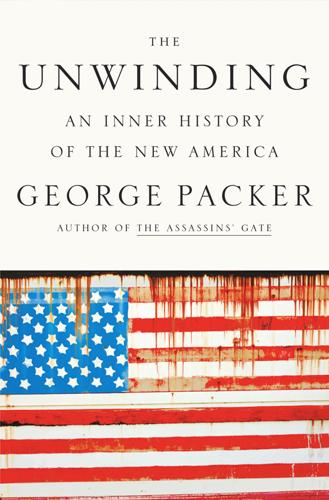
The Unwinding: An Inner History of the New America
by
George Packer
Published 4 Mar 2014
When you were on a prop desk and getting it right, there was nothing better on Wall Street, and for two years he got it right. He earned close to a million dollars a year, most of it his bonus—multiples of his previous pay—and he would have made more if he had cared more. He paid off the mortgage on his apartment in the East Village, lived off his salary, and saved the bonus. He didn’t own a car or a boat. He became a connoisseur of New York’s best restaurants and picked up the tab for his starving-artist friends. He didn’t need more. It wasn’t just American mortgages that blew up the world—it was global credit. Kevin was part of that, and during the middle years of the decade he watched the credit bubble inflate.

To Save Everything, Click Here: The Folly of Technological Solutionism
by
Evgeny Morozov
Published 15 Nov 2013
Bianca Bosker, a technology journalist, hints at this digital and highly automated future when she complains that she no longer finds places to eat; rather, they find her. Or, in the parlance of Silicon Valley, “search” is displaced by “discovery.” She writes,My web searches for new neighborhood joints—“best brunch Flatiron NYC,” “cafe East Village”—have given way to Foursquare insta-alerts that pop up on my phone to tell me there’s a nice place nearby. Thanks to the app’s “List” feature, which allows me to subscribe to lists of must-try destinations compiled by friends and city guides, Foursquare lets me know whenever I’m close to a restaurant that has scored an endorsement.
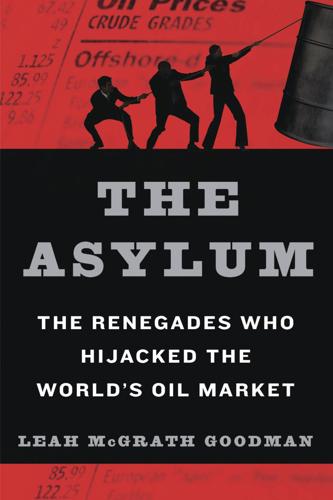
The Asylum: The Renegades Who Hijacked the World's Oil Market
by
Leah McGrath Goodman
Published 15 Feb 2011
He cast about for a few more years before finding his calling—or the precursor to his calling—trading cattle futures at Nymex back when neither he nor pretty much anyone else had ever heard of the place. Randy Warsager, the soft-spoken Nazi hunter who happened to be Schaeffer’s roommate when he moved to New York’s East Village in the 1970s, persuaded him to try trading. Schaeffer began losing money almost immediately. But at least he was no longer bored. He took out a trading account in 1976 at Merrill Lynch, where Warsager also kept an account. Schaeffer was not a natural risk-taker, so he bought one cattle contract and sat on it for ages.
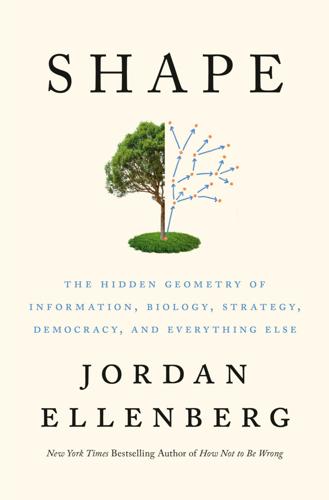
Shape: The Hidden Geometry of Information, Biology, Strategy, Democracy, and Everything Else
by
Jordan Ellenberg
Published 14 May 2021
This is the three-hundred-dimensional version of the Pythagorean Theorem, though Pythagoras himself might well have rejected this characterization of something so far from physical geometry. * The official municipal boundaries of New York are pretty broad, so let’s stipulate that the precise geographic location of “New York” meant here is the Strand Book Store in the East Village. * Word2vec actually works with “lexical tokens,” which are usually words but are sometimes names or short phrases. * Why the diagonal? I take that to be a good analogue of “diameter” since it’s the greatest distance between any two points in the figure. * This might sound a little bit like the coordinates Poincaré used for the three-body problem, where he needed to track not only the position of each planet but the direction of its motion; yep, same deal
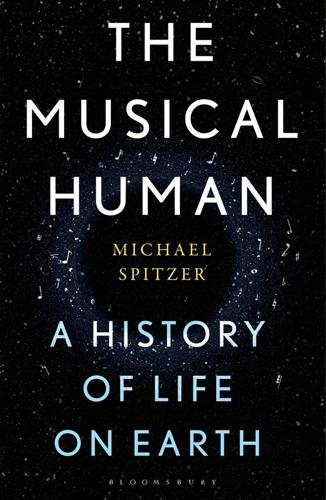
The Musical Human: A History of Life on Earth
by
Michael Spitzer
Published 31 Mar 2021
And there are also nodal points when the entire audience’s attention comes together, such as when it is time to clap. I suspect that many of the 2,000 people at the Phil come to be alone, to enjoy their personal feelings within a lonely crowd, pinned down by the music and free of distraction. If people want ecstasy (or recreational Molly, MDMA), then there is plenty of that to be had at the Zanzibar, the East Village Arts Club, Studio 2, Lomax and dozens of other venues that dot Liverpool City. They forgo the stillness of the temple for the frenzy of the cave. Caves are where it all began. The Cavern is where it all began. Dark, dank, cramped, sweaty, and with terrific acoustics, the original Cavern Club in Matthew Street heaved with an ecstatic mob, the flesh-and-blood singers standing within reach.

Lonely Planet Wales
by
Anna Kaminski;Hugh McNaughtan
Symonds YatVIEWPOINT (www.wyedeantourism.co.uk; Symonds Yat, GL16 7PW; pc) From Monmouth it’s a jump over the Wye to the English side of the AONB to one of its most majestic viewpoints at the forest-ensconced hamlet of Symonds Yat, divided into an ‘east’ settlement and a ‘west’ either side of the river. Symonds Yat Rock (east side) is the beauty spot where the impressive river gorge vistas reveal themselves. There are great hiking trails here, including one connecting the rock with Symonds Yat East village. From outside the Saracens Head pub in Symonds Yat East a historic hand-pulled ferry (£1/50p adult/child) connects east side with west side. The red-and-white house nestling in the trees above the Saracens Head pub has recently starred as Otis and Jean’s house in popular Netflix TV series Sex Education.
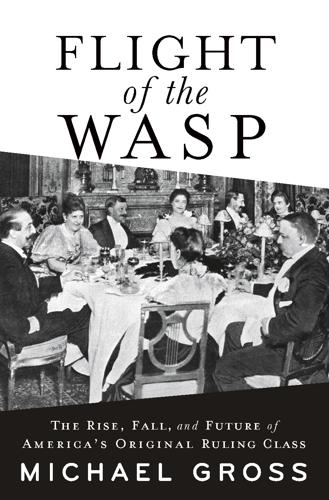
Flight of the WASP
by
Michael Gross
His will ordered that the bulk of his $4 million fortune go to his nephew, Lewis and Margaret’s eldest child, but only if he abided by a provision in the document and swapped his first and last names to become Rutherfurd Stuyvesant, which he did that same year. The Stuyvesant-Rutherfurd family’s papers at the New-York Historical Society shed no light on an oft-repeated claim that at some point Peter Gerard and Helena Stuyvesant had adopted the boy. Regardless, as an heir to Peter Gerard, owner of real estate up and down what would become New York’s East Village and Stuyvesant Town, Rutherfurd Stuyvesant, who was known as Stuyvie in the family, inherited remarkably valuable property.a Stuyvie Stuyvesant had four younger siblings. One of his sisters died young and unmarried; the other married an American ambassador to Italy and France. Though it’s often said that an aversion to the spotlight is an inbred characteristic of American patricians, the two younger Rutherfurd brothers emerged as well-known society figures during Theodore Roosevelt’s Progressive Era and found themselves under constant public scrutiny.
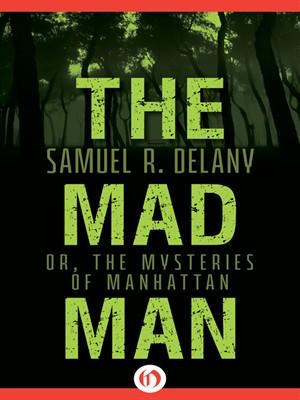
The Mad Man: Or, the Mysteries of Manhattan
by
Samuel R. Delany
Published 1 Jun 2015
Sitting in the front row, down in what no doubt was once the loge, off to the side sat a tall guy in his late twenties/early thirties. I’d already seen him wandering about the theater two or three times downstairs. He wore a black leather jacket, black jeans, and a black plastic cap. But it wasn’t your standard motorcycle drag that signals SM interests; rather, he seemed some East Village local who was simply into the “punk” look you see all up and down the streets of the neighborhood outside. He was playing with himself. I slipped in beside him—I’d been sure he was wearing black pants when I’d seen him before. But now he was in white ones—then, no, I realized seconds later: his pants were black, but he’d pushed them all down around his ankles, so that his pale legs were what I saw!

Facebook: The Inside Story
by
Steven Levy
Published 25 Feb 2020
Zuckerberg finally let the project go forward, but Instagram was directed to agree that the IGTV videos would be posted to Facebook by default before it could launch the product. The launch, which was to take place in Menlo Park with a live connection to journalists and influencers gathered in Facebook’s East Village New York City office, was a disaster. Instagram had contracted with a top-end events organizer, which produced an elaborate set with a revolving stage. It didn’t work, and the presentation bombed. By the time a newly improvised presentation was ready, many of the journalists were gone. And then Systrom left for his paternity leave

Frommer's London 2009
by
Darwin Porter
and
Danforth Prince
Published 25 Aug 2008
Amenities: Room service; massage; laundry service; same-day dry cleaning, nonsmoking rooms. In room: A/C, TV, minibar, coffeemaker, hair dryer, iron, safe, trouser press, Wi-Fi. SHEPHERD’S BUSH EXPENSIVE K-West Hotel & Spa Finds This cutting-edge hotel is where South Beach (Miami, that is) meets New York’s East Village. A hotel as modern as tomorrow has been fashioned out of the former home of the BBC administration center. In spite of its off-center Shepherd’s Bush location, it attracts cool guests, especially media mavens and touring musicians. The latter can be seen rocking all night long in the chic K Lounge and recovering the next day with an Asian head massage in the spa.
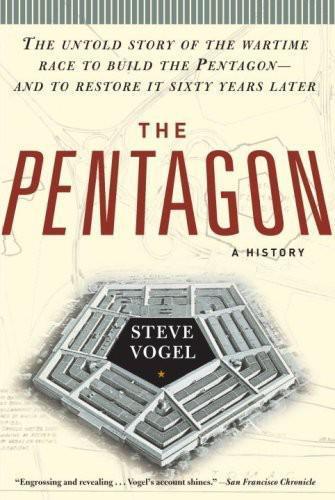
The Pentagon: A History
by
Steve Vogel
Published 26 May 2008
Abbie Hoffman, cofounder of the radical Youth International Party (Yippies) and a showman in the tradition of P. T. Barnum, announced plans to use the psychic energy of thousands of protesters to levitate the Pentagon three hundred feet in the air, where it would turn orange and vibrate until all evil spirits spilled out. Several hundred hippies in New York City’s East Village practiced on a table-size cardboard model, chanting ecstatically as wires raised the model Pentagon—illuminated by psychedelic lights—into the air. Hoffman and cohort Marty Carey also made a reconnaissance of the Pentagon to calculate how many “witches” would be needed to encircle the building.

Lonely Planet London City Guide
by
Tom Masters
,
Steve Fallon
and
Vesna Maric
Published 31 Jan 2010
It’s free, open late and great fun. DOGSTAR Map 7733 7515; 389 Coldharbour Lane SW9; 9pm-3am Fri & Sat; Brixton You’ll have to push your way through the huge downstairs bar (Click here) of this converted pub to get to the house-music club upstairs, but that’s what all the Brixton clubbers do. EAST VILLAGE Map 7739 5173; www.eastvillageclub.com; 89 Great Eastern St EC2; 5pm-1am Mon & Tue, 5pm-3.30am Wed-Sun; Old St The old Medicine Bar’s popularity flagged so much that it was only a matter of time before someone snapped up the fine location and did something worthwhile with it. Well, finally the space has been transformed into a club that has seen house lovers flocking from all over London.
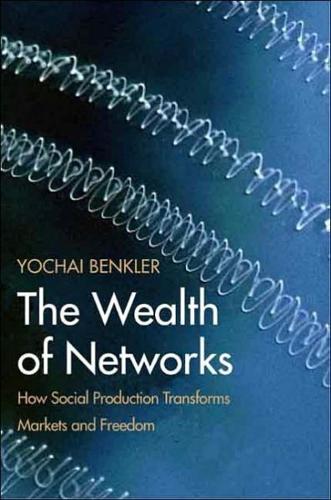
The Wealth of Networks: How Social Production Transforms Markets and Freedom
by
Yochai Benkler
Published 14 May 2006
There is no need to assure that all people in all contexts continue to behave as couch potatoes for the true scope of the networked information economy to be constrained. It is enough that the core enabling technologies and the core cultural practices are confined to small groups-- some teenagers, some countercultural activists. There have been places like the East Village or the Left Bank throughout the period of the industrial information economy. For the gains in autonomy, democracy, justice, and a critical culture that are described in part II to materialize, the practices of nonmarket information production, individually free creation, and cooperative peer production must become more than fringe practices.
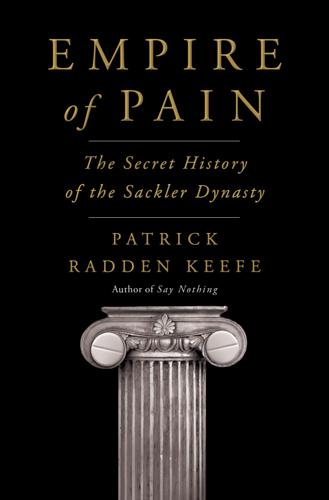
Empire of Pain: The Secret History of the Sackler Dynasty
by
Patrick Radden Keefe
Published 12 Apr 2021
In perhaps her most famous photo, Nan One Month After Being Battered, she stares directly into the camera, her face made up with cherry-red lipstick and penciled brows, her left eye bruised and swollen half-shut from a beating administered by her boyfriend. Goldin was living in a loft on the Bowery, in the East Village, when the AIDS crisis hit. Many of her closest friends and artistic influences were gay men, and one by one they started dying. Suddenly she found herself taking pictures in hospital wards and hospices. She eventually grew close to the gay artist and activist David Wojnarowicz, who was close with another friend and mentor of hers, the photographer Peter Hujar.
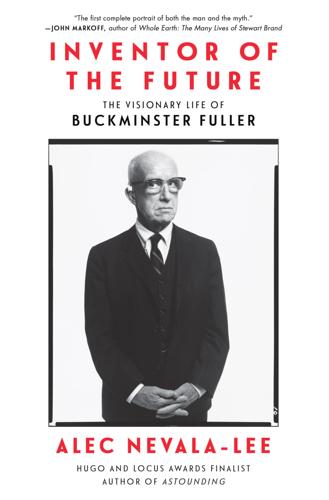
Inventor of the Future: The Visionary Life of Buckminster Fuller
by
Alec Nevala-Lee
Published 1 Aug 2022
“brilliantly exploited”: RBF, CP, 236. “the determination of the students”: Ibid. “sitting ducks”: Ibid. “He was supposedly coming in”: Syeus Mottel, Charas: The Improbable Dome Builders (New York: Drake, 1973), 150. For another account of the lecture, see Allan Katzman, “When Will John V. Lindsay Meet Buckminster Fuller?,” East Village Other, April 12, 1968, 4. “who basically spent time”: Mottel, Charas, 22. “completely crazy situation”: Michael Ben-Eli, interviewed by author, April 1, 2019. “They could not see”: Mottel, Charas, 109. “It’s more about involvement”: Ibid., 73. “a New York City Lower East Side gang”: RBF, Inventions, 145.
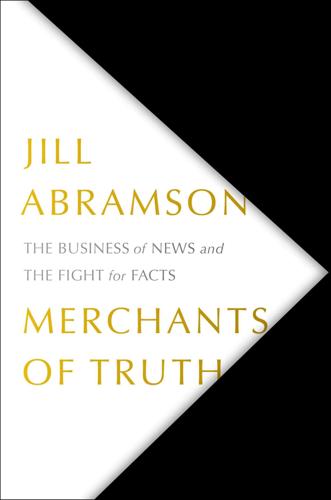
Merchants of Truth: The Business of News and the Fight for Facts
by
Jill Abramson
Published 5 Feb 2019
The problem was a broader management issue: the very wealthy Vice founders had lost touch with the young masses in Brooklyn. Once worshipped, they had both become remote figures. They swooped in for shoots for the HBO show, but neither wanted to be in the field for more than a few days. Alvi had married and was redoing his East Village apartment; Smith had recently had a third daughter. They were no longer the guys who in 1994 had joined forces with McInnes and began making their first millions with naked pictures and gross-out antics. That’s what they built their brand on. Now, despite the gloss of HBO and Emmys, they were facing the ramifications of how they treated women.
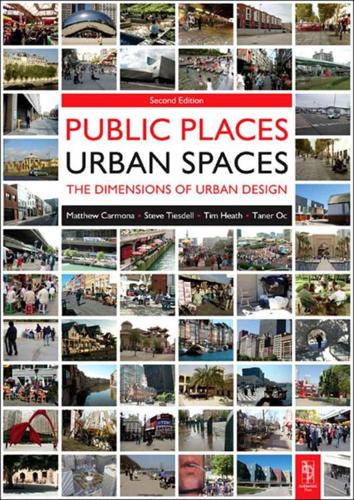
Public Places, Urban Spaces: The Dimensions of Urban Design
by
Matthew Carmona
,
Tim Heath
,
Steve Tiesdell
and
Taner Oc
Published 15 Feb 2010
As decisions taken at this scale have a profound impact on the way settlements function at a local level, they necessitate a creative design process that, when translated to localities, will have a profound impact on the ability to create sustainable, healthy places (see Box 8.4). BOX 8.4 Strategic Urban Design, Dongtan Eco Village Dongtan East Village and East Lake Designed by Arup for the financier/developer Shanghai Industrial Investment Corporation (SIIC), Dongtan is planned to occupy 86km2 at the eastern tip of Chongming Island, close to Shanghai, for an eventual target population of 500 000. Although it is planned to build the project out over a period of 20–30 years, the project has been designed in its entirety from the start to deliver what has been heavily trailed as the world’s first eco-city.

Lonely Planet Chile & Easter Island (Travel Guide)
by
Lonely Planet
,
Carolyn McCarthy
and
Kevin Raub
Published 19 Oct 2015
It’s on the 2nd floor overlooking the plaza and is a good spot to try Chiloé’s own craftbrew, Vertus (porter and golden ale) or excellent make-your-own micheladas (Mexican beer cocktails). Kaweshkar Lounge LOUNGE Offline map (www.kaweshkarlounge.cl; Blanco Encalada 31; cocktails CH$2000-5000) The retro, haphazard design of this diver bar recalls Berlin or New York’s East Village. The cocktails are well mixed, but when we came through, its chalkboard read, ‘We’re not in Lonely Planet but we are great!’, despite the fact it has been listed in the guide since 2009. Ristretto Café CAFE, BAR $ Offline map (Blanco 264; snacks CH$400-1000; closed Sun; ) It’s a shame the best cafe in Chiloé allows smoking, but in the land of Nescafé, you just have to suck it up.

Frommer's Israel
by
Robert Ullian
Published 31 Mar 1998
Business lunch specials are offered from noon to 5pm. 3 Ben Shitah St. & 02/632-5001. Reservations useful. Main courses NIS 70–NIS 110 ($18–$28/£9–£14); lunch specials vary daily. AE, DC, MC, V. Daily noon–5pm and 7pm–midnight. Inexpensive Value SOUP This little “souperia” looks like an outpost in Berkeley, Cambridge, or New York’s East Village—a mix of assorted old tables, chairs and sofas, candlelight, mellow background music, and garage and attic-sale decor. Marak means “soup” in Hebrew, and the menu consists of very good vegetarian soups (a different selection every night), served with bread and pesto. Among the standards are sweet potato; lentil with wine; spicy Yemenite tomato, onion, and cheese; and tomato with anise.
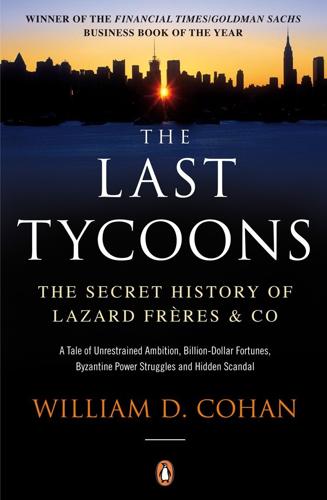
The Last Tycoons: The Secret History of Lazard Frères & Co.
by
William D. Cohan
Published 25 Dec 2015
Her name was Kate Bohner. She was athletic, tall, and striking, with long blond hair and long, muscular legs. When Bohner was in her junior year at Penn, she happened to be at a dinner party in New York on Valentine's Day 1987. She was seated next to Kim Taipale, an up-and-coming vice president at Lazard living in the East Village. They got to talking, and Taipale asked Bohner what she was thinking about doing for the summer between her junior and her senior years. Bohner said something about working at Goldman Sachs, and Taipale urged her to come to Lazard instead. Michel had just decided to shake things up at Lazard Brothers by installing a team of Lazard New York bankers there with the hope of having some of the American M&A techniques rub off on the British (who, of course, were disdainful of the whole exercise).
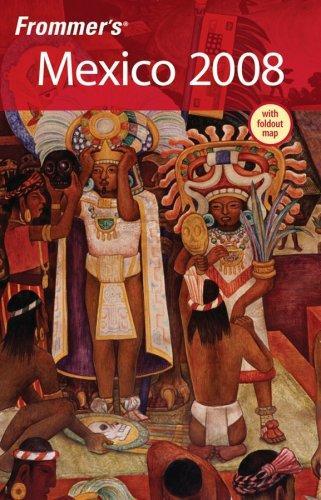
Frommer's Mexico 2008
by
David Baird
,
Juan Cristiano
,
Lynne Bairstow
and
Emily Hughey Quinn
Published 21 Sep 2007
In recent years, the Centro Histórico downtown has earned a reputation for having a number of hip and edgy bars and clubs concentrated within walking distance. The posh Polanco neighborhood is known for its perennially hot nightclub scene, and in recent years many of the trendiest nightspots have opened in the Condesa and Roma neighborhoods (reputedly the SoHo of Mexico City, though the nightlife scene is more akin to New York’s East Village). Some of the city’s most exclusive nightclubs lie in the Lomas area. In the south of the city, San Angel remains highly popular, although it’s a bit of a drive if you’re not already staying in that area. Most bars don’t even begin to get going until around 10 or 11pm and usually stay open until at least 3am; nightclubs get started Tips Crime at Night Make sure to leave valuables—especially watches and jewelry—at your hotel, and bring only the cash you will need.
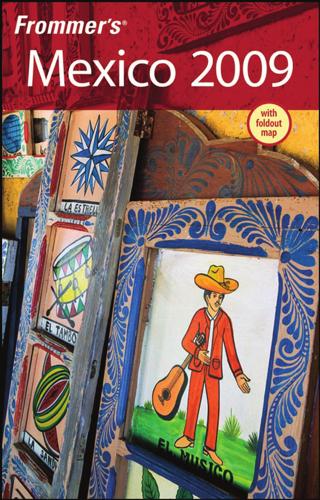
Frommer's Mexico 2009
by
David Baird
,
Lynne Bairstow
,
Joy Hepp
and
Juan Christiano
Published 2 Sep 2008
In recent years, the Centro Histórico downtown has earned a reputation for having a number of hip and edgy bars and clubs concentrated within walking distance. The posh Polanco neighborhood is known for its perennially hot dining and bar scene, and in recent years many of the trendiest nightspots have opened in the Condesa and Roma neighborhoods (reputedly the SoHo of Mexico City, though the nightlife scene is more akin to New York’s East Village). Some of the city’s most exclusive nightclubs lie in the Lomas area. In the south of the city, San Angel remains highly popular, although it’s a bit of a drive if you’re not already staying in that area. Most bars don’t even begin to get going until around 10 or 11pm and usually stay open until at least 3am; nightclubs get started after midnight and continue into the wee hours.

The power broker : Robert Moses and the fall of New York
by
Caro, Robert A
Published 14 Apr 1975
In fact, there soon sprang up a circle at whose heart were Haddad and Gleason but which included also Woody Klein of the Telly, the Journal-American's Marty Steadman, Peter Braestrup of the Herald Tribune —and a reporter from the underground, thirty-one-year-old Mary Perot Nichols; born a Philadelphia Main Line Wasp, she had moved to the East Village, begun crusading against Moses' proposed road through Washington Square Park, and had seen at a glance truths about Moses' whole method of operation that no one, seemingly, had understood before; her only journalistic connection was The Village Voice, but her observations in it were in many ways the most penetrating printed up to that time.